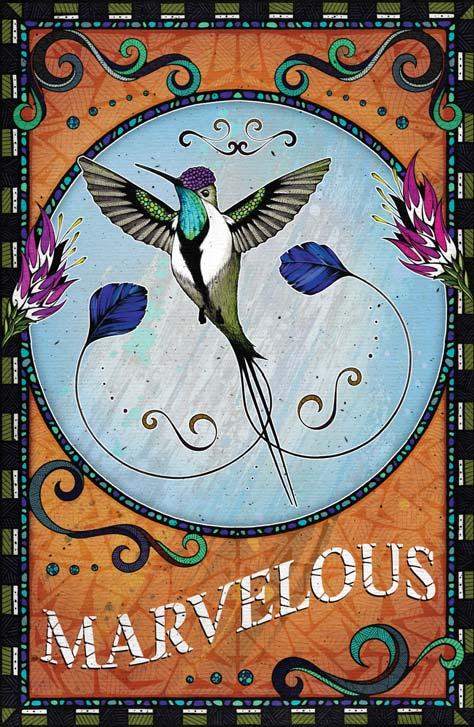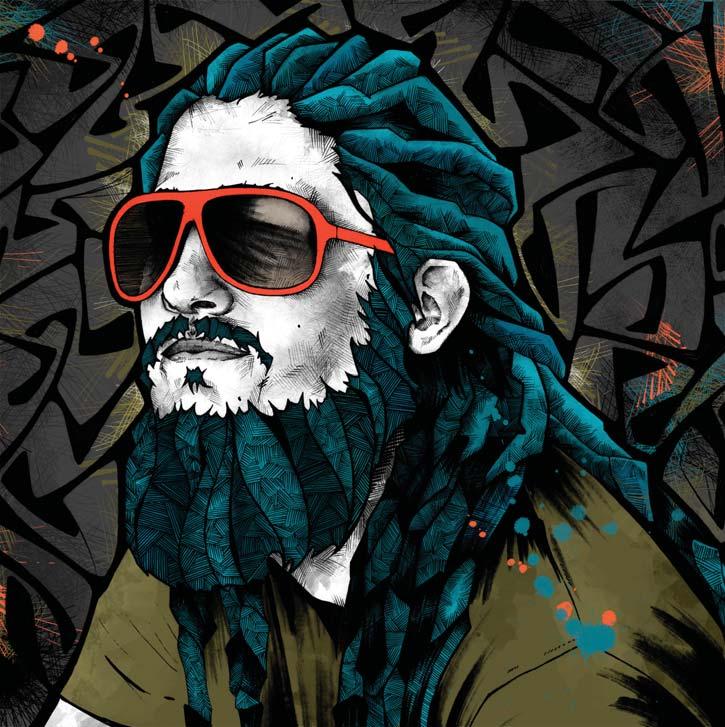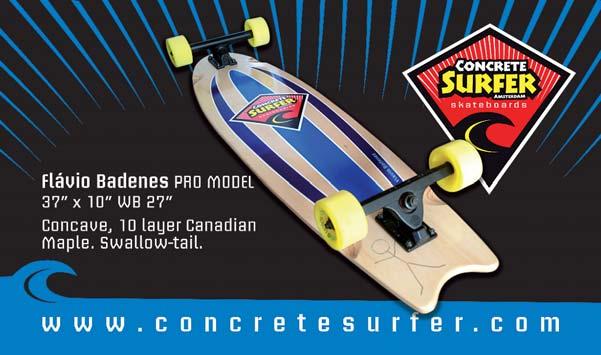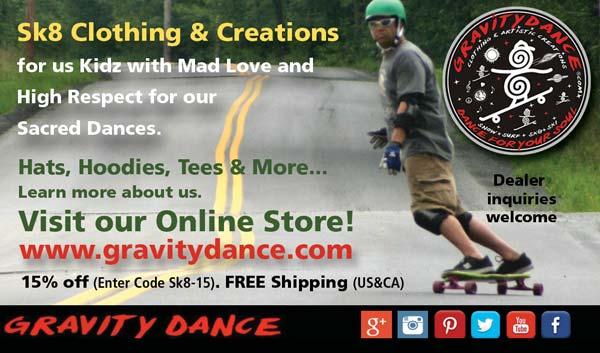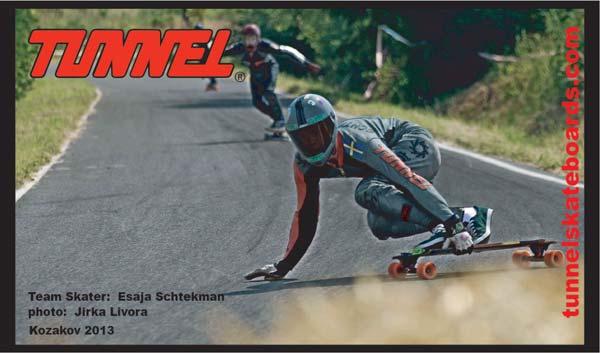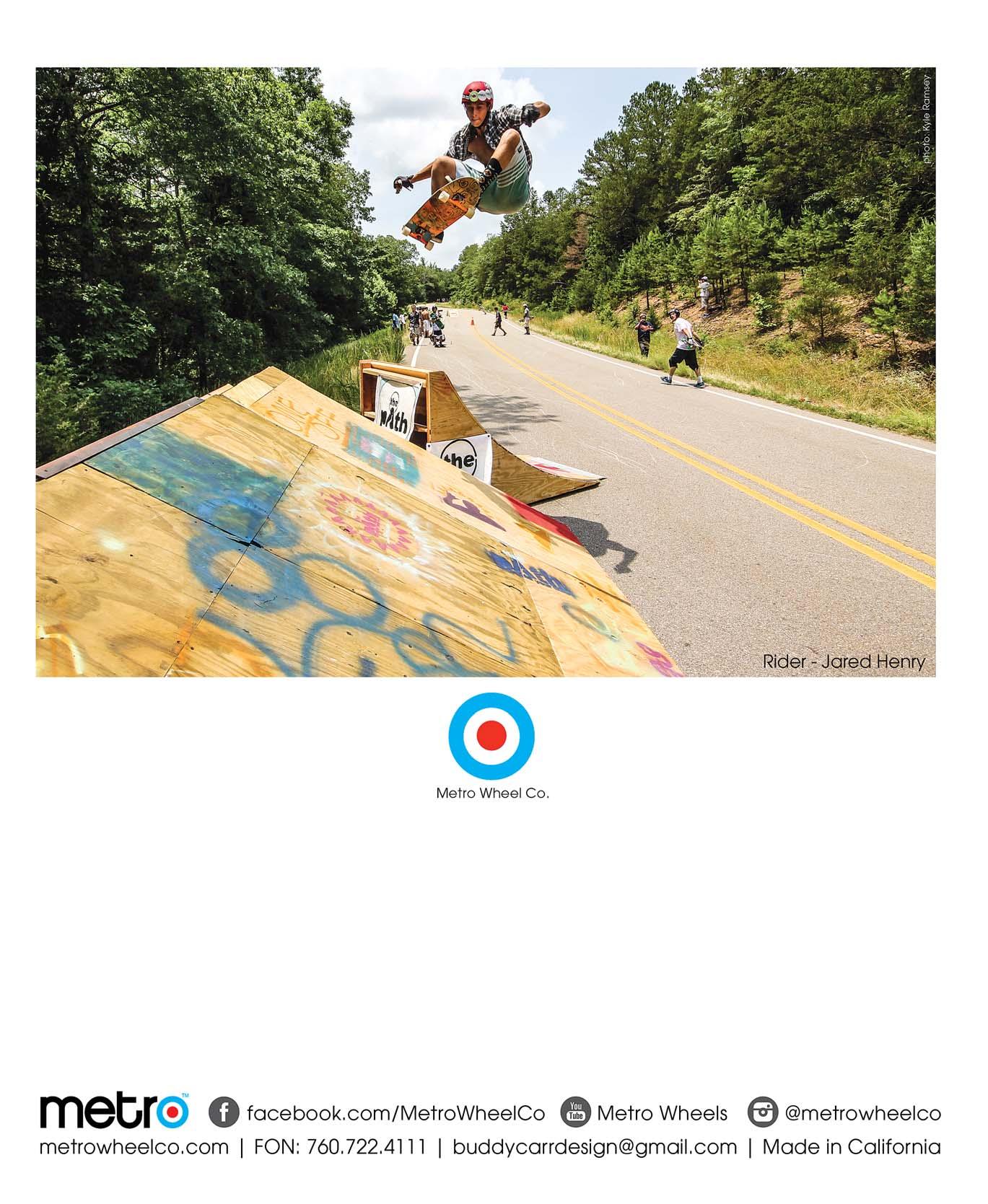GIRL IS NOT A 4 LETTER WORD
TALES FROM VANCOUVER, PERU AND OKLAHOMA
NORTH


AMERICAN RACE ROUNDUP







































































I just learned that skateboarding has been banned pretty much everywhere in Grey County. Chances are you’ve never heard of Grey County. It’s outside of the Greater Toronto Area. It’s a well-known vacation area with a popular ski resort called Blue Mountain within its territory. The hills have brought longboarders. Unfortunately, four deaths have been attributed to longboarding there, and the regional council has decided to ban skateboarding everywhere. There is resistance to this action, and we will be documenting it in a future issue. But the truth is that the more longboarding explodes in popularity, the more it gets put under the microscope.

The question is, what do you do? It’s difficult to challenge authority. It’s difficult to challenge the status quo. It’s difficult to rally people to action. But the hard truth is simply this: If you don’t act now, future generations of skaters will find it much more difficult to ride. The activity you love will be banned in more and more areas. It’s up to all of us who step on a longboard to step up.
But stepping up doesn’t have to be painful. It doesn’t have to be a drag. It can be something as simple as confronting a falsehood. You can spread good vibes. Your actions will indeed have consequences. Banning longboarding is not the answer.
Take all that positivity you get from longboarding and channel it toward a better future. In this regard I am delighted to report that things are moving along well with Longboarding for Peace. Practically every day, someone contacts me and asks how they can help. We have a number of programs cooking and the buzz is growing. If you want to help change the world through the act of longboarding, just email me at mbrooke@interlog.com. Then again, sometimes the act of just getting out there and riding can change the world.



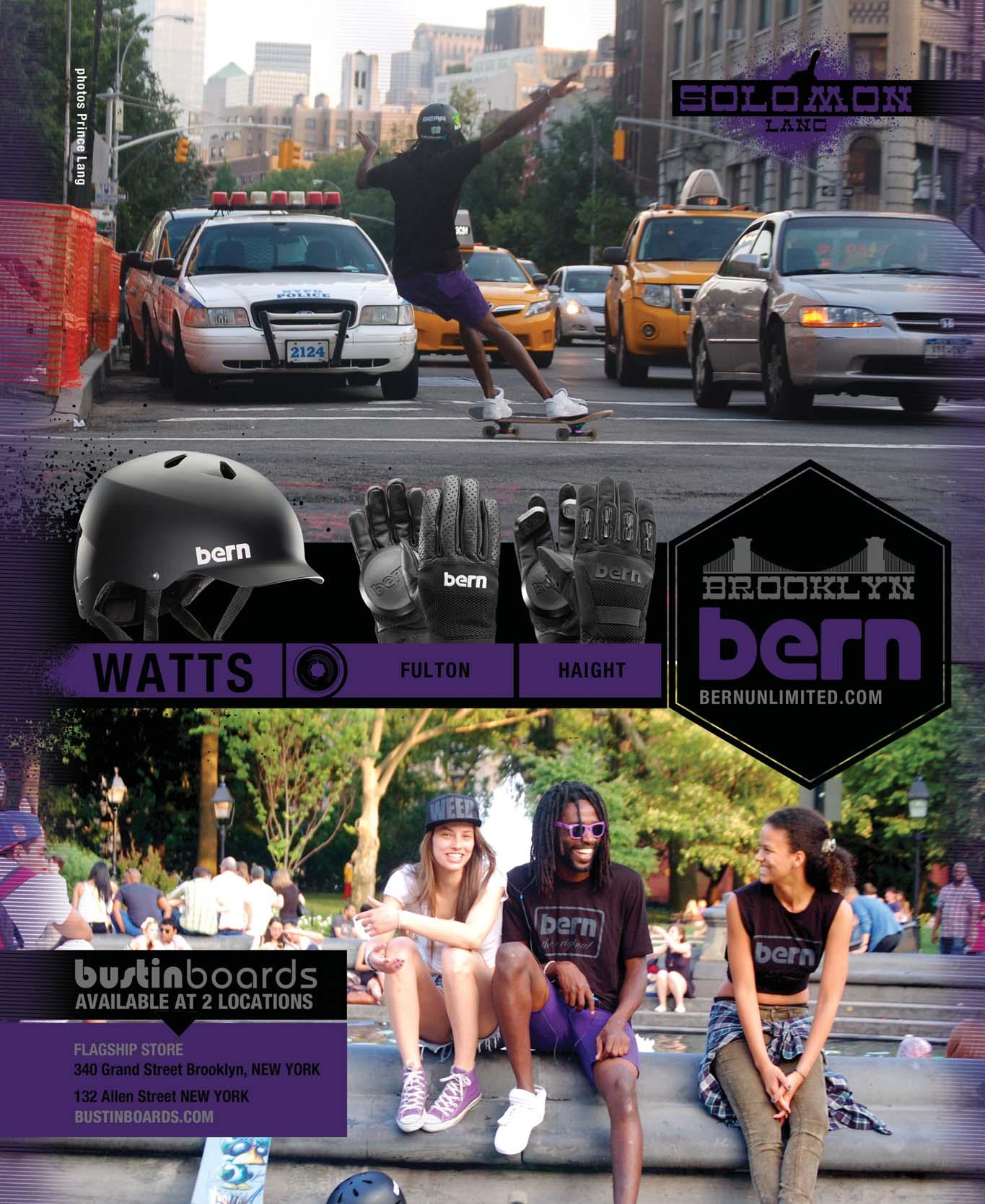


We all know that skateboarding keeps us grounded. It keeps us fully conscious and present in the moment. It gives a sense of freedom and allows us to stay bal-
anced and centered. From bombing hills to freeriding to simply commuting by board, the feeling is undeniable. Many nonskaters can’t really understand how a piece of wood, some metal and a few gobs of urethane can lead to a sense of being grounded. Ironically enough, if you can’t understand the joy and satisfaction that people get from riding skateboards, you might be a good candidate to try riding one.
Longboarding has opened up a huge amount of terrain that was previously ignored. It’s also brought in people who either left skateboarding years ago or wouldn’t normally think of riding (welcome aboard, ladies!). This sense of exploration is hugely beneficial to skateboarding as a whole. It speaks to the concept of no barriers and no limits. Charging down a dirt path on your board? Why not! Older than 65? No need to retire from enjoying skateboarding. Who says boards, wheels or trucks have to be a certain way? If you can dream up something that stokes the hell out of people, then get busy. There are no rules as to what counts — only that what you think counts, rules. If skateboarding really is about freedom, then you should feel comfortable questioning any preconceived notions about it.

But sometimes challenging fellow skaters’ ideas can lead to criticism. There are times when you might encounter what I call the "herd mentality," also known as “wehavealwaysdoneitthisway” disease. Myopia and elitism can rear their ugly heads. If you have the misfortune to meet folks who thrive on being negative and practice exclusion and intolerance as their hobby, remember not to take it personally. All that’s happened is they have become ungrounded — which probably means they need to spend more time skating and less time hating. They just need to prioritize!
Enjoy the issue!
Michael Brooke, PublisherVol. 12 No. 2 FALL 2013
PUBLISHER/EDITOR
Michael Brooke | mbrooke@interlog.com
ART DIRECTOR
Mark Tzerelshtein | MarkintoshDesign.com
CORRESPONDENT
Jim Kuiack
I.T. DEPT. HEAD
Rick Tetz of CalStreets.com
COPY EDITOR
Jonathan Harms
PROBLEM SOLVER
Bud Stratford | budstratford@aol.com
HEAD OFFICE
1136-3 Center Street, Suite 293, Thornhill, Ontario L4J 3M8
Ph: 905.738.0804
SKATESHOP DISTRIBUTION
Buddy Carr Designs PO Box 1895, Carlsbad, CA 92018 tailtapinfo@yahoo.com
Ph: 760.722.4111
CONTRIBUTORS(In order of appearance): Khaleeq Alfred, Kolby Harris, Cody Shea, Yahav Trudler, Rafael Fazano, Ray Rae Goldman, Ron Rauto, Steve Mark, Christine Maier, Petra Moser, Valeria Kechichian, Oti Fernandez, Arian Chamasmany, Matthew Kienzle, Joey Bidner, Carlos Lascoutx, Jon Steele, Don Sheffler, Scott Wippermann, Paul Wright, Isaac Farin, Cindy Whitehead, Ian Logan, Jacob Lambert, Hippie Mike, Mike McKinlay, Brooke McAllister, Greg Nicholls, John Krieger, Dusty Ray, Liz Ray, Diego Cardenas, Alan Pinto, Ricardo Pigati, Goyo Barragán, Red Bull, Rob Ashby, Patrick Dumont, Pierre Hazera, Andy Turner, Alfredo "Red" Prados, Mikey Seibert, Michelle Chaney, Chris Bennett, Andreas Preis.
COVERS:
1.Jonas Richter leads the pack at Maryhill.
Photo: Khaleeq Alfred
2.Chance Gaul takes flight at the Cathlamet Downhill Corral. Photo: Cody Shea
3.Constable Troy Derrick of the RCMP.
Photo: Kolby Harris

Concrete Wave is published by North of La Jolla Inc.
Subscriptions (5 issues) are US$26 FIRST CLASS or CAN$26. Address change? Mag not arriving? Email us... don’t go postal. We can sort it out. mbrooke@interlog.com. We will notify you when your subscription expires. Publisher’s permission is required before reproducing any part of this magazine. The views and opinions expressed in Concrete Wave are not necessarily those of the publisher. We happily accept articles and photos. Please contact the publisher directly at mbrooke@interlog.com before you submit anything. We are looking for a variety of stories and images as long as they are skate-related.
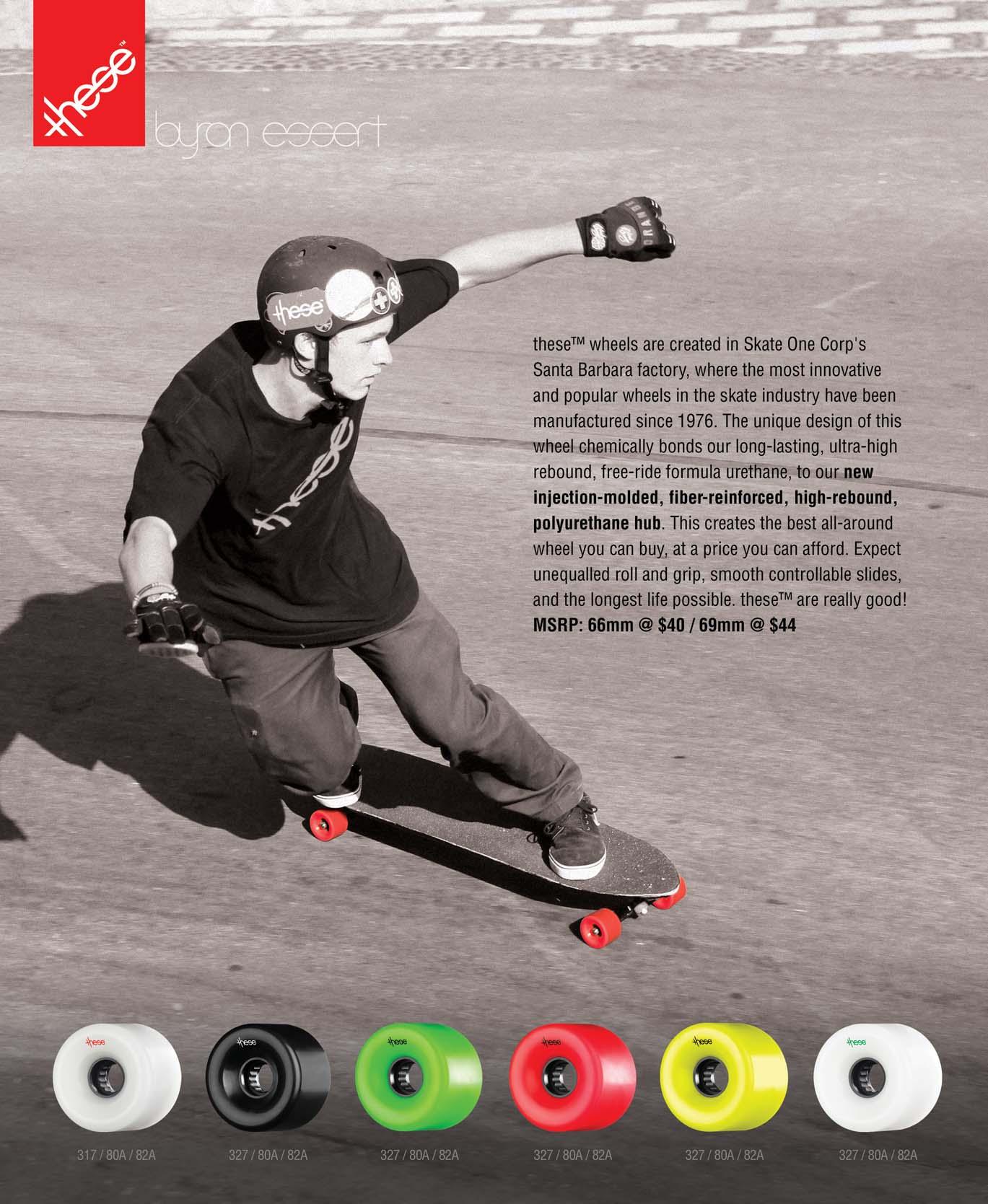

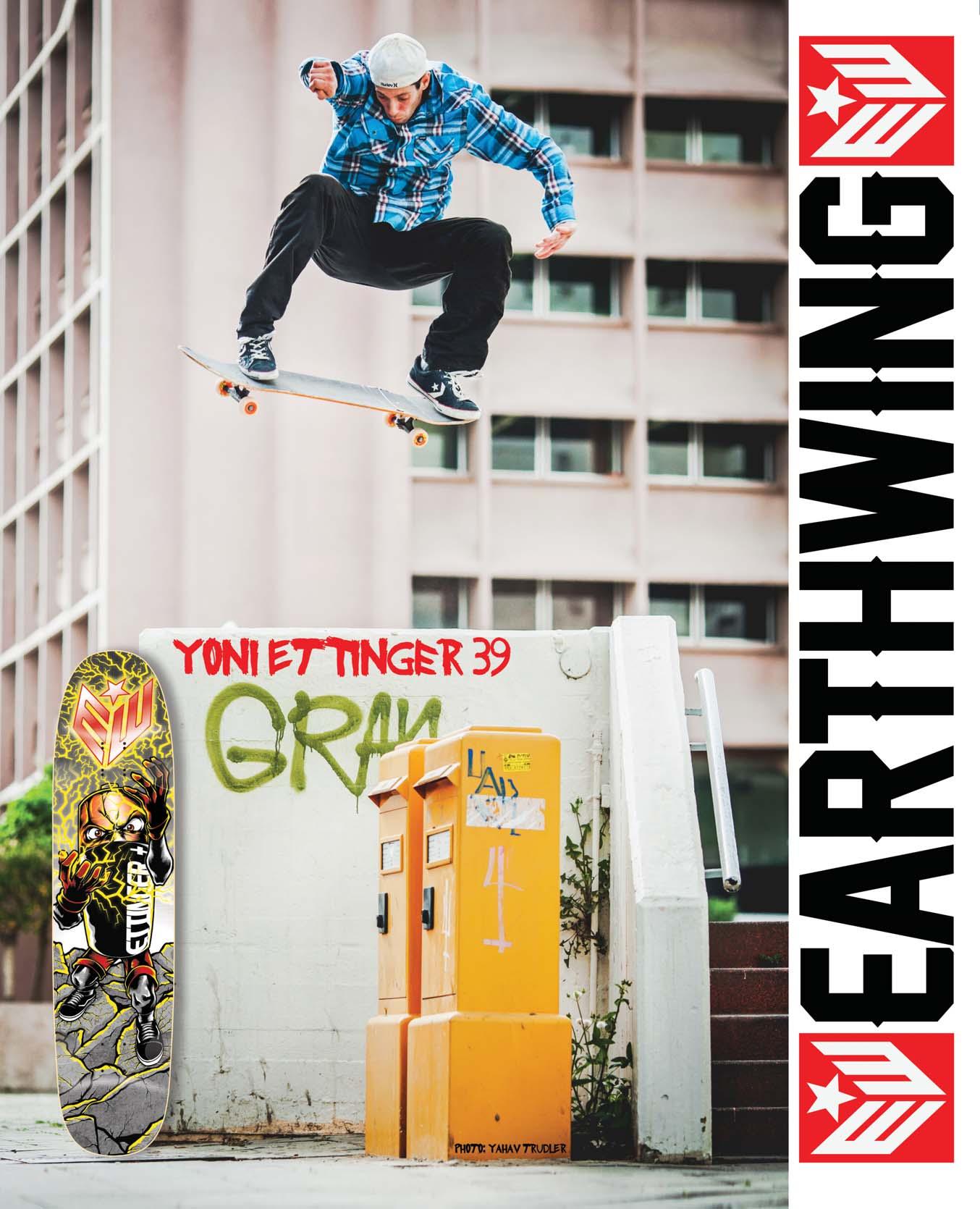



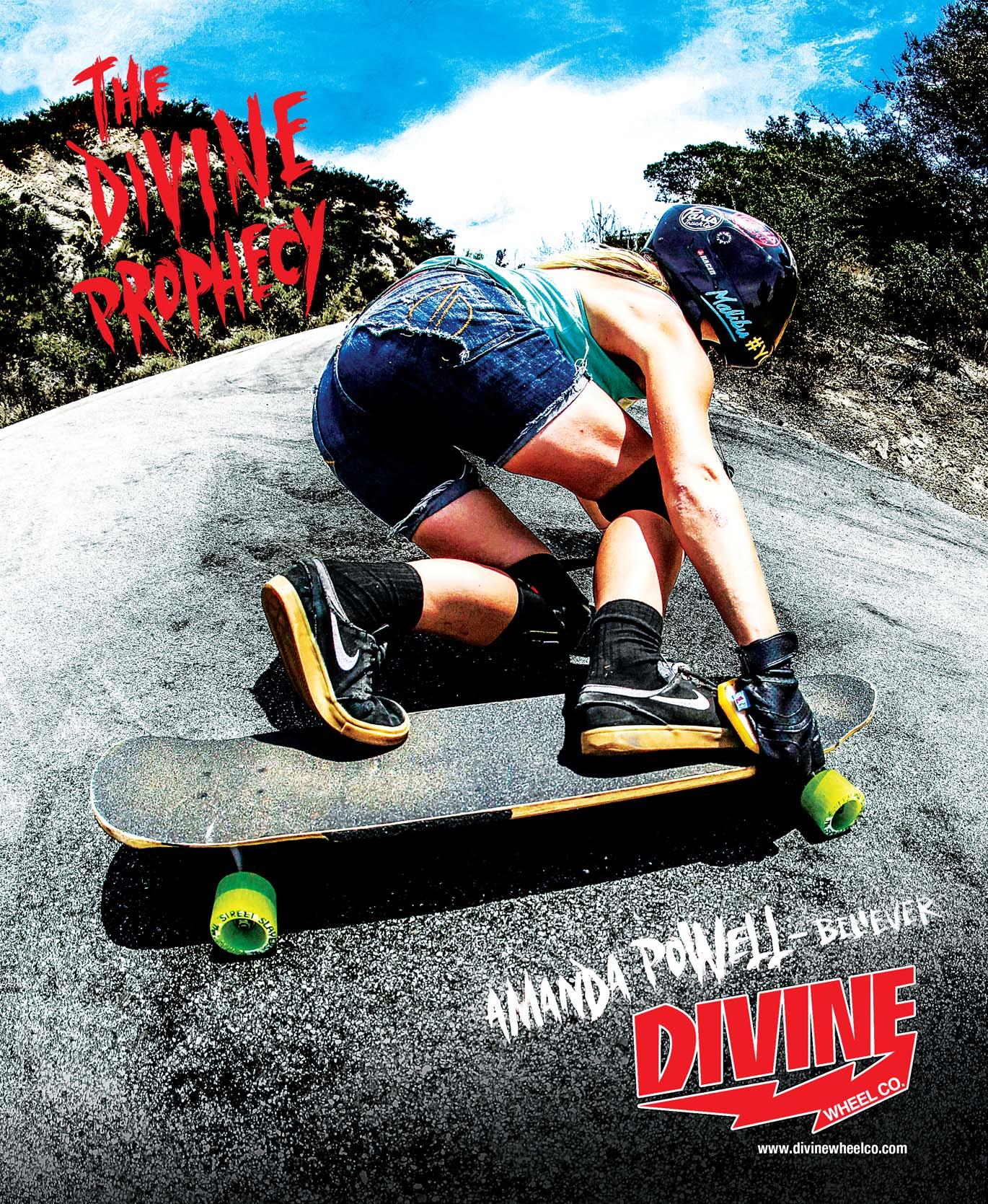
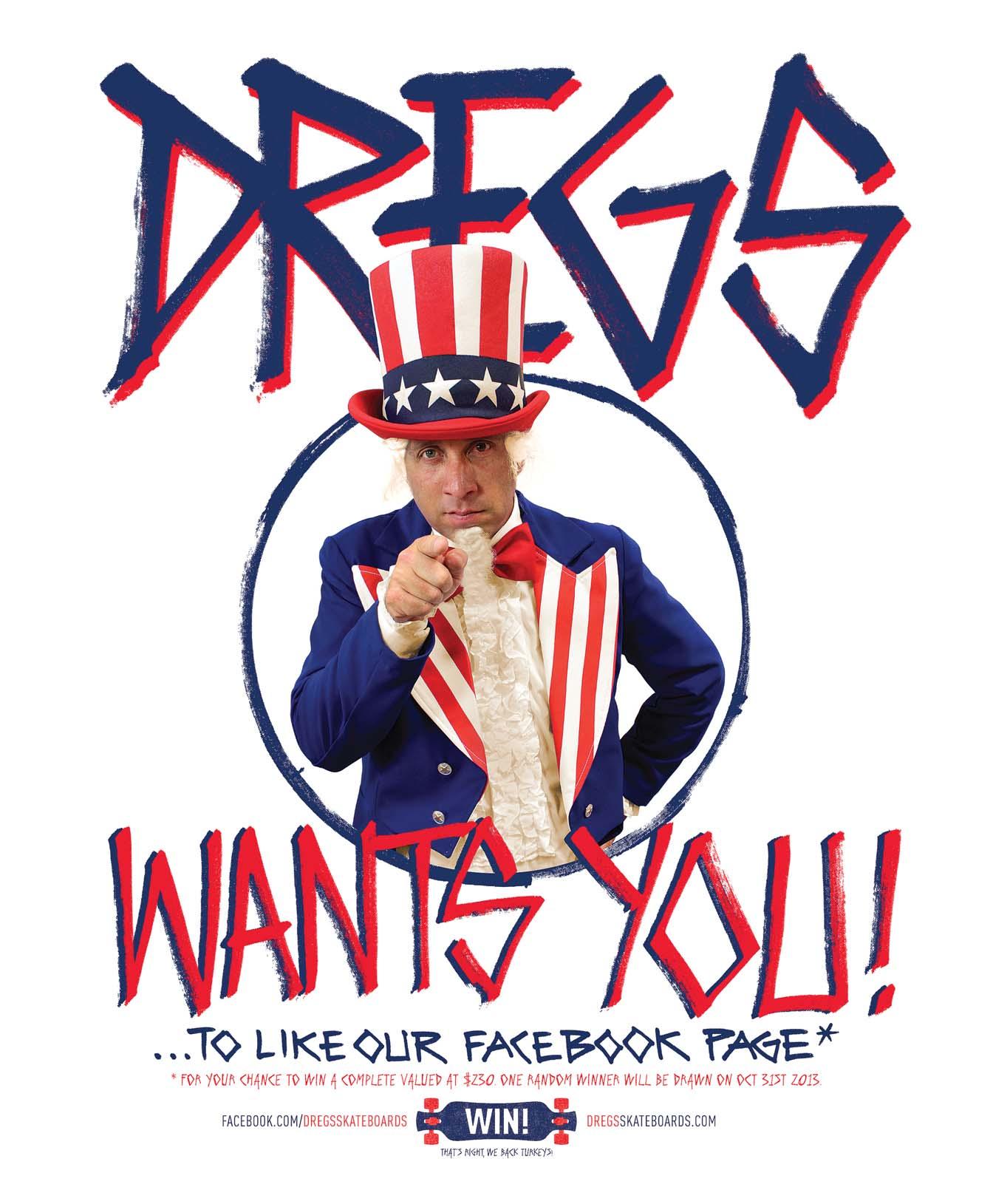

The Tesseract integrates rocker, wheel well flares, W concave and multiple wheelbase options into a lightweight package perfectly sized for big mountain roads, slide jams and campus manual pads alike. loadedboards.com


The FR7 features two unique impact liner options, a stylish visor that does not impede vision, 12 vents and a lowprofile, classic skate-inspired fit. Available in five colors and a limited-edition artist series with graphics by skateboarder Emmanuelle Daigle. predatorskateboarding.com



This is refined and upgraded grip tape for all your skateboarding needs. Each pack contains four 12” x 12” squares of grip, which you can use to cover your entire board or spread out among your whole quiver. And yes, the packaging doubles as a wicked stencil. Stop slippin’ and Hammer your feet to the board. Available in three colors exclusively at landyachtz.com and authorized dealers worldwide.
Kryptonics. The name brings a smile to those who rode that magic urethane during the 1970s “Golden Age of Skateboarding.”

Resilient urethane formulas, multiple durometers and wheel sizes measured in millimeters. Whether you rode Kryptonics back in the day, or only know of their legendary status, you will now be able to experience the magic yourself. Dusters California is bringing back the original Kryptonics Star*Trac line of wheels. The game-changing classic red 78A, the new blue 82A and the green, now an 86A hardness, will soon be available in 60mm, 65mm, 70mm and all new 75mm size. kryptonicswheels.com
By popular demand Sk8Kings has expanded its line of skid plates and heavyduty gear bags. King Plates now come in eight sizes –from 4” to 9” with round or blunt edge – to suit most longboards and old-schoolstyle decks. Choice of black or white with steel sex bolt mounting hardware included. For those times when you need to pack it up and hit the road, choose from three sizes of heavy-duty bags: 36”, 39” and 44”. These soft-sided padded bags are roomy enough for two completes and plenty of accessories. sk8kings.com
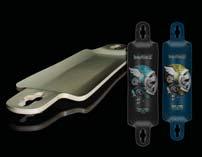
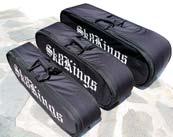
Bustin has released a trio of new products. The BGDK is a perfect mix of all-around skate, freeride, freestyle and downhill mixed into one board. The 41.5” BGDK shares qualities of our Yoface lineup but combines larger wheelbase options with a more aggressive concave to create the ultimate do-it-all hillslaying machine. The Five-O Snipe wheels are an extension of the Five-O series and feature a stone-ground square lip and wider contact patch than other wheels in the Five-O lineup. The combo of super-slidey thane, a large contact patch, square lip and overall greater volume of thane makes these wheels super fun right out of the box, whether you intend to grip a decent line or slide through a turn, and most of all, they last waaay longer. Finally the 2013 Ibach Series has just launched. It is a technically better version of the classic dropped-platform deck. Concave is retained through the entire platform, from tip to tail, ensuring stiffness. Light enough to race, stiff enough to be confident on the fastest of hills. Lowslung, easy to slide and incredibly stable and controlled. bustinboards.com
Zombie Bones precision trucks have been a long time in the making. With the patentpending pivot alignment system, kingpin locking system and unique washers, the trucks are truly one of a kind. zombiebonestrucks.com
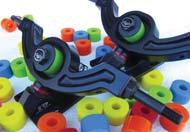

Artist Erik Abel has partnered with Sector 9 to design an Artist Series that was released in June 2013. The series includes four highly stylized completes featuring Abel’s signature graphical design, geometric patterns and ocean waves. Three of the boards are available in multiple colors. abelarts.com and sector9.com

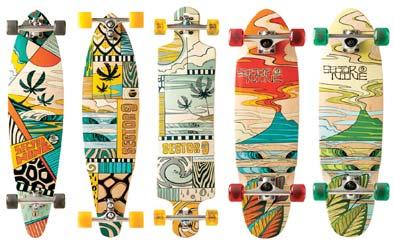

Coming in at 80mm, the Kegels are the biggest wheels in the Orangatang lineup and are the wheels that Patrick Switzer has been racing on for the last little while. A cantilevered outer lip with a straight profile is pliable enough to hug the road for grip while also ensuring consistent performance as the wheel wears. The shorter inner lip features a subtle inward bevel for race-worthy traction and predictable drifts. orangatangwheels.com
The return is finally here!
Late last year Five Mile Skateboards teamed up with Resource Distribution, and together, went back to the drawing board to reimagine the entire Five Mile line-up. After nearly a year of R & D, the new products have finally come to life and are now in your local skate shops. fivemileskateboards.com
These high-performance longboards are a new design for cruising or bombing hills! Perfect for slides and tons of tricks, each board has concave and rocker from the nose to the back truck. This lowers the center of gravity like a drop-thru but gives you more usable deck. The kicktail is great for ollies. barfoot.com
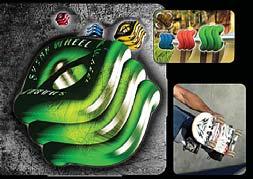

Board builders in the EU can now access skateboard building materials locally. Sarah Jackson and Nicolas Alix have started up Roarockit Skateboard Europe and are supplying the same great Canadian maple veneer, Thin Air Press kits and mold foam previously only available from Canada and the USA. Delivery times will now be far better, with no importing issues. They can support customers in French, German and some Spanish, as well as English. roarockit.eu

Bulletprufe Skate

Blacklock is run by Paul-Britman Rapai, a tree farmer who hails from Southern Ontario. Blacklock uses locally sourced materials along with unconventional methods of construction. Each board is silkscreened by hand and built with an environmentally conscious aesthetic. blacklocklongboards.ca


Denim make superstrong stretch denim for skating. They blend ballistic nylon (among other things) into the actual denim, so there is no need for them to be double layered/lined; the protection and strength are built in. Note that they’re not as strong as leathers (nothing is), but they don’t attract nearly as many stares, and they work much better when you wear your pads on the outside. But if you skate in jeans a lot, they are light years ahead of whatever you’re used to. Email will@bulletprufe.com or call 980-253-6711.
Due to popular demand, the Madrid Double Kick line is back and revamped for 2013. This three-pack of allterrain slayers can handle any type of riding. Made with seven plies of maple and double-sanded wheel wells, the 33” Gnarwhal, 36” Robomerc and 37” Spraybird are as tough as they are versatile. Big kicktails and street-inspired concaves deliver serious pop and board control. Skate everything in your path with the Madrid double kicks. madridskateboards.com
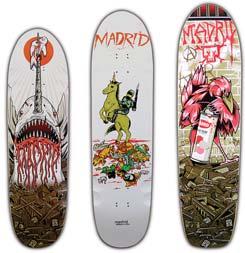

It’s rare to find an entirely new take on the wheel, but Shark Wheels definitely created a buzz with their product. The wheels feature a thin contact patch they claim results in a quicker ride and makes them work extremely well in the rain. They raised almost $80,000 on their Kickstarter campaign. sharkwheels.com
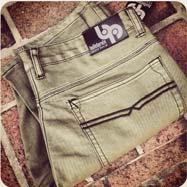
Founded in 1960 by surf legend Duke Boyd, Hang Ten set the standard for SoCal surf and skate style with its raw and rebellious edge that combined action sports with its all-encompassing lifestyle. This summer, D6 Sports recaptures that groundbreaking style with its Hang Ten Made in America skateboard series. With the help of shaping legend Dale Smith, each skateboard has been designed and perfected by the best board, truck and wheel companies in America. hangtenoriginal.com/products-2/skate
For centuries, Nessie has lurked within the dark lakes of Madrid Mountain. Town locals snapped these photos of Nessie, revealing its ¾” rocker, flared wheel wells and never-before-seen Power Orbs. Nessie’s Power Orbs give the feeling of W-concave at any foot angle, whether you’re holding your tuck or in mid-slide. CNC-cut wheel wells and flush mounts reveal marbledyed maple, stacked eight plies high and topped with slick black Formica to add torsional stiffness and reduce vibrations. A mellow kicktail with a touch of W helps pop Nessie out of the water. At 38.25” by 9.5” with 23.5” and 24.5” wheelbases, the Nessie is an all-around freeriding legend.
Candy Grip offers some of the most unique colorchanging grip tape for skateboards. They just had their one-year anniversary, and to celebrate they decided to release Candy Grip Coarse. They teamed up with grip tape artist Nathan Bishop to create this work of art. For many years Bishop was only able to use black grip tape and solid colors, but with new companies like Candy Grip, he has taken his artwork to a new level. Nathan has used this grip tape on many of his art decks now, most notably the Longboarding For Peace deck. The colors change based on the intensity of light and the angle at which it is viewed. candygrip.com
Paris Truck Co. has made a huge splash in the reversekingpin truck world. So it was only a matter of time before they released a conventional truck that would accommodate all the new combine or hybrid boards. The Paris street trucks are higher to allow for bigger wheels, and turn exceptionally well. paristruckco.com
Photos: Khaleeq Alfred
ANVL boards introduces the Hanzo longboard. With an industry-first feature, the Hanzo’s patent-pending Wingtail technology is a fully functioning, no-compromise kicktail situated above a drop-through platform. The Wingtail design allows for an ultra-low ride and creates natural gas pedals for insane foot lock-in. Three years in development has assured a stiff tail and no wheel bite with up to 70mm wheels. anvlboards.com

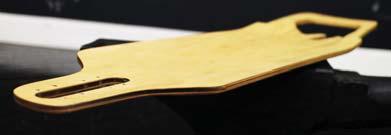
Slalom skateboarding lost one of its most passionate advocates in late July with the passing of Wesley Tucker of Summerville, South Carolina. Wesley was a longtime ISSA website administrator, a former member of the ISSA Board of Directors and the co-organizer of the first “World Longboard Championships” in Folly Beach, South Carolina, in 2002. Wesley was never a top racer, nor was he internationally well known, but he loved slalom skateboarding and helped get many new riders into the sport. Wesley was also one of the last devoted practitioners of the parallel “ski” stance, and worked with Ick Sticks’ Rick Howell to design board shapes to accommodate it. Never one to avoid controversy, Wesley will be remembered as a staunch supporter of conservative politics, his beloved USC Gamecocks sports teams ... and, always, slalom skateboarding. He will be missed.
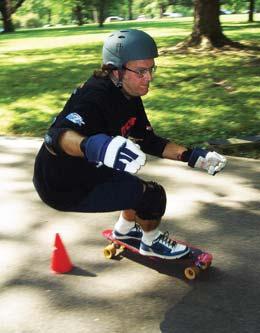
On June 22-23, 2013, the American Northeast was again fortunate enough to have Marc Dean and the good people of Windham, N.Y., organize I Love DH, aka the New York State Skateboard Grand Prix. The first two days of riding really felt like a freeride, with so many runs up and down the hill that competitors could take a few runs off if they wanted to. Push Culture provided video coverage of the event. Seventy-five people registered for open downhill skateboarding, and plenty of talented skaters were in the mix. People don’t always think of big hills when they hear “New York,” but New York is a huge state and buttons up to Canada. The pavement slides easily, the top speed is in the mid-50s and the fast straightaway spits riders into a technical, narrow, off-camber, dogleg left that requires a predrift or footbrake.

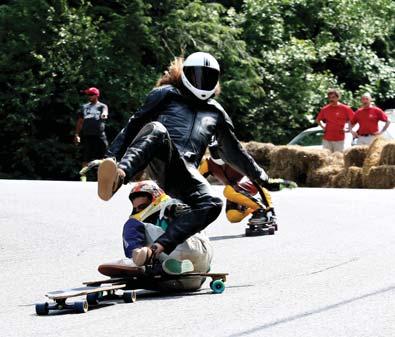
Both male and female riders were on the hill, skating hard, and I think everyone likes to see more and more girls joining in the downhill fun. This year Emily Pross took first place, and Bustin riders Monica Mejia and Cami Best walked away with second- and third-place finishes. Jonas Richter, Bustin’s Brazilian bad boy, celebrated his 18th birthday in April and also celebrated a victory in the open class on June 23. ColoRADo hill bomber Aaron Hampshire took second place in style, Luke Melo from Ontario, Canada, took home third, and Kevin “K-Money” LeFrank grabbed fourth place.

Bill Robertson is an associate professor at the University of Texas at El Paso, as well as an accomplished performer and competitor known as “Dr. Skateboard.” As a professor, part of his work is to publish in academic journals and to put forward new ideas that link research to the field of education. In July 2013, Robertson, along with colleague Dr. Larry Lesser, published an article entitled “Scientific Skateboarding and Mathematical Music: Edutainment that Actively Engages Middle School Students” in the European Journal of Science and Mathematics Education. scimath.net/articles/12/123.pdf
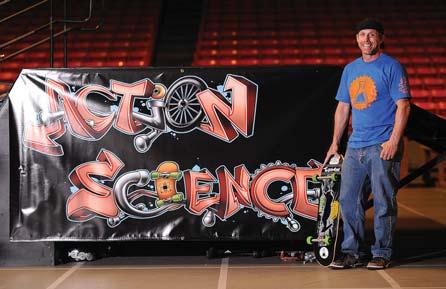
Andrew Goldsmith and Bob Harington served together during two combat tours in Iraq. They survived roadside bombs, rocket attacks and unending heat and boredom. On June 1, 2013, Andrew and Bob left Brookings, Oregon, and headed south along the California coast to begin the Veteran Skate Trek, a 900-mile, long-distance skateboarding journey to raise charitable donations for the Iraq and Afghanistan Veterans of America (IAVA). facebook.com/VetSkateTrek

How did your company start?
Oliver Dehmel: Björn [Hekmati] and I took some wood, got in our little garage-backyard-workshop and tried to build the best longboard for our needs.

What is it like being a part of the German longboard scene?
It’s really a great feeling to see how things are growing over here! We receive a lot of support from the German scene, and we try our very best to give something back and keep longboarding growing.
What are some of the reasons that your boards are different?
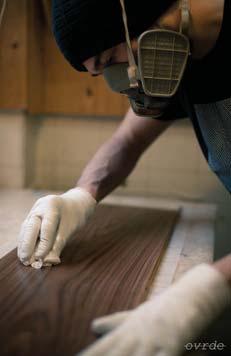
Our roots are designing the boards functional to suit the rider’s style of skateboarding. In addition we will stay with our minimalistic and clean wooden design. But for us the most important fact is to keep progressing in terms of quality and function of our boards! We are always in the process of prototyping to create new molds for next season’s lineup.
What is your company philosophy?
We want to keep growing with the scene and be able to react to the needs of all different kinds of riders.
Is it difficult to be in Europe developing longboard products? Do you have plans to move to the United States?
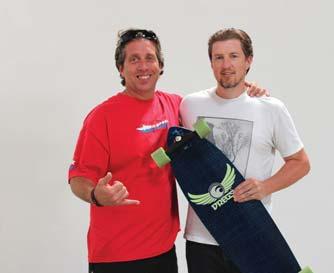
I think for a small but growing longboard company, the European scene is a good place to be right now! The scene and events have been growing constantly over the past few years, and we are happy to be a part of it. Moving our boards to the U.S. sounds awesome, and we will try to keep growing until we can make that step! We will have to increase amounts, manage shipping issues and find new partners, so it will take its time. We don’t want to act overhasty, but I think it could come true!

We had an opportunity to meet up with Chris Northwood of Antics International, which has taken over the distribution of Dregs Skateboards. The founder of Dregs, Biker Sherlock, will be managing the brand.
How long had you been investigating the longboard market?
We had been looking into the longboard market seriously for about two years, but when I invented Theeve Titanium Trucks’ axleless hanger concept back in 2007, I’d thought there may be potential for a titanium truck in longboarding. So I’ve been looking at that market in one way or another for five or six years. We got involved with Dregs earlier this year.
What drew you to it and specifically to Dregs?
The 16-year history and heritage of the brand and the person behind it were two of the major factors. Biker was one of the OG longboarding guys. He was there when Sector 9 was started, helped put downhill racing events on the map and has helped grow the industry. Dregs is also against the grain and [does] its own thing, so I liked that also. At Antics, we’ve always tried to disrupt the status quo, with titanium trucks or starting the first action sports belt and wallet brand in Armourdillo. That’s why we called it “Antics.” Dregs had a “we’re doing it our way” mentality, and I like that. I also thought Antics could bring something to the table with Dregs and build on the strengths to make it bigger and better than ever. It had a lot of potential!
Antics distributes a fairly eclectic mix of product. How do you see longboard product fitting in, and what roles will Biker be doing?
We think a distributor should have a mix of brands, so we can service our accounts with a wide range of products shipping in the same box, so to speak. We already service 750-plus skate, surf and action sport lifestyle accounts in the USA, plus we have distributor partners in around 60 countries. With Dregs’ customer list in the USA, it will likely grow 30% or more. Biker is still a financial partner. He’s the founder and will continue to lead technical product development, be involved in marketing and spend a lot of time on the road visiting retailers. Most of all, he’ll be at events, racing and supporting a new team of Dregs riders that he’ll be putting together soon.
Antics distributes tonumerous countries. What surprises you the most about the action sports industry, from a global perspective?
Sometimes I wonder why “we” don’t work more closely with each other to ensure we get kids involved in our industry, before they start playing a team sport, or picking up a tennis racquet or whatever. More kids on skateboards should be the goal – be more inclusive and make skateboarding (or surfing or whatever) fun again. Maybe that’s why longboarding has grown so big so fast. It seems more inclusive.
Any final comments? Thoughts on the future? Future of longboarding?
I’m stoked to have Dregs and Biker involved with Antics. I can’t wait to bring some new ideas to the table and to grow Dregs and longboarding in general, if we can. I think we’ve only seen the tip of the iceberg for the longboard market.
The inaugural GreenSkate Victoria Longboard Cruise occurred on June 1, 2013, to coincide with the UN Earth Week. Fellow boarders came out to promote longboarding as an environmentally friendly means of transportation and recreation. The route followed the Galloping Goose Regional Trail, a multi-use path widely used by bikers, runners, pedestrians and longboarders.
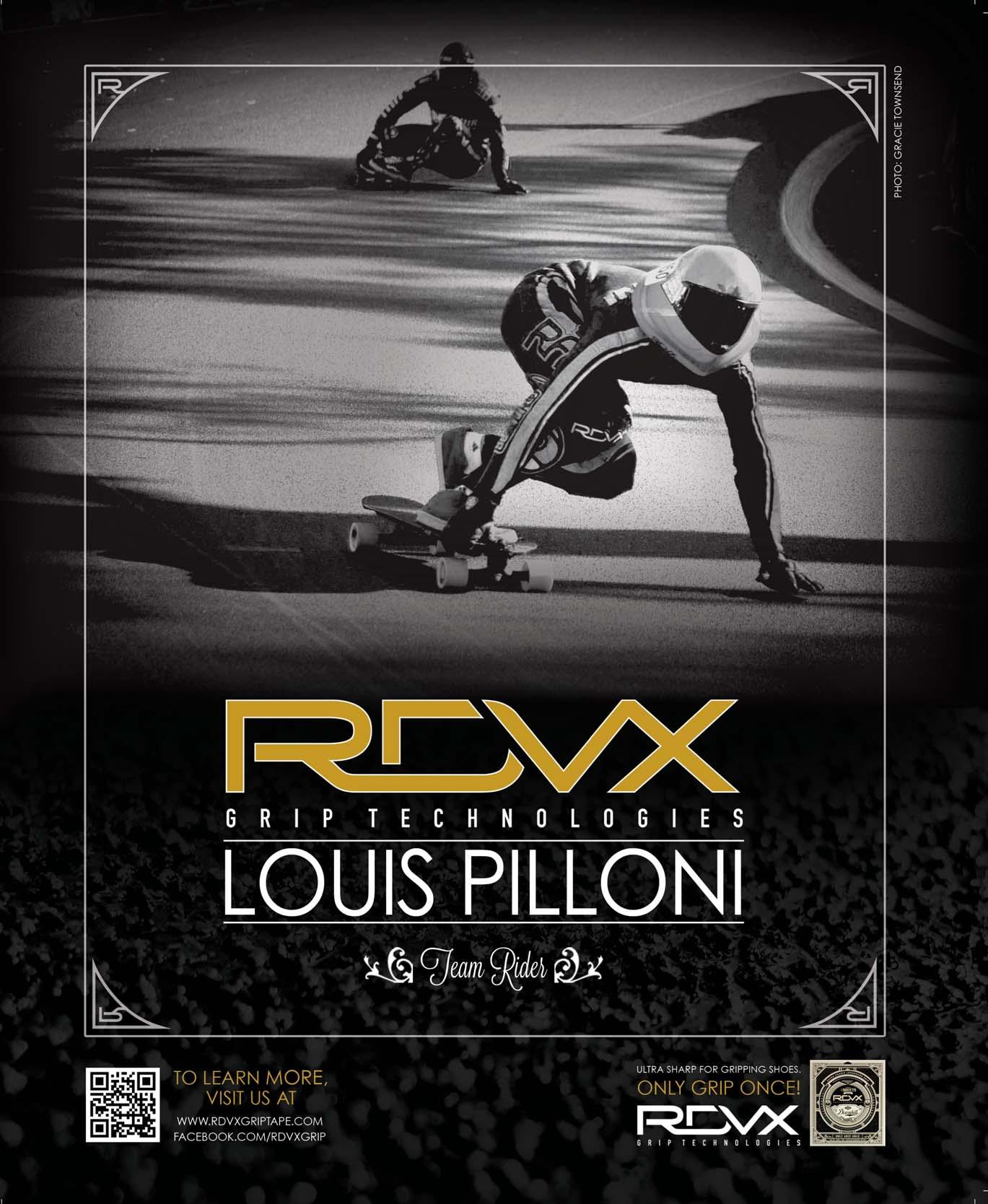
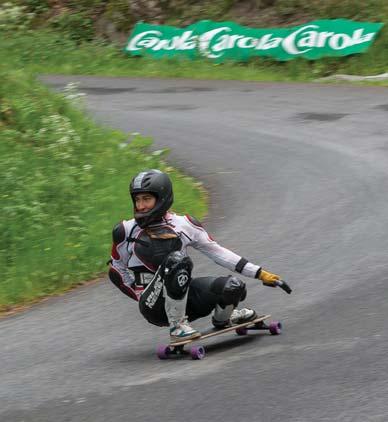 By Christine Maier
By Christine Maier
Photos: Petra Moser
A few months on and WLC 2013 is still always on my mind, and that’s not only because we’ve already started thinking about the next one. It’s so lovely to see girls who took part in this year’s camps being stoked and amped to sign up for Euro freerides and races, and to bump into them at events and ride together, reliving those awesome days we shared in Alsace this spring. In fact, the conversation nearly always turns to it eventually when I speak to somebody about the camps. Word has started to spread – talk about the snowball effect.
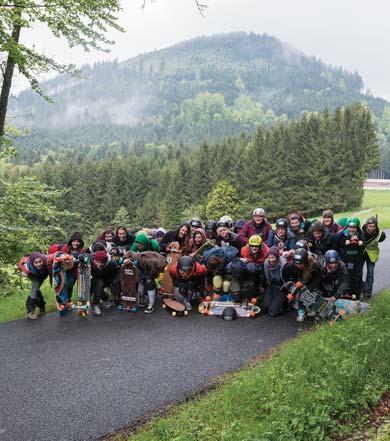
The Women’s Longboard Camp initiative is now in its second year, and to meet increasing demand, we took the plunge and doubled up capacities in 2013, offering two successive five-day skate camps in France. We were thrilled to have former world champion Betty Luginbühl, current women’s champ Bekks Gemperle as well as German steezer Jay Raab on board this year’s instructor panel, completed by WLC OG, the lovely Anni Lindenmaier and our dancing queen Dani Schukalla.

Unfortunately the weather was against us this year. Two weeks of nearly solid heavy rain spiked with snow toward the end is a challenge for even the most hardcore skaters and campers. Amazingly, this did not dampen the mood one bit (excuse the pun), so to skate all day, erry day is what we did no matter what. WLC also means freestyle, so we had to deal with whatever was thrown at us. We created trash-bag ponchos, for example, as well as innovative ways of drying wet clothes and shoes underneath the bonnet of a car (thanks, Crash Test Dummy Uldis!) and built a life-saving backyard shelter out of tarps and wood courtesy of Root Longboards’ Alex and Kevin.
By the time the second cohort arrived after the Koffee Schnaps freeride, sandwiched in between both camps, the campsite had turned into a muddy swamp – not particularly inviting. I could see the disbelief written in some people’s faces, but we put on a brave smile and helped the ladies settle in. The can-do attitude is quite contagious, and as such the second week turned out to be just as awesome as the first, despite worsening weather/camping/skating conditions.

In skateboarding, it doesn’t matter who you are, where you’re from or indeed how old you are. It was
just great to see several generations coming together, with riders from many different countries between the ages of 17 and 60-plus happily mingling on and off the track.
When Fee and I packed up the van after those two intense weeks, reality slowly started to kick in. The lack of sleep, the coldness, the mud ... We spent about a week recovering, cleaning and demudding the van and our gear, throwing out rusty bearings, saving hangers through brute force and copious amounts of WD-40, and so on.
The event wouldn’t have been possible without our incredible crew of both instructors and on-site helpers and marshals, all of whom are absolute legends. Huge props go to the Alsace Downhill crew, who looked after us day in day out, provided us with delicious food rustled up in the middle of nowhere and copious amounts of Schnaps to get the party started each night. Breakdance for life –enough said.
A big thank you also goes out to our sponsors for their incessant support and belief in what we do. Please check out our website for further information, facts, figures and faces of the 2013 events.
The official WLC 2013 movie is coming out soon. Drop us an email hello@womenlongboardcamp.com and subscribe to our newsletter. Get in touch should you be keen to start something together or support our upcoming ventures.
The birth of Inward Supply is the starting point of major changes for the Canadian longboard scene. They approach the Canadian market with a new vision fueled by the passion of the brands, retailers and riders that form our vast community. Inward is proud to be announcing its partnership with Paris, Divine, Restless, Motion, Riviera, Five Mile and Gunmetal. inwardsupply.com
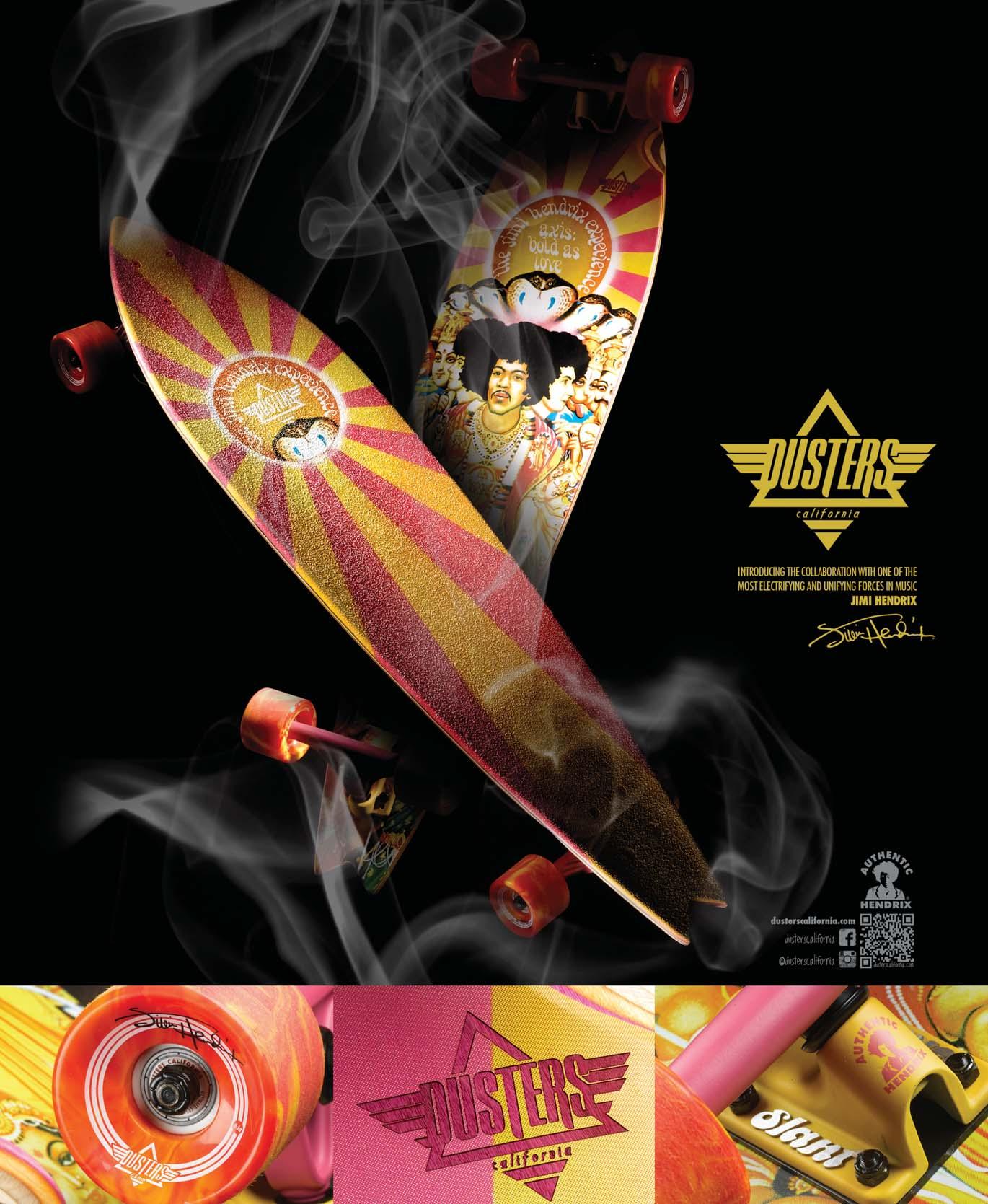
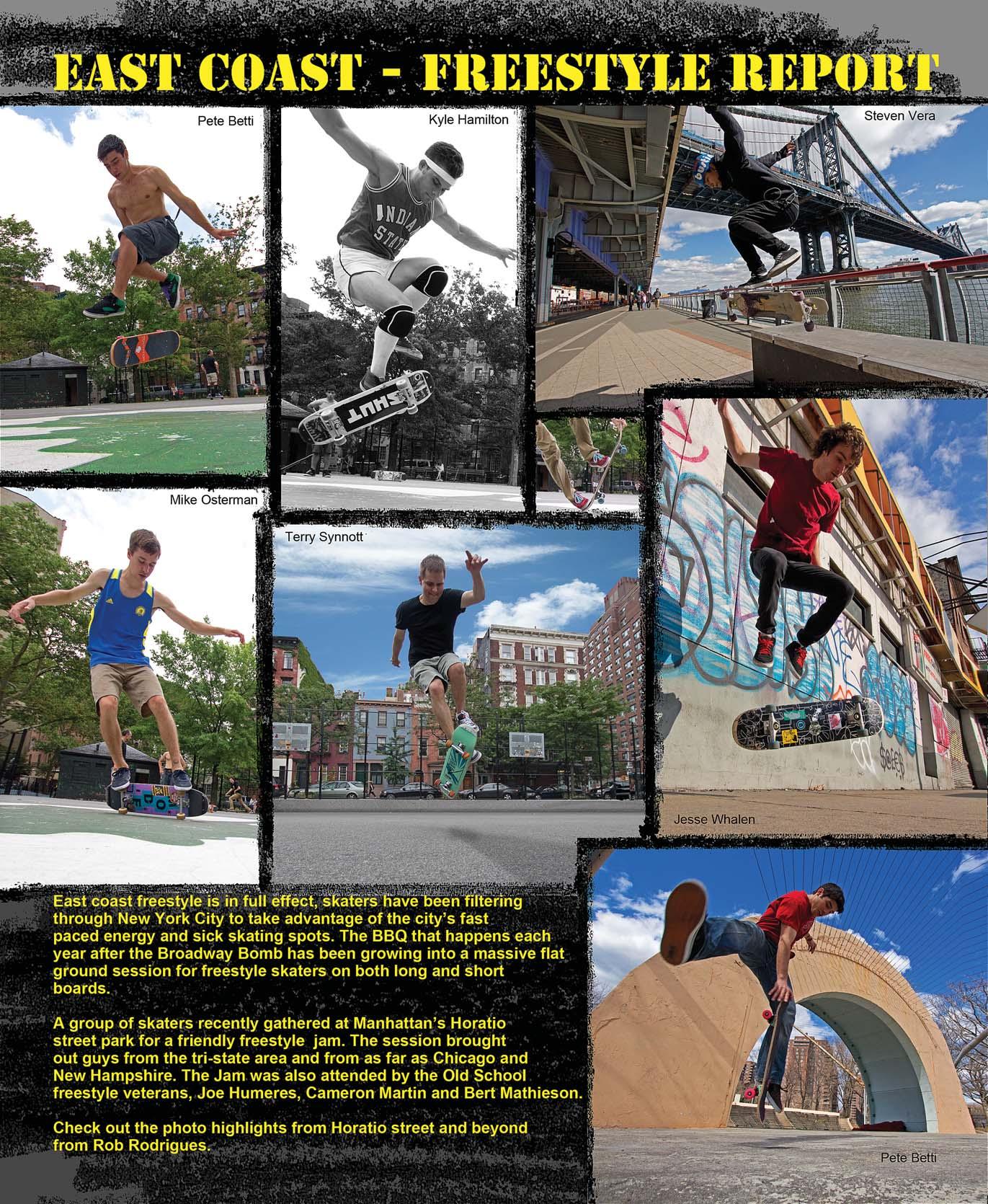



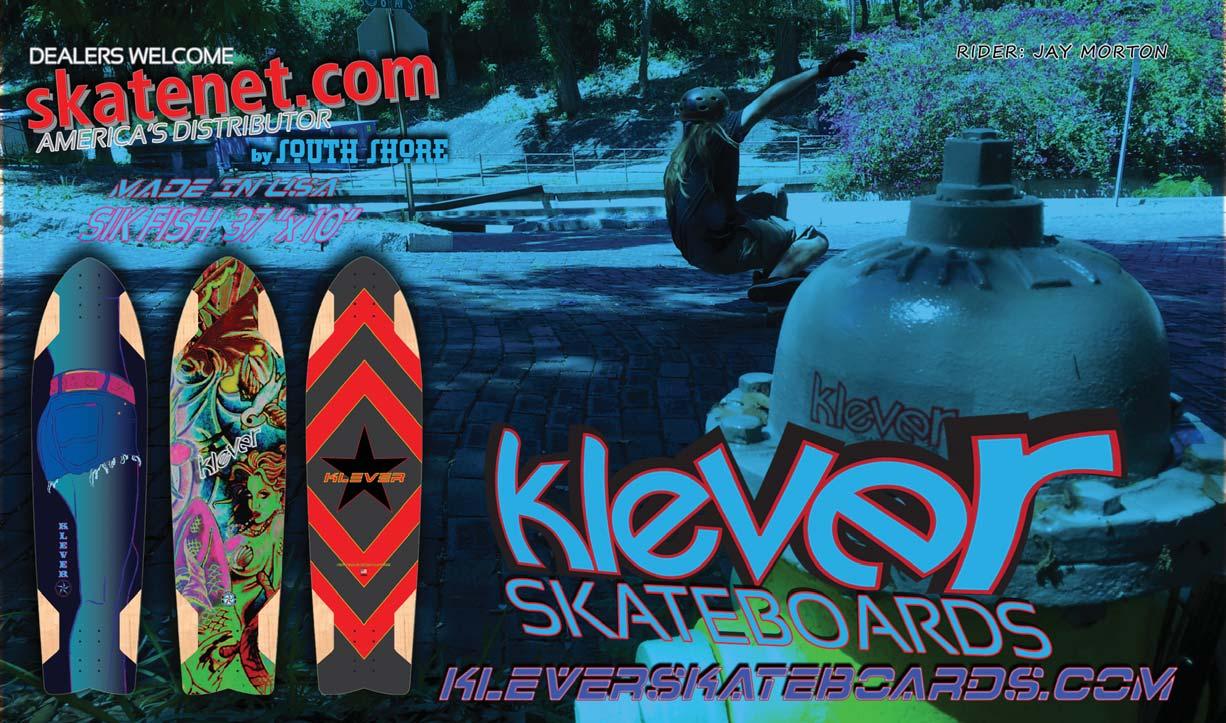
Hey, everyone! Longboard Girls Crew have big news for this issue! As you may have read on the Web, we have an exciting new film project coming out. But first let’s talk about what’s going on in the female longboard scene around the world.
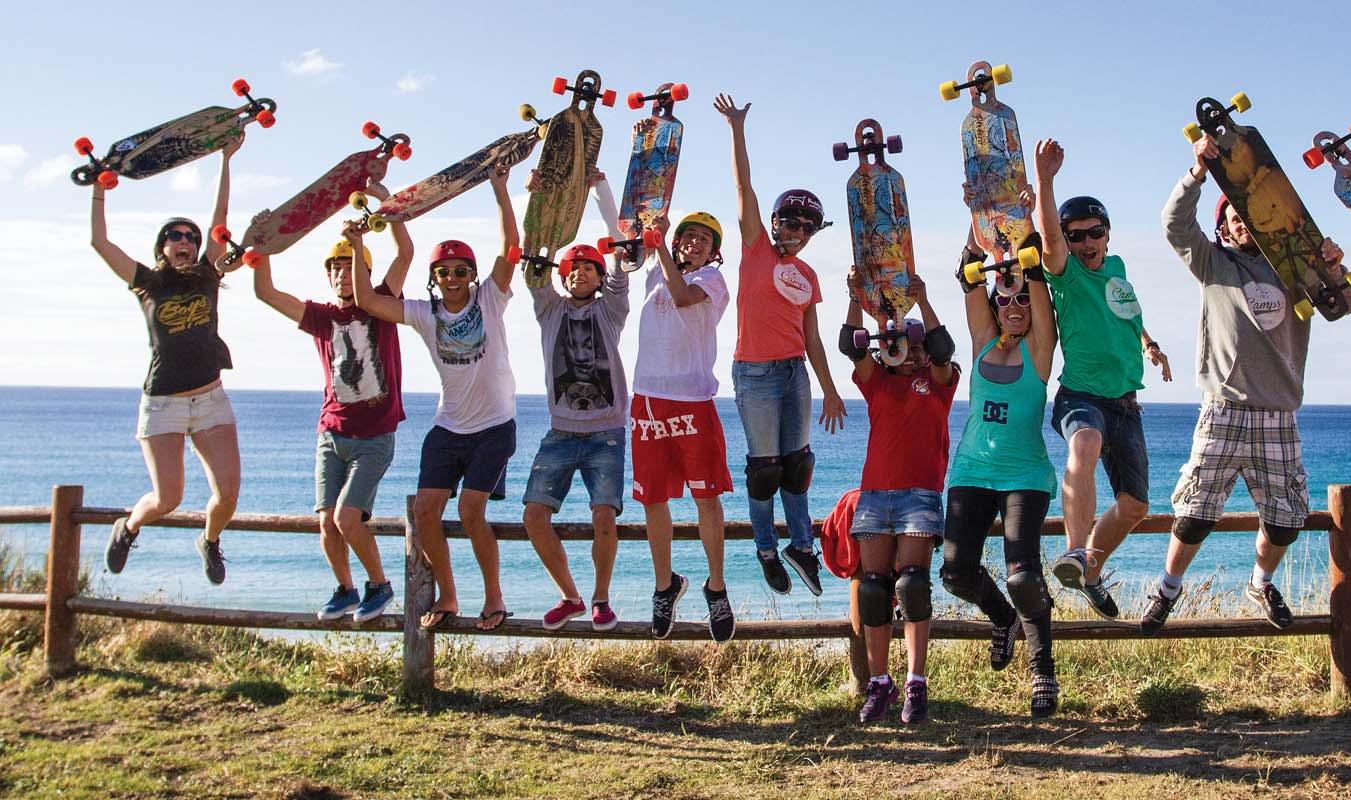
North America races were ace! Never in the history of this sport have so many women competed on a professional level, and few things can make us prouder. Elena Corrigall absolutely killed it in almost every race, as did Anna O’Neill, Katie Neilson, Tamara Prader and Victoria Waddington, just to name a few … extremely exciting, tight heats.
Though most of the races worked out smoothly, we read some unsettling facts about the Whistler Longboard Festival. Some of them refer exclusively to how the race was managed, but some others are, unfortunately, the daily grind for female downhill competitors.
This is what Tamara Prader wrote for the Orangatang blog: “The female category is other than juniors or masters the category where adult females compete against each other. We now have a hand full of ladies that are full time skaters and we want to grow this field! Even though or because we are still not even closely as many as the male competitors, we would like to be treated like World Cup contenders! Not like a show case
group and definitely not as the ones that need to be out of the way before the “big show down”. We know what we do, travel internationally to go to events, we pay the same amount of entry fees.”
As we say in Spain: I could say it louder but not clearer.
Tamara also had some suggestions regarding the prize money for female downhill competitions: “The purse should be distributed at least a little bit more equal as well. [At Angie’s Curves], men’s 1st = $5,000, women’s 1st = $300. Whistler, men’s 1st = $3000, women’s 1st = $300 (?). It should at least be possible for the 3rd ranked [woman] to win back entry fees.”
The number of females competing is growing every day, and it’s time to reexamine the old prize rules and start making new ones, following the evolution that female longboarding is going through.
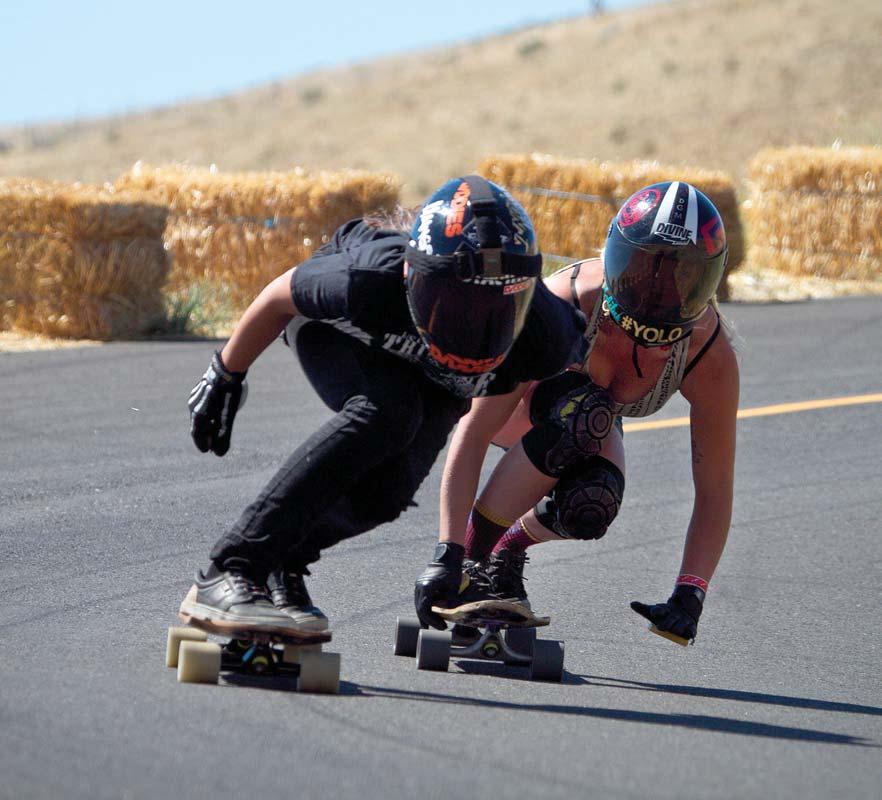

Going back to happy, the second Maryhill SheRide was a great celebration for all those women who are changing the female scene. For the second year in a row, Deano Ozuna and the
Maryhill Ratz gathered some of the finest downhill ladies to skate, party and get stoked on the Maryhill Loops Road. The footage of that day is great, and road rashes were the order of the day due to all those summer-dresses heats. Rad!
Longboard Girls Crew Czech Republic is hosting a Girls’ Dance Contest on August 24. For more info check their Facebook fan page.
Longboard Girls Crew USA is hosting a video competition to see the American shredders in action, so if you live in the States, send your video until September 1 to win complete decks. The categories are Best Trick, Most Creative and Most Technical. Visit the LGC USA Facebook fan page for more info!
In Spain we’ve been busy with the LGC Camps, which are surf and longboard camps in Galicia and Asturias (northern Spain) starting the last week of June and lasting until mid-September. To open the season, in the first week in the Art Surf Camp, we did an Endless Roads revival week, visiting the spots where we shot the last chapter, “Costa Da Morte,” and gathering most of the original riders from the trip. It was a fantastic week. We have people coming for
the camps from all over Europe … some of them even from the Middle East! They surf during the mornings and longboard during the evenings. There’s always some mini-ramp action after that and before the party, so of course, they turn out to be unforgettable holidays. Our camp sponsors have been the best with us, and we can’t thank them enough for their generous contributions in treating our students with the best hardware and protective gear. So big ups for Orangatang Wheels, Riviera Skateboards, Paris Trucks, Triple Eight, Vital Hardware and Fortrate Barcelona for being amazing! Check our web page at www.LongboardGirlsCrew.com/lgc-camps to find out more about the LGC Camps and how you can join us!
Finally, let’s talk about OPEN. Exactly two years after our previous audiovisual project, Endless Roads, which reached more than 3 million views, we’re hitting the road again and starting a new adventure. This one will be documented as a fulllength movie.

OPEN is the name and concept of this new film. It aims to open the spectator’s eyes to a new experience through a skate journey of a unique group of very talented female riders in a faraway, exotic and unskated land in one of the most talked-about countries in the world: ISRAEL! Our aim is to show a different and less-known face of this country. The OPEN team goes to Israel with our eyes and minds wide open, ready to receive anything this place and its people have to offer.
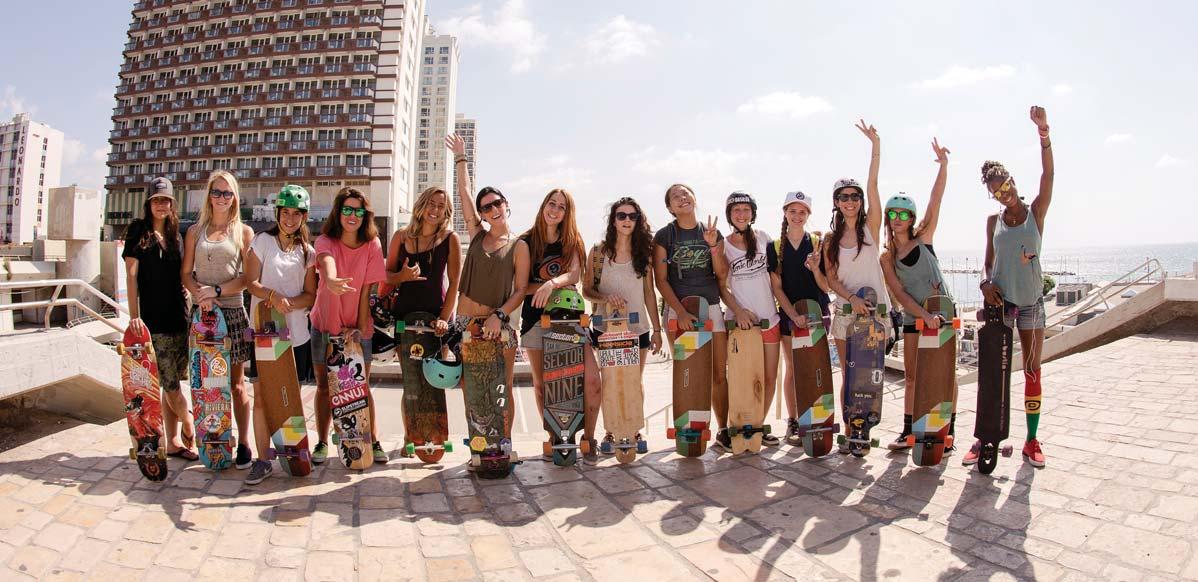
OPEN will tell the story of 14 girls from different places and cultures, following their interactions and emotions while skating the most diverse spots of this land. From the Golan Heights to the old city of Jerusalem, the dramatic Judean desert to the vibrant metropolis of Tel Aviv, OPEN will definitively show a never-beforeseen part of this land. The list of riders is mind-blowing and their backgrounds extremely diverse, which will add tons of fun and excitement to the project. Check this out: Katie Neilson
is from Canada; Amanda Powell from the U.S.; Cindy Zhou is Asian-Canadian; Marisa Nuñez is from Peru; Cristina Sanchez (Mandarina) from Spain; Jenna Russo from Australia; Gina Mendez from Panama; Micaela Wilson from the U.S.; Cami Best from Jamaica; Eider Walls from Spain; Ishtar Bäcklund from Sweden; Gador Salis from Spain; Jacky Madenfrost from Venezuela; and myself, an Armenian descendant born in Argentina and living in Spain. Is this cool or what? I’m crazy about meeting them all, the ones
I know and the ones I don’t. We’ll skate together and fight about whose turn it is in the bath. When I read the comments suggesting that the director of our videos is the luckiest man alive for being surrounded by so many lady shredders, I just laugh and say they don’t know what they are talking about!
This time around we’re working with director Daniel Etura, a Venezuelan filmmaker and skater based in Madrid. He’s the director of the Madrid Skate Film Festival, and he was recently nominated for a Latin Grammy. He will make this trip an unforgettable visual experience. His edgy style will complement the unique destination and momentum the female scene is going through; we’ve been working hard during the last year to change the softer image we may have had and to show how hard girls shred. We’re also taking with us the multitalented downhill skater/photographer/videographer Matthew Kienzle, aka Matt K, to shoot the fast action scenes. We’re big fans of his work with SkateHouse Media and are thrilled to have him on board for this project.
We (Longboard Girls Crew) are producing the film. Monica Madenfrost is the head production manager; Jesus Asensio is the scriptwriter and Web designer and does general production; Jacky Madenfrost arranges general production issues; and will be the film’s sound technician. I’m managing the marketing and Indiegogo campaign, as well as working on general production issues.
In Israel we’ll have the help of a local board company, DaSilva Boards, as well as members of the Israeli longboarding community, who will
give us a firsthand tour of their country as they come along with the crew on this soul and skate journey. Last but not least, during and after our stay in Israel we’ll work together with Longboarding for Peace, a sports association with whom we aim to spread the word of peace and stoke — because as you know, few things bring people together like skateboarding does.
As mentioned, our last audiovisual project, Endless Roads, made a huge impact regarding the general perception people had on female longboarding, not only in the longboard world but also outside it. It had 3 million views (only counting the official channels) and was an official selection for three different film festivals, including the Banff Mountain Film Festival that is still on tour. We still receive tons of emails from girls around the globe, telling us how it inspired them to start skating.
To finance OPEN, we’ve received invaluable support from the riders’ sponsors and other nonskate-related companies to cover the production basic costs. These include flights, accommodation, food, transportation and activities for 21 crew members (14 riders and seven production staff).
We’re both proud and grateful to say that we’ve gotten support from of most of the biggest longboard companies worldwide.
Although some of our costs are covered, we still need to reach our real budget. So we have launched an Indiegogo crowd-funding campaign.
Part of the $18,000 we are trying to raise will help us cover other expenses, including equipment rentals, locations, music, insurance and other legalities associated with making a film. After covering those costs, our first aim is to reward all the people who are selflessly helping out on this project.
For the last three years LGC has been working disinterestedly to support and promote female longboarding. In order to keep doing that while promoting this new movie, we need your support. We have unique perks for everyone supporting this project, and even with the lowest perk you will appear in the movie credits and will be helping us and all female athletes to make a statement about our place in this sport.
We want to make OPEN a movie that will not only reinforce women’s role in this sport but will also take female longboarding to the next level of exposure. Even if you can’t help us financially, you can still help us by spreading the word. We’re working on a big project that will change minds and open new horizons for women in this sport. Be a part of it!
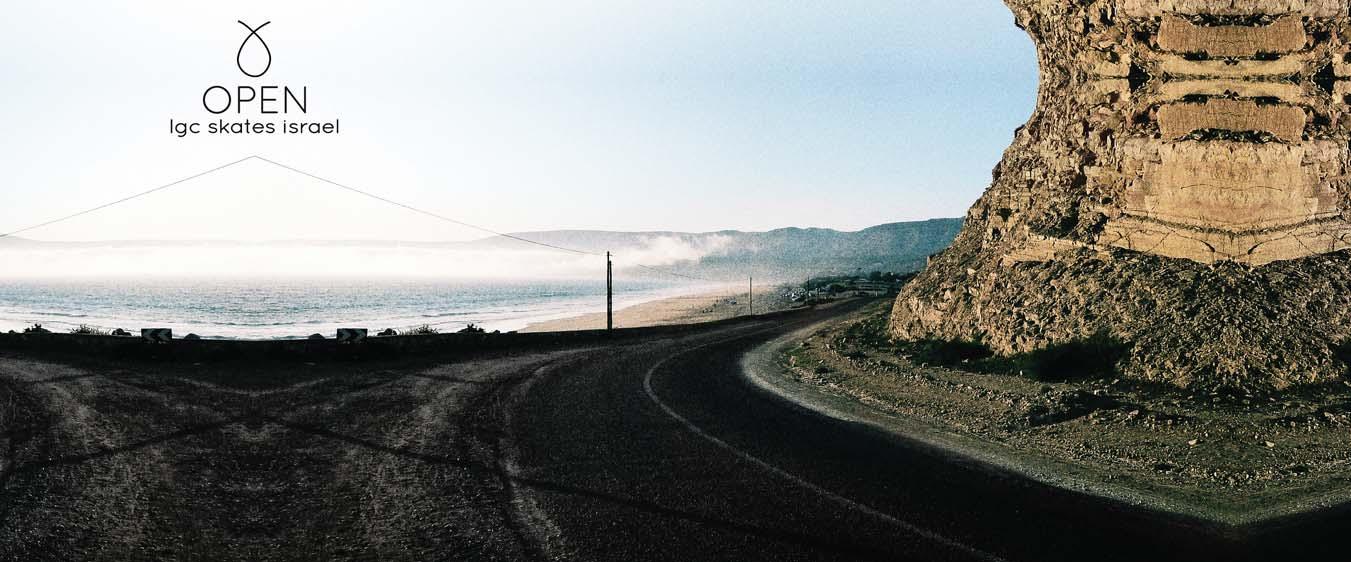
We’re shooting during the last weeks of August until the first days of September, so we’ll keep everyone posted through our social media channels. We honestly can’t wait.
Have fun skating and be safe! CW
How did DB longboards start? Give us all the juicy details. Was it hard? Was access to capital difficult?
Like many skaters, the more we rode, the more we found ourselves coming up with ideas to change and improve the decks we were on. Eventually we gave in to the urge and took things into our own hands. The first DB boards were made back in 2003 when our founding crew was still in high school, so the initial startup capital came from loans through friends and family. Our original decks were all cut, drilled and finished by hand. The first seven years were spent laminating boards in a garage, another garage and a barn. Now, operating in our current facility, things are a bit more sophisticated!
What have been some of the biggest challenges in starting up?
We’ve faced many of the same challenges as most smaller board builders and startups: cash flow, rent, salaries — you know, business stuff. It’s a constant learning experience for all of us, but we thrive on the challenge of it all. We’re a DIY sort of bunch, so we enjoy tackling the many inevitable hiccups present in our day-to-day operations.
What are some of your proudest accomplishments?
First and foremost we’re proud of the products we build. We’ve always tried to lead product-first, and the feedback we’ve received in support of what
we’re manufacturing has been overwhelmingly positive, which is a great feeling. Somewhere along the way we’ve managed to build quite an awesome network of team riders, customers and vendors, while having a pretty good time to boot.
Who makes up the crew in terms of the company?
We’ve got a small management team of three people and usually have a rotating crew of anywhere from five to a dozen guys working the floor, depending on the season. Everyone who works at DB does so because they have a passion for the products we build. We like our decks to start and finish in the hands of skaters!
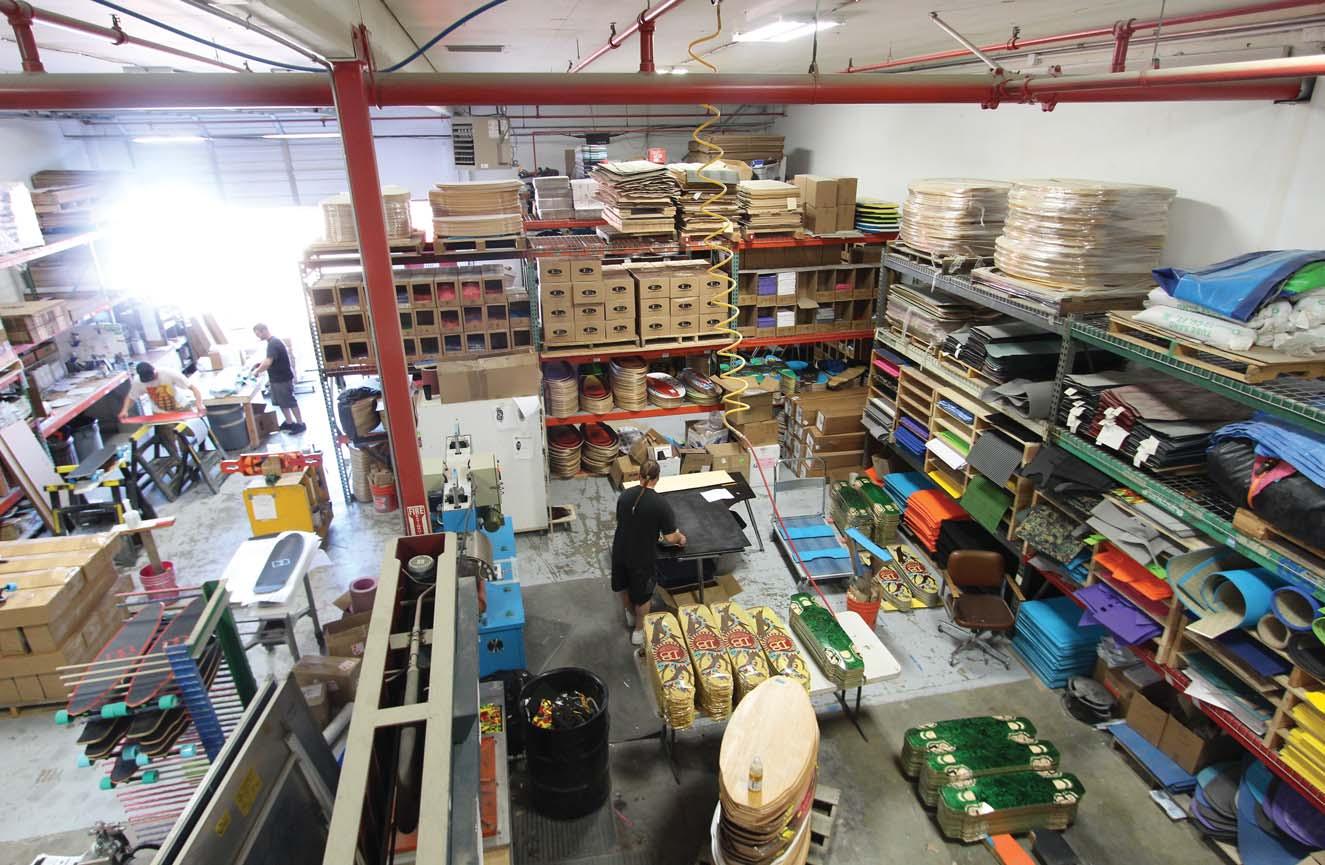
What’s the longboard scene like in Fife?
The Seattle-Tacoma area, where we’re based out of, has a solid local scene. This year we helped organize a series of bike path races within the area and were pretty stoked on the turnout. Putting on events in that sort of environment is a great way to help allow riders the opportunity to get out and ride in a situation much safer than skating open roads. We always do our best to help support the local longboard community and are looking forward to doing even more in years to come.
There seems to be a fair amount of emphasis on environmentally friendly construction at DB. Thoughts?
We definitely strive to be as low-impact as possible, and there are a lot of steps we take to do just that. Our boards are laminated with waterbased, non-toxic glue and sealed with low-VOC lacquer. Our offcuts are all recycled, producing very little waste. We also work exclusively with sustainably harvested milling operations. That said, it’s really more a reflection of our core

values and efforts to operate using best business practices in general. The attitude extends far beyond environmentally friendly construction and is present in everything from our relationships with our vendors to our customer service. We always want to do better.
Manufacturing seems to be trickling back from China to the U.S. What are your feelings on this? Is it hard to compete?
It’s an exciting trend to see, and I think we’ll continue to see it happen. It’s hard to compete with Chinese-made decks, no doubt about it. We’ll never be able to produce a deck as cheaply as the Chinese manufacturers, but cheap isn’t what we aim to do. We simply have to differentiate our product in another way and not compete on price alone. Lucky for us, there are a lot of customers who see the value in a quality U.S.-made product and want to support American manufacturing. With the longboard industry still changing so rapidly, it provides an advantage for smaller, more nimble manufacturers who are able to keep up with current trends
EVERYONE WHO WORKS AT DB DOES SO BECAUSE THEY HAVE A PASSION FOR THE PRODUCTS WE BUILD. WE LIKE OUR DECKS TO START AND FINISH IN THE HANDS OF SKATERS!
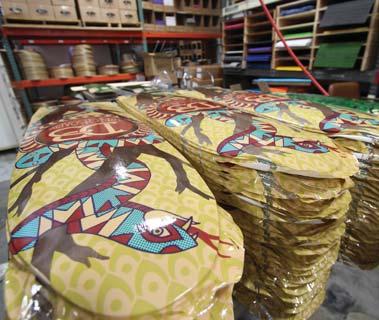
and are capable of providing top-quality products at the cutting edge of demand.
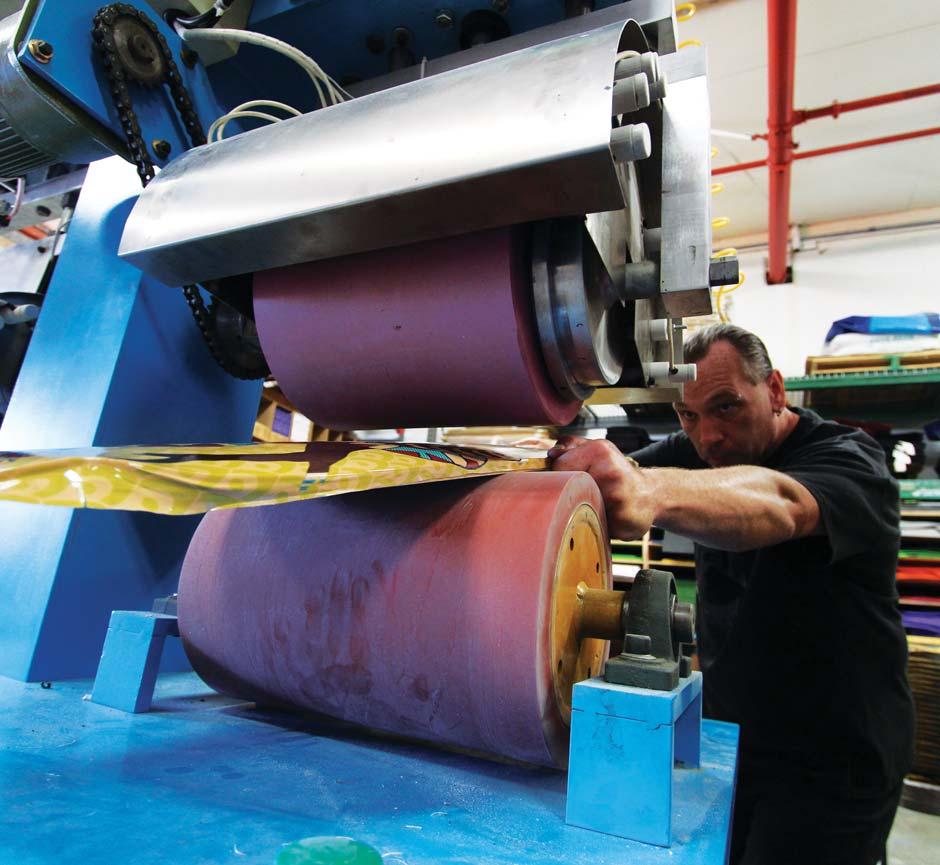
You have some unusual-looking decks. What’s been the reaction to the Lunch Tray? Huge! We’ve been pleasantly surprised by the tremendously positive response to the Lunch Tray. Our board design is where we try to set ourselves apart from the pack. Tim Mackey, our in-house engineer, really has a knack for taking his ideas and blending them with the feedback given to him by our team riders. This makes the whole design process extremely collaborative and has proven to produce some quality results. We want all of our decks, even the more basic entrylevel boards, to be well thought out with a clearly defined purpose. DB boards aim to be unique and functional while maintaining the simplicity and aesthetics present in any good design.
Any other comments?
Another big thanks to all our customers and supporters. Go skate! CW
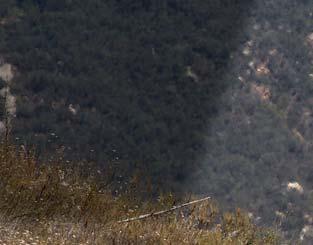

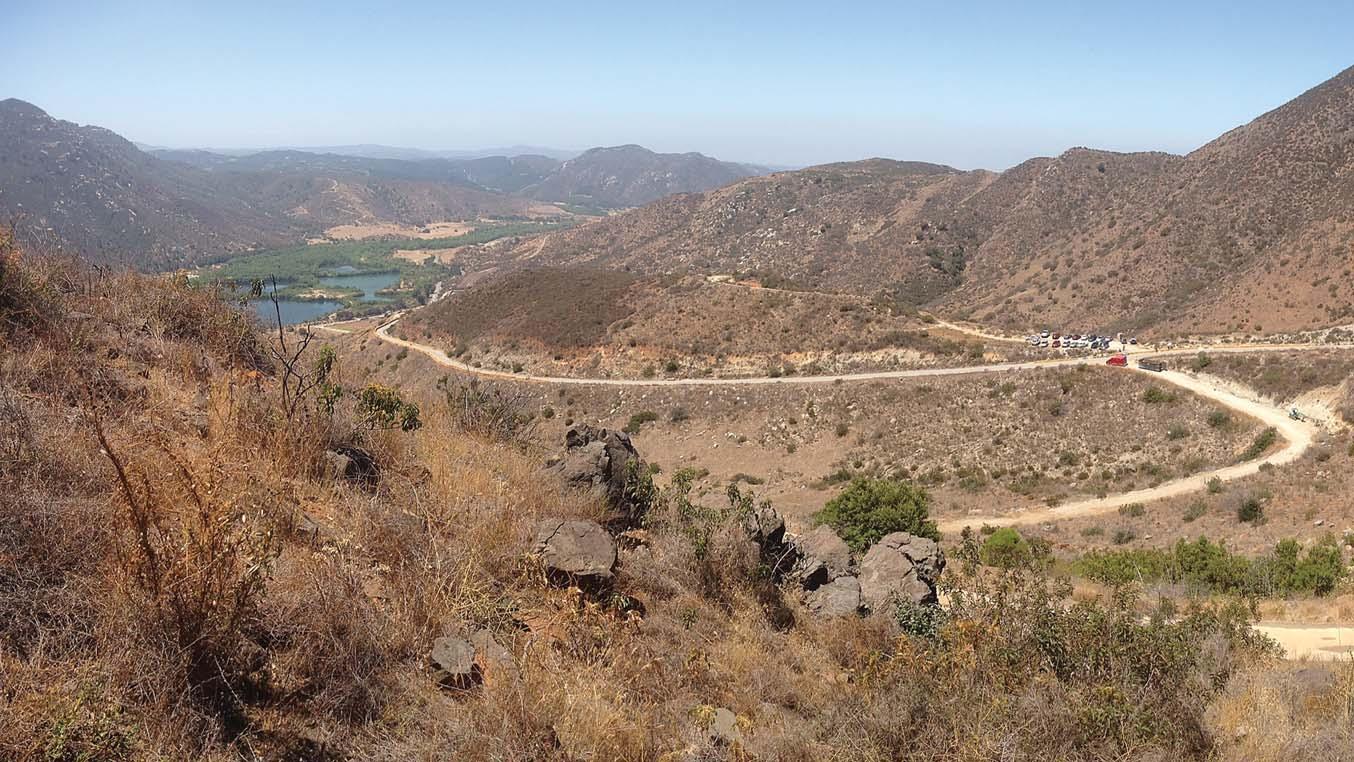
 By JOEY BIDNER
By JOEY BIDNER
Some of the most interesting news to hit the downhill racing scene this season was the sudden emergence of the International Downhill Federation (IDF). This new organization is presenting events previously hosted by the International Gravity Sports Association, as well as introducing new events to the World Cup circuit with the aim of continually pushing the boundaries of downhill racing. Concrete Wave followed the North American leg of the IDF tour to support and be a part of this first annual series. It has been inspiring not only to see where the level of riding has gone as courses get harder and racing gets faster, but also to see how each of these events has become larger and more fun to attend for everybody. Events on the World Cup stage are now not just about racing; you will see mini-ramp contests, live music, BBQs, gear giveaways and plenty of after-party shenanigans. It is full-encompassing events like this that are continually pushing our sport, as people can come from all over to enjoy themselves and see what longboarding has to offer. So if you are near any of these events in the future, they are a must-attend for fun and inspiration, racing or not!
Angie’s Curves, hosted by Sector 9 and the Ian Tillman Foundation, was the first stop on the IDF tour. It quickly became one of the most highly anticipated events this season after we all saw and wet our pants over the intensity of the pre-released track videos from SkateHouse Media, and it proved to be the fastest and most technical track yet on a World Cup circuit.
The inspiration for Angie’s came from the folks at Sector 9, who saw that there was a gap between the level of riding and the difficulty of some of today’s tracks. Over the last few years, top riders’ abilities have reached such an elite level that even World Cup runs are sometimes not enough to challenge and push them. The organizers of Angie’s Curves wanted to change that. “Angie’s was made to step up the bar,” said event organizer and Sector 9 pro rider Louis Pilloni. “Racers at a World Cup event should be looking down from the top and be forced to strategize in figuring out how to navigate down the course as fast as they can. This strategy and skill level is what truly separates the riders, as it is not just a game of who has the biggest balls.”
The stepped-up challenge was apparent from day one at Angie’s. Each rider had his or her own idea of how to tackle each section of the course.
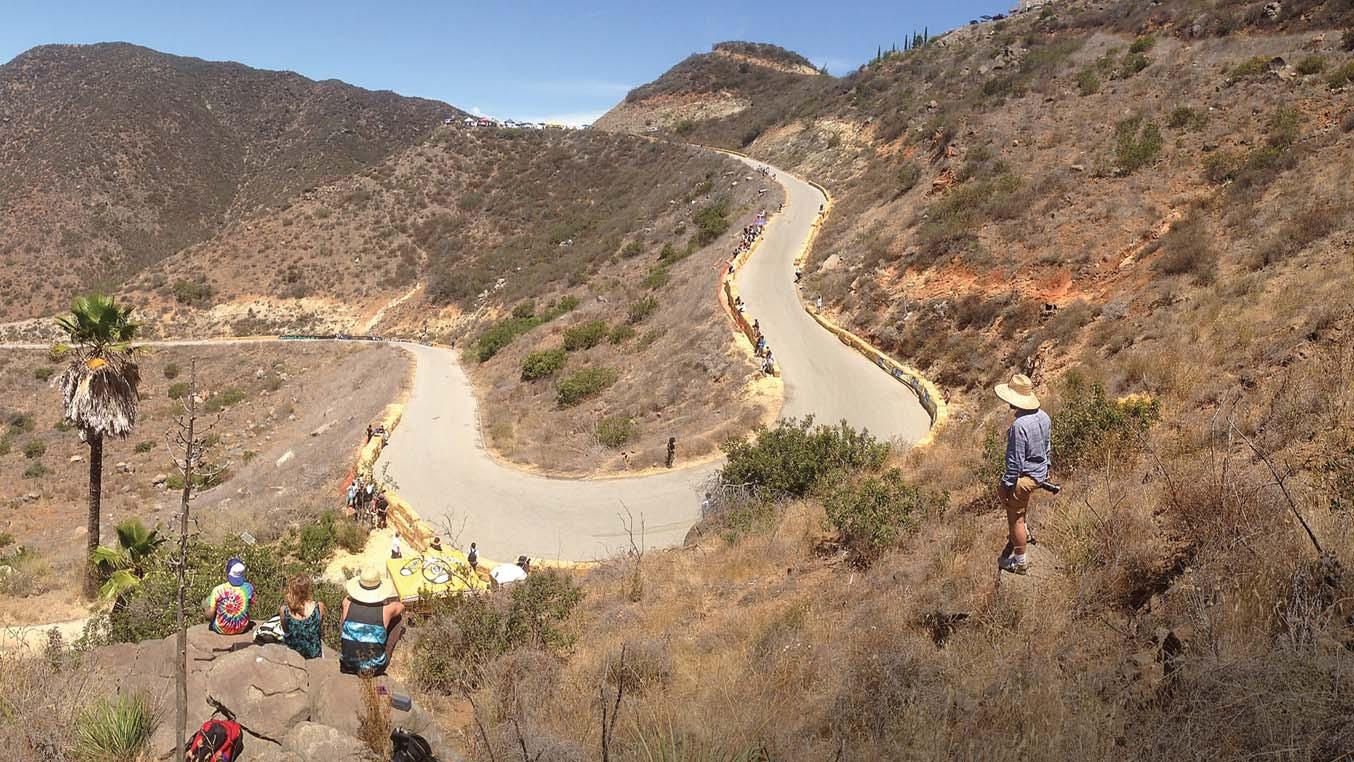
The first technical section was Angie’s Curve,

an off-camber right hairpin with a very steep and awkward chicane leading into it. Riders had to shed a substantial amount of speed while navigating around the feature, forcing them to use whatever skills they had to come up with a method that worked well for them. They used three main techniques, each of which proved equally effective — if executed properly. Some threw one long, sustained predrift before the turn; others preferred to throw three shorter, more controlled predrifts; and to the surprise of most of us, others did quite a bit of calculated, precarious footbraking, leaving behind trails of smoke and stains of rubber on the asphalt. It was fascinating to see so many riders get creative and piece together the puzzle of slowing down enough to make the curve while still maintaining as much exit speed as possible.
After Angie’s Curve, racers pushed each other on the insanely steep and fast speed section. During practice and qualifications, riders broke tuck near the end of this section to airbrake through the chicane (dubbed “Sugarcane”) in preparation for the tight right to follow. But once the race heats started, riders began pushing themselves to hold their tuck further and further, leaving spectators hanging on to their seats in amazement. By the time the finals hit, racers had been clocked at 67 mph (107 km/h) by the end of
this straight, at which point they were then forced to predrift. Arbor pro James Kelly said it was the fastest he had ever been clocked in a race in which he had to predrift for a turn. It was clear that we were all witnessing what we came here to see: individuals pushing themselves beyond what was previously thought possible.
This continuous push toward new possibilities is what downhill racing is all about, and it takes mutual gathering in the right venues to make it a reality. However, it does not come without consequences. Some serious falls occurred in this section. Billy “Bones” Meiners high-sided on a toeside predrift, somersaulted and hit his head hard enough to knock his helmet completely off, whereupon his bare face hit the pavement. (Thankfully, he was able to walk away, emerging with “only” a concussion and a bit of road rash on his face.) The injuries did not end there. Sector 9’s Matt Kienzle dislocated his elbow on Angie’s Curve, and Mexican rider Dan Favela suffered a bad enough concussion that the paramedics had to force him to stop riding. Plenty of other crashes occurred, too, many of which are clearly shown on the SkateHouse Media video “15 Crashes at Angie’s Curves.”
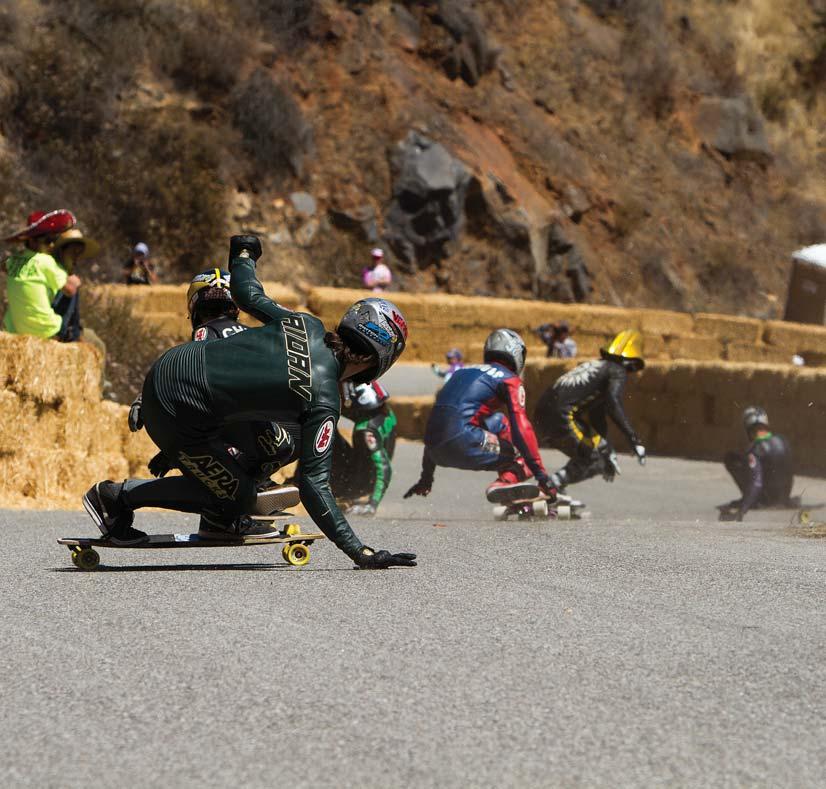
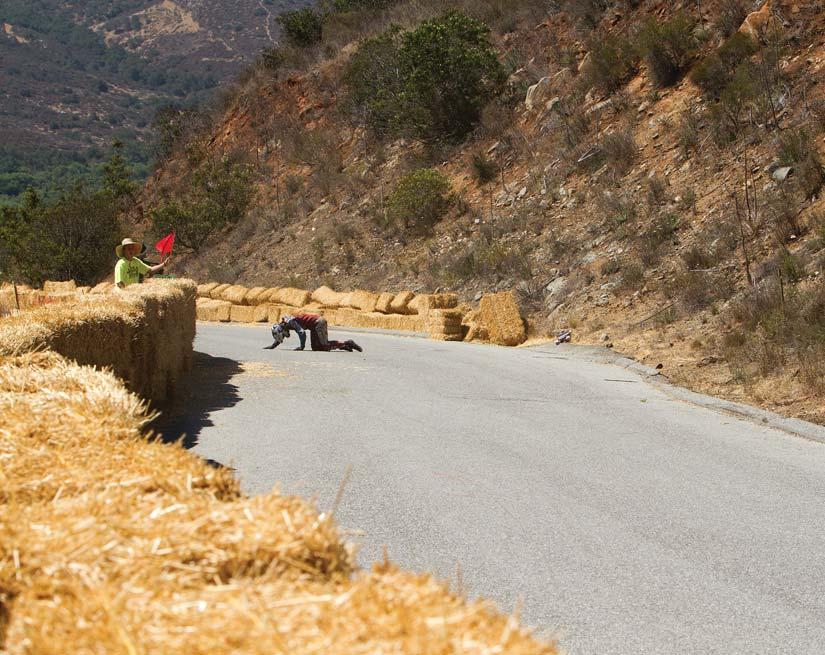
Angie’s was a thrill to ride but equally enjoyable simply to watch. Booths from supporting sponsors kept spectators busy with fun activities and swag, and were placed where they could still see most of the track. The Ian Tilmann Foundation spent the weekend giving away as many free helmets as they could in exchange for the recipients simply promising to wear them. And there was plenty of fun after each day of riding, as the campgrounds had big bonfires, plenty of track talk and a healthy dose of shenanigans.
AJ Haiby set the fastest Open class qualifying time with a 1: 50.5. He held onto it for the duration of the qualifiers and was favored to win the shootout, but unfortunately he later broke his ankle in Angie’s Curve and had to withdraw. James Kelly was clearly in the lead in almost every heat he ran and walked away with the first-place finish. Georgia Bontorin took first in the Women’s category, and Chance Gaul dominated Juniors and also walked away with fourth place in the Open class. A $16,000 purse was divided among the winners of the weekend, awarding cash to every rider in the top eight as well as to top qualifiers. We have all the donating sponsors to thank for this generosity: The Ian Tilmann Foundation, Sector 9, RAD and Gullwing.
Angie’s Curves definitely lived up to expectations as an event that would raise the bar in downhill skateboarding and set a precedent for the future. Still, as amazing as it was, it’s unlikely to be the last or only event to stake a claim as the biggest and baddest. Rather, the emergence of such an awe-inspiring track has only set off a chain reaction to produce the next race to arise and defy what we all thought possible.
Live music is the best way to boost morale after getting your butt kicked on the first day of qualifying.
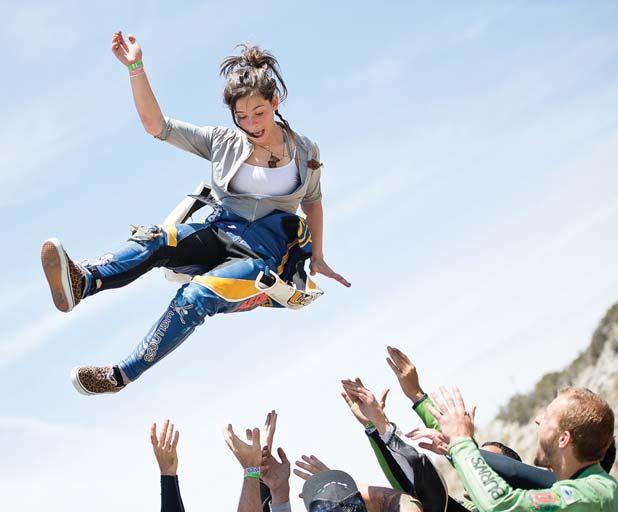
OPEN
1. James Kelly

2. Duke Degen
3. Ricardo Reis
4. Chance Gaul
1. Chance Gaul
2. Daniel Luna

3. Elijah Vinograd
WOMEN
1. Georgia Bontorin
2. Tamara Prader
3. Elena Corrigall
4. Marie Bougourd

After leaving the intensity of Angie’s, it was a relief to land in the calm atmosphere of Goldendale, Washington, to attend the infamous Maryhill Festival of Speed. This five-day event has become a staple in the racing world as one of the most iconic events because of its unique track and flawlessly smooth organization. Maryhill is an especially interesting race because it involves less technical “balls to the wall” skill than some other World Cup circuits, but requires a lot of strategy, precision and course understanding to master.
Maryhill is commonly described as “easy to do, hard to win,” mainly due to the course itself. All eight hairpins and 15 turns on the 2.2-mile (3.5-km) run are grippable because of the perfectly angled banked corners and consistent 5% grade over the 850 feet of vertical drop. No predrifting is required. Maryhill’s course is definitely not the fastest or scariest on the tour but calls for a different level of technicality to win. It is a true tuck battle where racers are trying to carry as much speed as possible while trying
using the least amount of energy. The course takes strategy, stamina and skill to master, as all six racers are often within arm’s reach of each other battling for the draft and best line. The strategy in holding your speed comes from timing when and specifically how to enter and exit a particular turn. If you take it ever so slightly wrong, the G-force pulls you out and leaves a slight opening for a pass. It’s especially hard to take the lead from the start and to stay in front, as there are so many opportunities to pass and gain speed with a draft. A true strategist waits patiently for the opportunity to take the lead at just the right moment. Racers who have been coming to Maryhill for years have a clear advantage, as they know the track and each turn by name and understand how each should be taken.
Maryhill has been going for seven years now, and because of event organizer John Ozman’s experience, the race runs like a well-oiled machine. With two days of practice, more than 15 runs were packed into each day, an amazing feat considering the 250-plus riders and the
Over the last five years, more and more racers have chosen to ride slalom boards or other shorter, narrower boards at Maryhill. Zak Maytum introduced the concept in 2008 at the first Maryhill Freeride, for an informal race that allowed only boards shorter than 34 inches. So naturally, Zak, an experienced slalom rider, chose the setup. Right away he noticed how well his slalom board performed on the run, and he hasn’t stepped on his longboard at Maryhill since. “The slalom setup is the purest expression of a board designed to take a concise line, grip to the full potential of the wheel and turn with utter precision,” he says. “On a road like Maryhill, where your goal is to conserve your speed as much as possible and maintain hard lines with the most grip, it just makes sense.” Zak rides a Pirnack hybrid deck made by Pavel Skates, with GOG adjustable trucks set at 62 degrees in front and 12 degrees in the back. His bushings are all Venom HPF (classic) formula, with a 78A barrel boardside and 81A cone roadside in front and 93A barrels in back.
 A toast to Mr. Sam Hill for constructing this beautiful road.
Photo: Don Sheffler
A toast to Mr. Sam Hill for constructing this beautiful road.
Photo: Don Sheffler

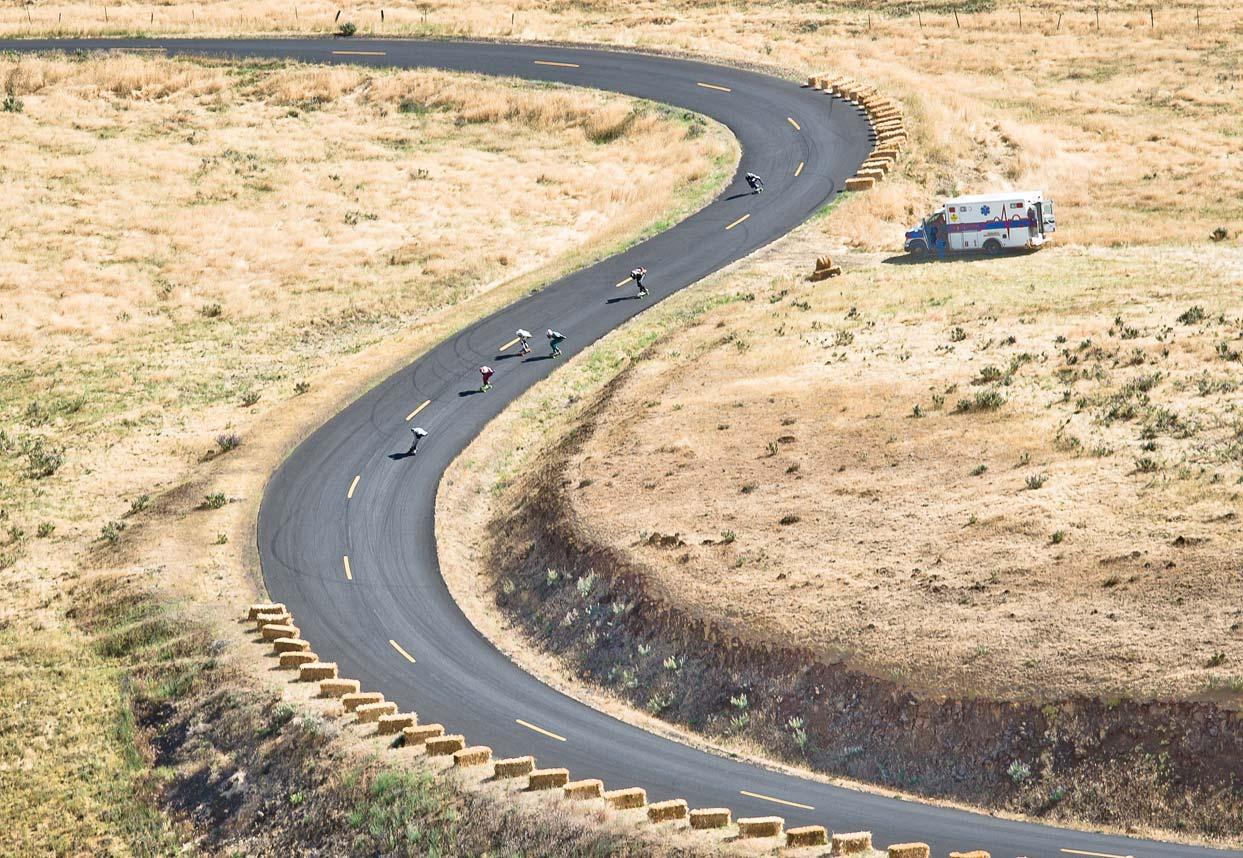 Picking the line through Ambulance Corner. Photo: Don Sheffler
Picking the line through Ambulance Corner. Photo: Don Sheffler
Even in the most intense moments, it’s truly calming to be surrounded by the slowly revolving wind turbines surrounding the track.
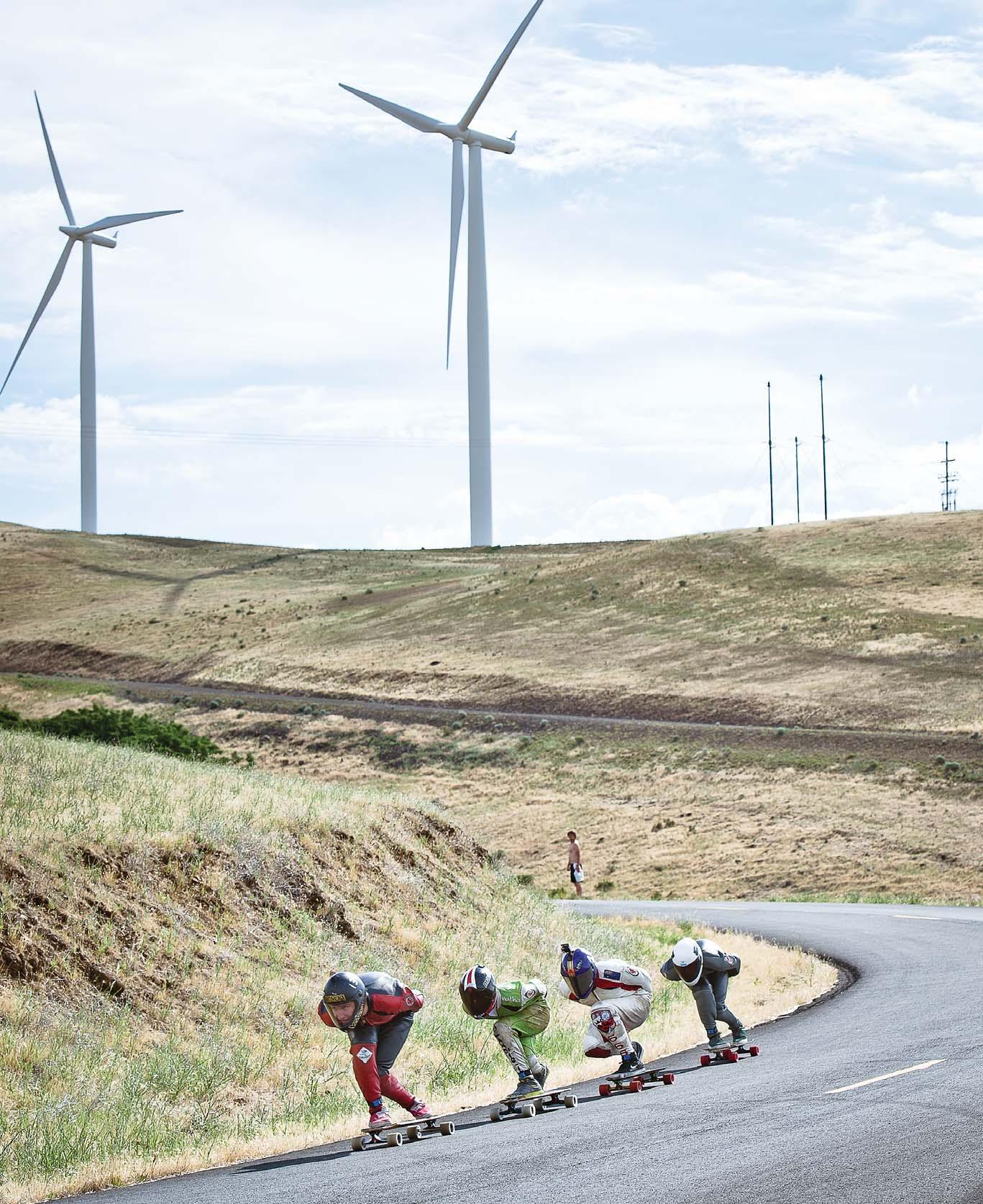 Photo: Don Sheffler
Photo: Don Sheffler
time it takes to schlep them back up the course. The ride back to the top gives riders a chance to not only get to know the track but to have a solid bro-down with everybody there, making many strong friendships over the week.
Aside from racing, spectators and participants had a lot to do during the day while resting their legs. The finish line was packed with supporting sponsors and facilities for racers. There was even a massage center offering free physiotherapy treatment as well as giving away free coconut water to keep us all hydrated in the 100+ degree weather. Most of the supporting longboard sponsors kept people excited by having contests and dares for free swag, such as creative/embarrassing haircuts or eyebrow waxing in exchange for a chance at a set of free wheels. There was even a mini ramp right in the center of it all that was open at all times for people to ride. This made for a lot of fun for spectators, as the place was packed with locals and travelers, not only to see the racing but to have some fun and a chance to walk away with some free stuff. This kind of attraction is what brings people to an event, and possibly into a skate shop to buy a longboard the next day. Large events like Maryhill are what continue to push our sport, as they bring it to the front door of people who may have never been able to try longboarding or see what it can offer them.
In case you didn’t know, Maryhill Loops Road has quite a history to it. It was built as an experiment to become first asphalt-paved road in the Pacific Northwest. We all owe a great debt to Sam Hill, who personally funded and engineered the road’s construction. As the president of the Washington State Good Roads Association, Hill had a deep passion for engineering graceful roads throughout the state. In 1909 he began the build Maryhill Loops at his own expense, and did so for the following four years to simply experiment with road-building techniques and to explore the possibilities of what his imagination could conjure. This iconic flair of a build with sweeping switchbacks and deep banks became something of a trademark of Hill’s roads, as you can find various roads designed by him in state of Washington. In 1998 the town of Goldendale received a grant to repave the road for events. Skateboarders are not the only ones to rent out the road; it is also a popular track for auto test drives and commercials. Next time you’re stuck to the tube, keep an eye peeled for one of the Mazda “zoom-zoom” commercials.
After a week of solid racing, Maytum made the podium, but Patrick Switzer was crowned the Open champion for the second year in a row and
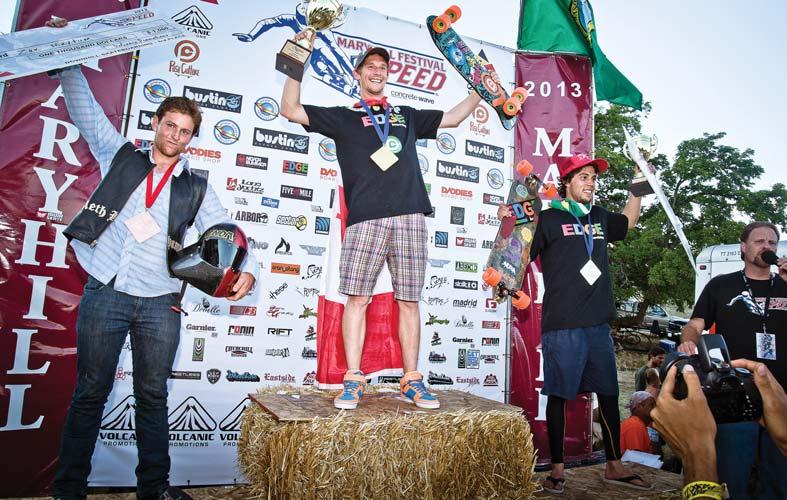
the third time overall. Elena Corrigall took the top spot in the Women’s category and Dejaune Jones won in the Junior class. For more details and a play-by-play of the finals, tune into www.thisispushculture.com.

After a week in the scorching heat at Maryhill, I can say that this full-encompassing event is paving the road to the future into how a worldclass event is held. With masterful organization, great accommodation and a run you will dream of for months after, Maryhill should most definitely be on every racer’s bucket list! If you’re interested in riding Maryhill but don’t want to race, be sure to look into attending a Maryhill Freeride, several of which take place periodically throughout the year.
OPEN
JUNIOR
WHISTLER, BRITISH COLUMBIA

The Whistler Longboard Festival is the final stop on the IDF North American tour, and it most definitely stands out, as it takes place in the Disneyland of action sports, Whistler, BC.

A lot of downhill races take place in some offthe-beaten-path locations, taking riders through humble towns where there just happens to be the road of their dreams. Whistler, on the other hand, is a town designed and built for our sport and culture. It hosted many events of the 2010 Winter Olympics, and for decades it has also hosted countless other world-class sporting events, making it an ideal location for a World Cup longboard race. Thus it offers great racing on a fine track, plenty of apres-longboard activities, and spectators from around the world with an immediate interest in action sports, ready to see what longboarding has to offer. Whistler is known to attract and breed some of the best athletes in the world, and its location only two hours from Vancouver makes it an obvious stop for the IDF tour.
The race track was built for the 2010 Olympics as an access road for the Whistler Sliding Centre (bobsled/luge track). It’s especially exciting because it offers a wide variety of terrain all in one course. Riders get the thrill of speed in the top section, with a tight sweeper that throws them into a technical section of six switchbacks filled with predrifting, drafting and gripping. This track guarantees exciting racing on a terrifically fun track.
After the first day of practice, the transponderbased timing system used for qualifying and seeding the riders failed, causing quite a bit of confusion about how the race was to unfold. After some long waits, a handful of ideas and some serious problem-solving, a plan of action emerged. Instead of the original plan of seeding the riders based on individual qualifying times, there would be a “race to qualify” format, in which where racers would accumulate points based on how they finished in a heat with several other riders. It was not the most desirable format, especially in a World Cup event, but in desperation it was the best remaining option. The riders were grateful when Travis Davenport from Push Culture News stepped into the chaos with his calm and collected vibe to help run the qualifiers on the spot, as they required a hand from the right person to run smoothly.
After eliminations narrowed and the finals wrapped up, everybody was hyped to see Jimmy Riha from Rad Train take the win. As Kevin Reimer and James Kelly fought for the lead, Riha waited patiently behind until he found his opportunity to pass with finesse and precision.
We were privileged to be able to watch the excitement of the race top to bottom as HD cable cams and corner cams were streaming the run live on a big screen under a tent at the bottom. This made for the most exciting of races as we were all able to follow the drama of each heat carrying onto the finals. Hopefully we will soon see more of this kind of coverage at various events in the future. Be sure to watch all the finals from Push Culture News at www.thisispushculture.com.
Because the facilities at Whistler allowed more than just a downhill race, the organizers decided to test riders in other disciplines of skateboarding as well. In between races
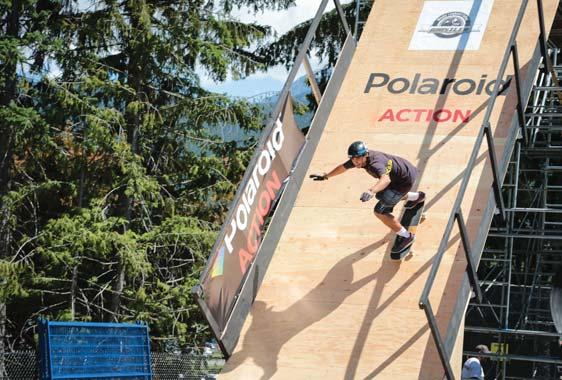
throughout the weekend, there were contests in the concrete snake run, an insane big-air jump with an acro-bag landing, a 20-km push race and, to wrap up the weekend, the famous “Skate + Shoot” event. This grueling biathlon was a final test of endurance and precision: a 10-km push race with two stops at a shooting range, where racers shoot at targets with a .22 caliber rifle and skate extra distance for any missed shots. Like any true test of grit, riders were forced to push their will, as it rained in the morning, making the event even more challenging and intense than usual.
One of the best parts of attending the Whistler Longboard Festival is all the other activities to

keep you busy and stoked off the longboard. Here you will find world-class mountain biking, perfect skateparks, ATVing, bungee jumping, an insane night life and much, much more. Because Whistler has so much to attract people at all times of the year, it brings spectators from all over the world, and having this event in such a place brings them coincidentally right into the lap of world-class longboarding — a great way to continue to push the awareness of our sport. One of the beauties of longboarding is how accessible it is; whether a person wants to race or not, it only takes one spark of interest for them to get into longboarding and to find their pursuit of happiness within it.
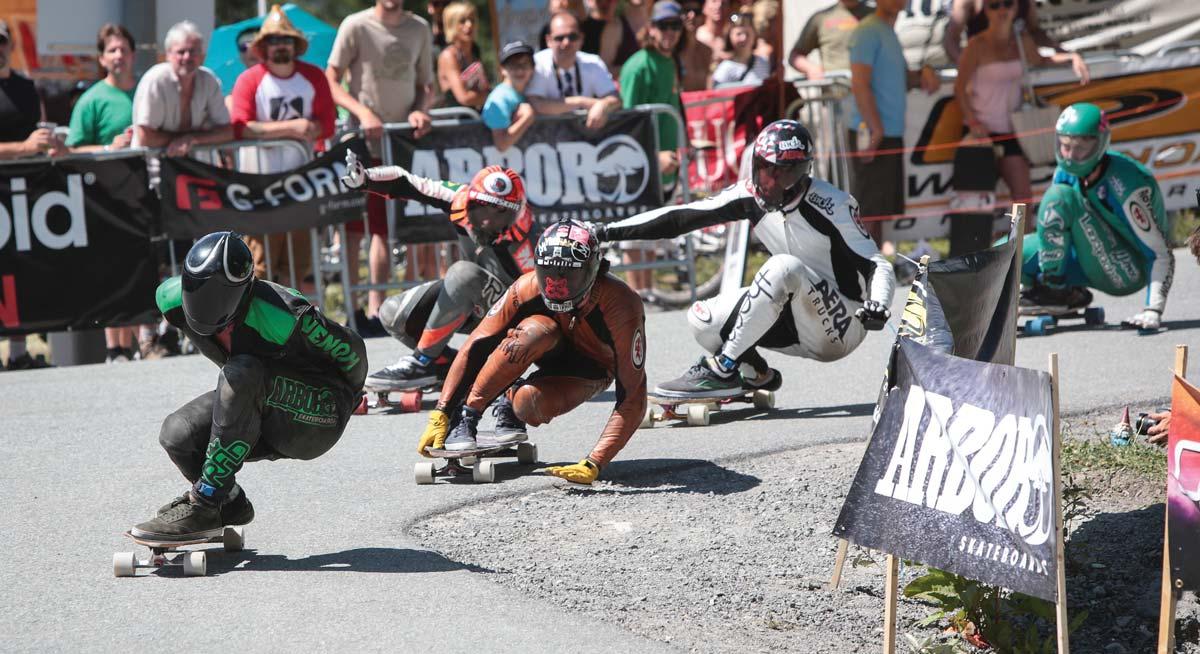
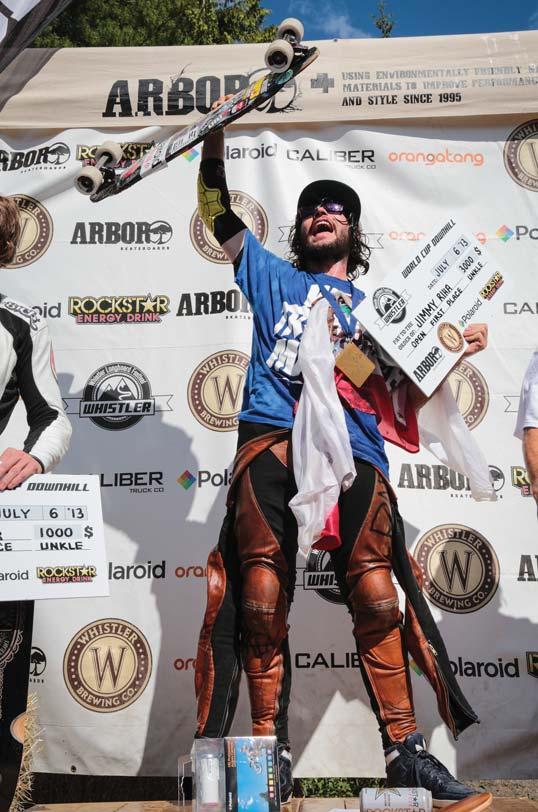
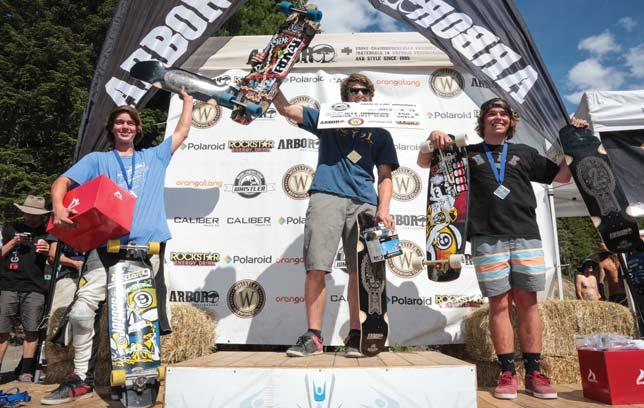
MASTERS
After three long and wild weeks following the World Cup tour, it’s been a pleasure to be a part of an awe-inspiring event like Angie’s Curves, to finally witness and ride the iconic Maryhill Festival of Speed and to let loose at the Whistler Longboard Festival. Each offers a unique experience and brings an addition to the tour that cannot be duplicated. Touring on a longboard circuit is something that only the privileged get to experience in a lifetime, and it is something I hope some of you set aside time for one day in your journey with longboarding. It doesn’t have to be the World Cup tour; it can be any kind of travel that brings you in touch with people from around the world with one common interest. This commonality can form long-lasting friendships, show you sights and places you may never have gone to before (or otherwise) and can give your life the spontaneity you just might be looking for. CW
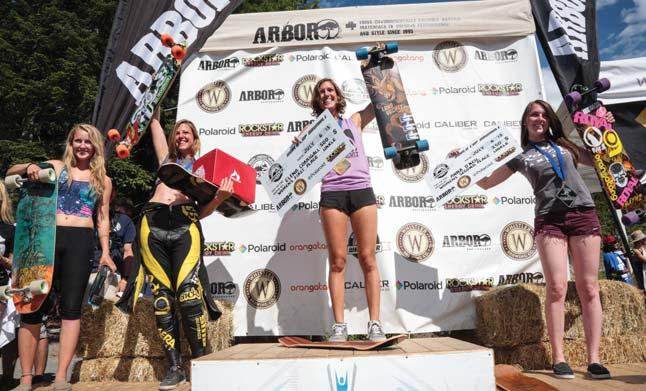 OPEN
1. Jimmy Riha
2. James Kelly
3. Kevin Reimer
4. Niko Desmarais
5. Dillon Stephens
6. Ricardo Reis
WOMEN
1. Elena Corrigall
2. Anna O’Neill
3. Marie Bougourd
4. Victoria Waddington
5. Amy Brendon
6. Jolanda Vogler
JUNIORS
1. Connor Ferguson
2. Bryan Reich
3. Sam Neville
4. Liam Brown
5. Devin Nowlin
6. Jack Lavallee-
GROMS
1. Knox Heslop
2. Quinn Dubois
3. Charlie McMillan
1. Scott Lembach
2. Frank Coté
3. Peter Morin
OPEN
1. Gerald Rosenau
2. Paul Kent
3. Lee Cation
GROMS
1. Deen Mondt
2. Layne Curial
3. Rylin Curial
WOMEN
1. Anna O’Neill
2. Victoria Waddington
3. Lisa Li
OPEN
1. Sean Young
2. Paul Kent
3. Ian Brown
GROMS
1. Rylin Curial
2. Zac Davis
3. Joey Kristiansen
WOMEN
1. Hallie Tutkaluk
OPEN
1. Jimmy Riha
2. James Kelly
3. Kevin Reimer
4. Niko Desmarais
5. Dillon Stephens
6. Ricardo Reis
WOMEN
1. Elena Corrigall
2. Anna O’Neill
3. Marie Bougourd
4. Victoria Waddington
5. Amy Brendon
6. Jolanda Vogler
JUNIORS
1. Connor Ferguson
2. Bryan Reich
3. Sam Neville
4. Liam Brown
5. Devin Nowlin
6. Jack Lavallee-
GROMS
1. Knox Heslop
2. Quinn Dubois
3. Charlie McMillan
1. Scott Lembach
2. Frank Coté
3. Peter Morin
OPEN
1. Gerald Rosenau
2. Paul Kent
3. Lee Cation
GROMS
1. Deen Mondt
2. Layne Curial
3. Rylin Curial
WOMEN
1. Anna O’Neill
2. Victoria Waddington
3. Lisa Li
OPEN
1. Sean Young
2. Paul Kent
3. Ian Brown
GROMS
1. Rylin Curial
2. Zac Davis
3. Joey Kristiansen
WOMEN
1. Hallie Tutkaluk
Afew months ago, following the publication of an article in the Miami Herald about longboard therapy, I received an email from Josh Kasper, a longtime pro skater from San Diego, Calif. In it he shared his intrigue with the idea of longboard therapy and thanked me for the work I do as a therapist. He explained that therapy had been very influential in helping him heal through many challenges in his life. I was so touched by the email that I began a dialogue with Kasper about therapy and skating. I feel that his story is very important to the healing and skating movement, and I want to share it in this issue in hopes that it will be as meaningful to the readers as it has been to me.
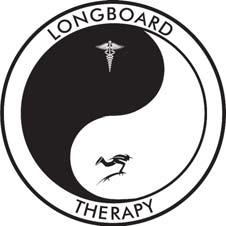
Kasper first began skating at 8 years old, when his brother introduced him to the sport.Around that time, two other life-changing events occurred for Kasper: His parents divorced, and he became a follower of Jesus. “Skateboarding became a key role in my emotional outlet for the divorce, school and even going in and out of church,” he said. By his early teens he was sponsored by Awesome Sports Skateshop while competing in the California Amateur Skateboard League.
In high school, Kasper began to have a difficult time in school, and his mother suggested he begin consulting with a therapist. She made an appointment for him to meet with a psychologist named Paul*, and Kasper found the experience very helpful. “Paul was kind and patient with me,” he said, “even though I didn’t want to open up to him — partly because my father had instilled negative labels on psychologists and what they do — and during the divorce, all the counselors I had met with were trying to get me to pick sides. Paul was a friend when I desperately needed one. He didn’t judge, he didn’t share his opinion if it wasn’t warranted, and he never made me feel less than great after our sessions together.”
Kasper’s mom noticed the difference too. “You were so happy after seeing Paul,” she said to Kasper, “because he told you that it was okay to love both parents equally.”

“This is why I want to share with other skaters how therapy and skateboarding has helped me in my life,” Kasper said.
Kasper went on to enjoy a number of tremendous accomplishments in the skateboarding world. Following his appearance in the World Industries video Trilogy, Kasper went pro in February 1997. At 21, he could hardly believe that his dreams were coming true. “I even had a pro shoe designed for me by Osiris, was featured in numerous videos and traveled the world over several times,” he said. “My identity greatly became associated with being a pro skater, and I loved it — up until 2003, when it was time for my sponsors to ‘change directions.’”
Kasper says that although he knew the time would eventually come for
his sponsors to move on, he still wasn’t prepared for it. When he got the phone call that informed him of his sponsors’ decision, he says, “I was embarrassed, humiliated, crushed completely, and didn’t know what to do.
“I was extremely depressed; I sat in my apartment for days at a time. I would barely skate for fear of embarrassing conversations, sad or pitiful looks, and [I was] just so sad that I couldn’t keep skating at the high level of professionalism I once had. … So I moved back home and got into therapy, again.”
When his mother noticed how sad he was, she suggested that he go see another therapist, Andrew*, who had been recommended to her. He, too, was very helpful.
Kasper consistently attended therapy sessions with Andrew and decided to use the therapeutic context for change. “I forged ahead with [a] new skateboard sponsor and my therapist with me, on the phone, for ‘talks’ at a designated time, usually a few times per week. This was a big change for me because I never thought taking antidepressants and engaging in consistent talk therapy would be such an important role in my healing. I also had to go against some of my original beliefs that the church was the only avenue toward healing, but I am forever grateful that I stepped outside my comfort zone.”
Kasper acknowledges that he and his friends used to look down on longboards, but he has recently taken up longboarding himself, and says that longboarding is a more accessible skating avenue for him at this time. He’s completed a distance push race and plans to skate in the Adrenalina Skateboard Marathon this November.
Currently, Kasper has a pro model with Reliance Skateboards and works at Avalanche Skate Shop in El Cajon, Calif.
He encourages skaters of all ages to seek therapy. “Seek out a skateboarding therapist at a park near you,” he says. “It can change your life.”
I chose to write this story to drive home the point that although longboarding in and of itself is very therapeutic, there are many other ventures to embark on that can add to the full range of holistic healing in our lives. CW
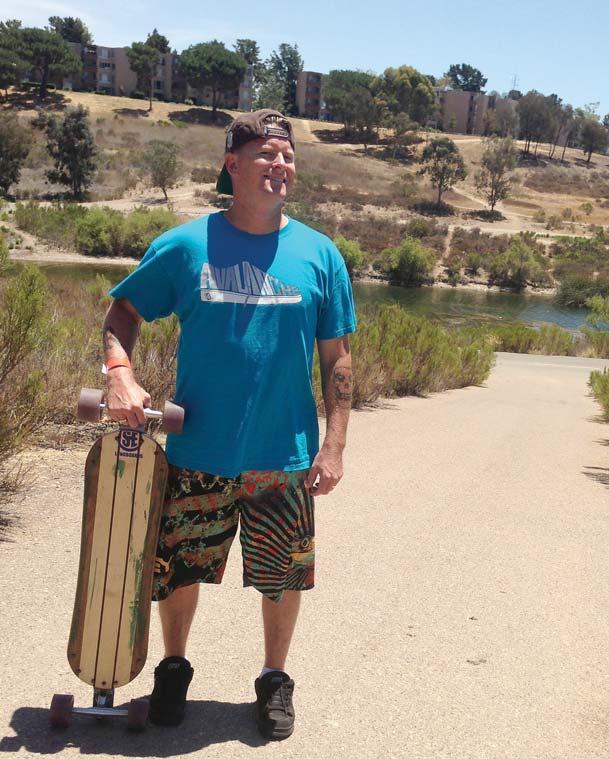
*Names have been changed for confidentiality.




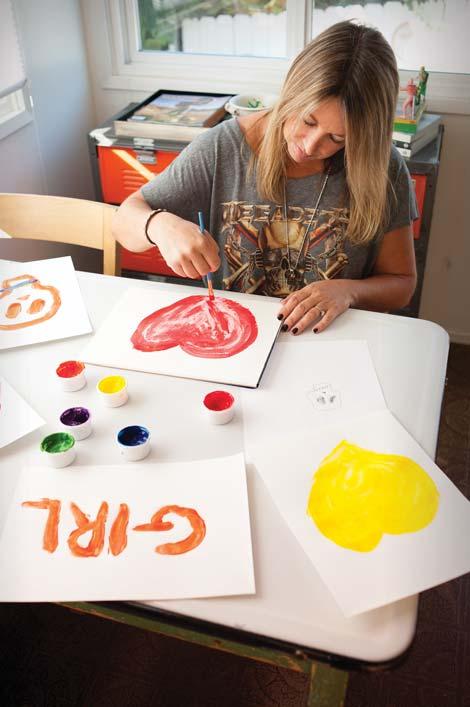
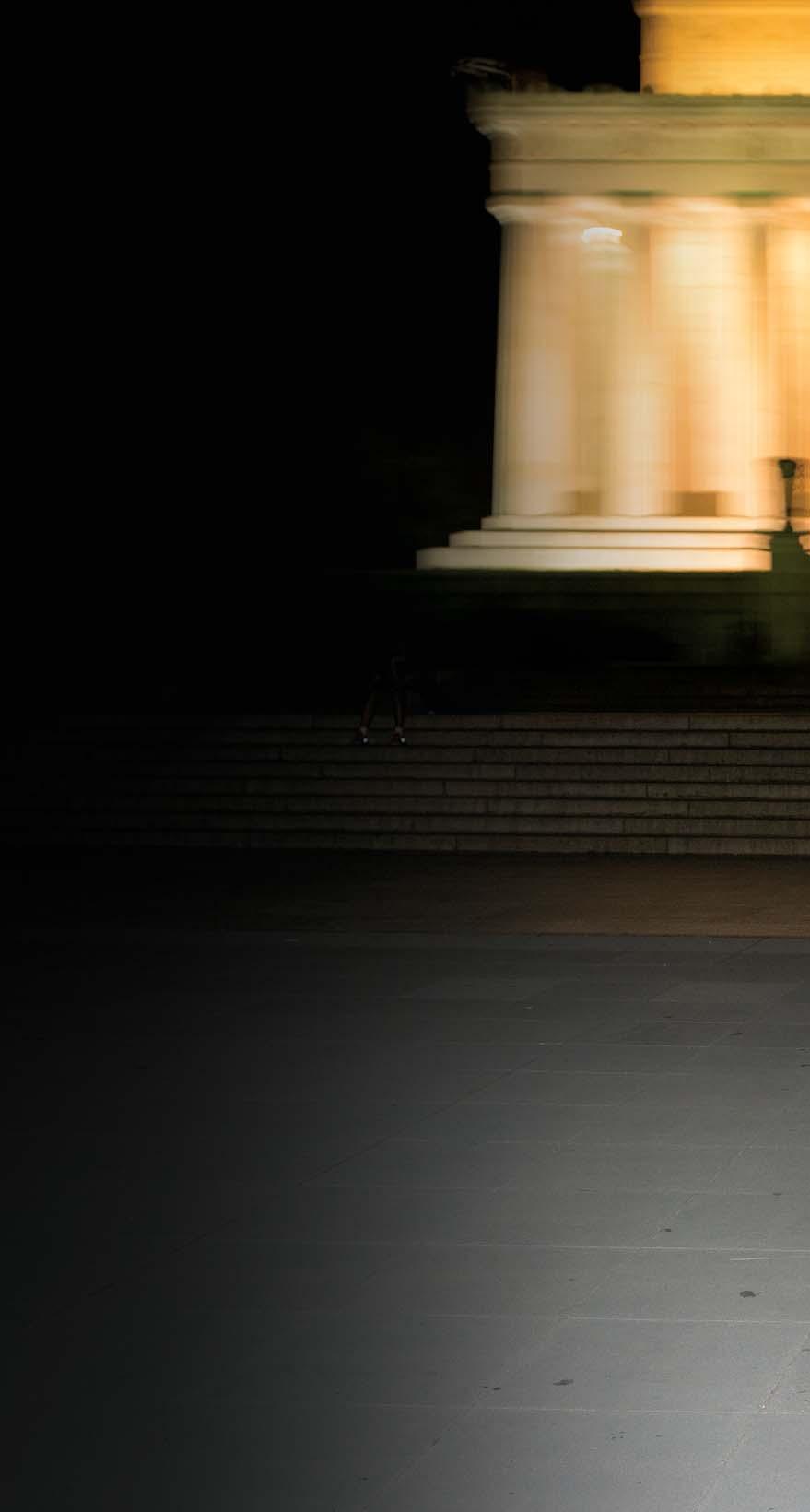
Many ideas in the skateboard industry have been born over great food, cold beer and good friends hanging out. This just seems to be how we all work best. Ask any old-school skater and they will tell you stories from the 1960s and 1970s of how the ideas for various trucks, boards, wheels and even skate shorts and shoes were conceived from ideas thrown around among friends on a California hot summer night. But as we all know, ideas are just ideas, until someone puts the crazy plan into actual motion …
That’s what happened less than a year ago, on October 20, 2012, in my small backyard here in Hermosa Beach. The idea was that my husband Ian and I would invite a couple of friends over, have some food and drinks and talk about skating, surfing and whatever else we felt passionate about. So I threw an invite out to Concrete Wave publisher and founder of Longboarding for Peace Michael Brooke and to Nano Nobrega, the creative director for Dusters California, because I just felt like they needed to meet. Little did I know what would end up happening.
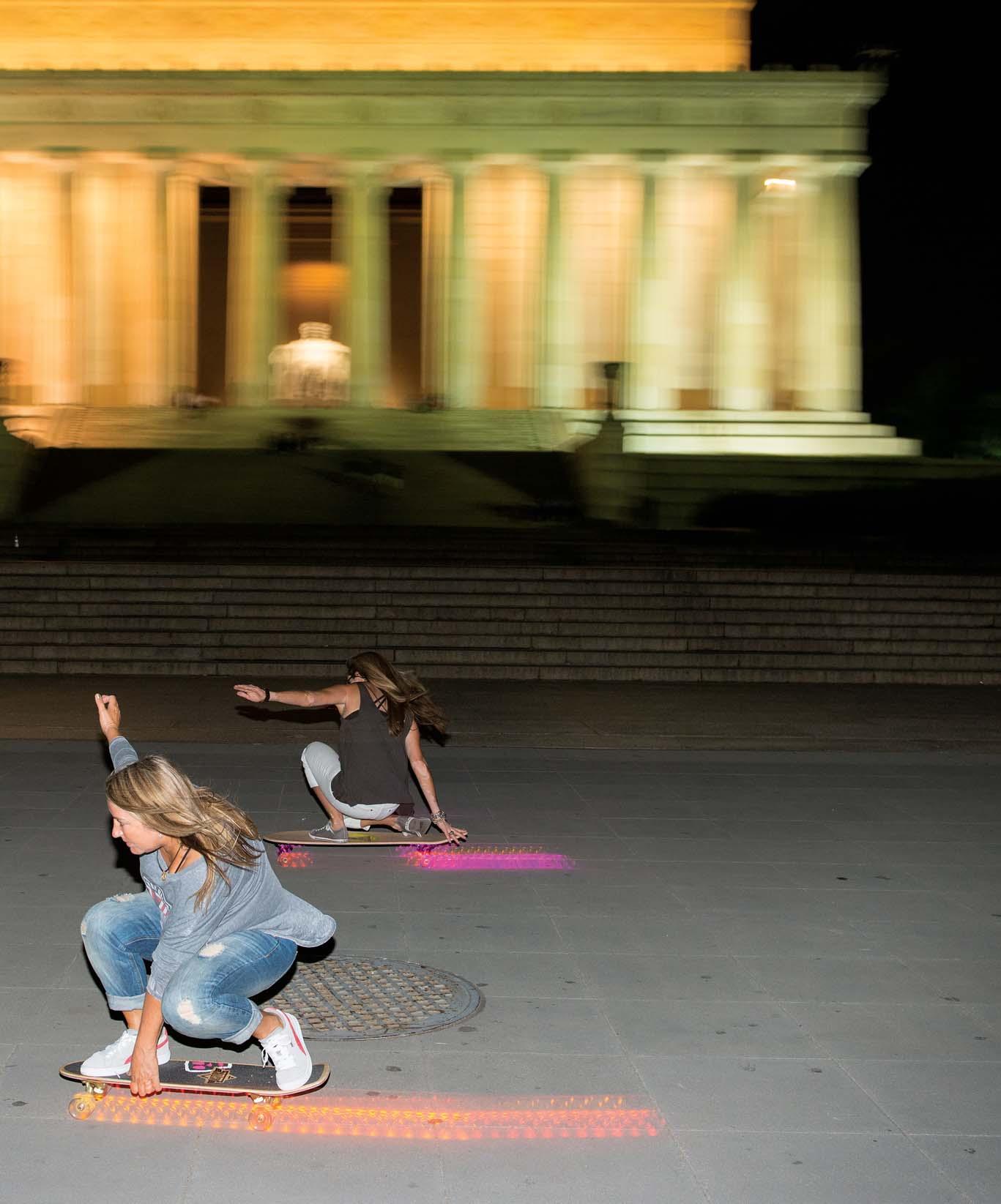
I blame most of this on Michael Brooke. The rest of us were content with having casual conversation, scarfing down chips and guacamole, fresh fruit and veggies and sampling beers. Michael was listening to every word being said, but I could sense that there was something else going on in his head.
All of a sudden Michael threw out a thought that was so simple, yet so crazy, that we all stopped drinking. He asked, “What if Cindy helped create a skateboard for Dusters California that we tied in to Longboarding for Peace, and you then gave a portion of the proceeds to a charity of Cindy’s choice?””
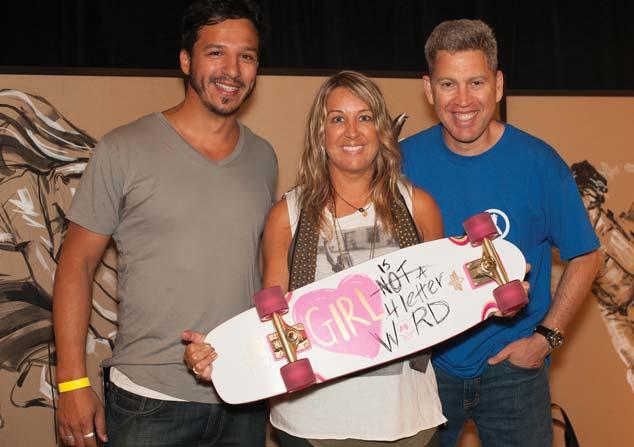
There was dead silence. Then Nano and I started saying, “Yeah, that sounds cool. Let’s do it!” and two minutes later we were staring at each other and wondering what the hell we had just agreed to.
Nano and I became joined at the hip from day one. And when I say day one, I mean the very next day after the nice backyard gettogether — because Michael being Michael, he had already sent us both an email detailing what we’d all spoken about, telling us how excited Longboarding for Peace was to be part of this, and that he was tying it into the Vans Warped Tour in June 2013 — which was a huge deal and meant the board had less than a year to be designed and produced. (The average time of designing a board and production turnaround at a big company like Dwindle Inc. is usually something like this: October 2012 — planning stages of design; Spring 2014 — release product.) There was no turning back — the plan was in motion.
Nano and I found out the hard way that doing a collab like this with so many components is like getting married and having a baby together all within 8-9 months, without really having “dated” beforehand. And Michael found out very quickly what it’s like to be a therapist for a girl thousands of miles way who wakes up and calls him at 7 a.m. with questions, concerns and requests for advice.
Both of the boys learned that I am pretty “buttoned up,” sending detailed emails of due dates and lists of what needs to be done and being a stickler for following schedules. I will also show up at your office and camp out to get things moving if need be. I am sure at some point they were calling one another and saying, “What the hell were we thinking?”
And I learned that a collab of this caliber isn’t easy and requires patience and teamwork, a lot of planning and many sleepless nights. I also learned very quickly that Michael had my back every step of the way, even when the going got tough or I doubted myself and what I was doing.
You can always give artwork to a company and ask them to slap it on a board, or you can go an even easier route and simply attach your name to a project of your choosing and let others do all the “heavy lifting.” But neither of those was what we wanted to do.
Nano and I started with a series of one-on-one meetings, usually choosing to throw ideas around over lots sushi or gourmet pizza, as it seemed to be an environment that worked well for both of us and had fewer distractions. One of the first steps was to walk through the entire Dusters line so I could really get a feel for what materials were being used and what board shapes they had already done, and learn from the ground up how the process worked and what to expect.
I knew I wanted a board shaped kind of like my old-school poolriding boards, but I wanted girls to be able to ride it easily on streets and sidewalks and for it to have a great turning radius. I wasn’t keen on
doing a full-on longboard yet, as I felt the need was there for something else in the women’s market. And that something, in my mind, needed to be a cruiser board that was fun to ride anywhere and easy to carry or shove in your locker at school like I used to do back in the day.
I’m sure it wasn’t easy when I became adamant and at times a bit intense on how I wanted the board to ultimately look and ride. Being as hard-headed as I am about certain things, I really felt that if it didn’t live up to my expectations, I simply didn’t want to do it. Hell, I had waited 30 years to put my name on a board, so I was determined to do it right. Luckily Dusters really listened to what I was saying and went the extra mile to make it all happen, for which I am very grateful.
Graphics were a whole other thing. I spent weeks and weeks pulling together ideas with Nano, analyzing trends and colors and playing around with wording as well as art. Ultimately I went with my gut, using a strong “pro-female” message with a color palette and lettering that was a combination of feminine and edgy, with a little “punk” thrown in for good measure.
After staring at Pantone color charts for more than an hour one day with Nano, I was sitting in the Dwindle meeting room and looking at boards on the wall. My old friend Rodney Mullen’s board caught my eye, and I realized that it had the perfect shade of neon pink integrated into its design. So I just kept telling Nano — that’s THE pink! From then on I started referencing the pink in my board as “Rodney Pink.” So I have Rodney to thank for the neon pink heart.
I spent a lot of time coming up with all the lettering and graphics, using paint, pens, pencils or Sharpies. And in a new-school twist, when I was away on location in my hotel room late one night and had no sketch pad or pens, I started playing around on a drawing app on my iPad and created the lettering that we would ultimately use for the word “Girl” on the graphic.
Nano then took my pieces of artwork and started making sense of them. He’d make a layout and run it by me, I would add my suggestions or thoughts and we’d do it all again — and again. I can’t even tell you how many layouts we did together and how many changes were made. I do know that I have more than 600 emails in the file I created for this project. I sincerely believe that for both Nano and me, this has likely been the hardest and most time-consuming project we have done in our careers.
Some of Nano’s best ideas were thinking up the “extras” like having the layer of bright pink wood running the length of the board so the pink would show through in the wheel wells; taking my skull drawing and substituting it for the O in “Word”; embedding the skull into the grip tape; and convincing me that it would be edgy and cool to add my personal motto and signature to the tail of the board — all in gold lettering — right below the Longboarding for Peace and GRO logos. Gold trucks were something I felt were key to making this board “me” and having it stand out, and since Dwindle wasn’t doing gold trucks at the time, that was yet another hurdle to overcome. Gold lettering and little gold skulls in the wheels competed the design.
Picking a charity was also a difficult process. This was to be something that I was tying my name to, something for which I would eventually decide to sign away every penny of my profits, so I needed to believe in it 100%. I looked at nonprofits that were anti-bullying (something I believe in very strongly). I spoke to a friend who works at the White House and is involved in youth and fitness foundations. I researched online until 2 in the morning deciphering what each nonprofit does.
Ultimately I decided I really wanted to give back to the sport that has done so much for me, and I wanted this board to benefit girls. Girls Riders Organization (GRO) was the obvious choice. GRO’s Courtney Payne-Taylor has been a tremendous supporter of girls in action sports over the years. I knew I had found our tie-in.
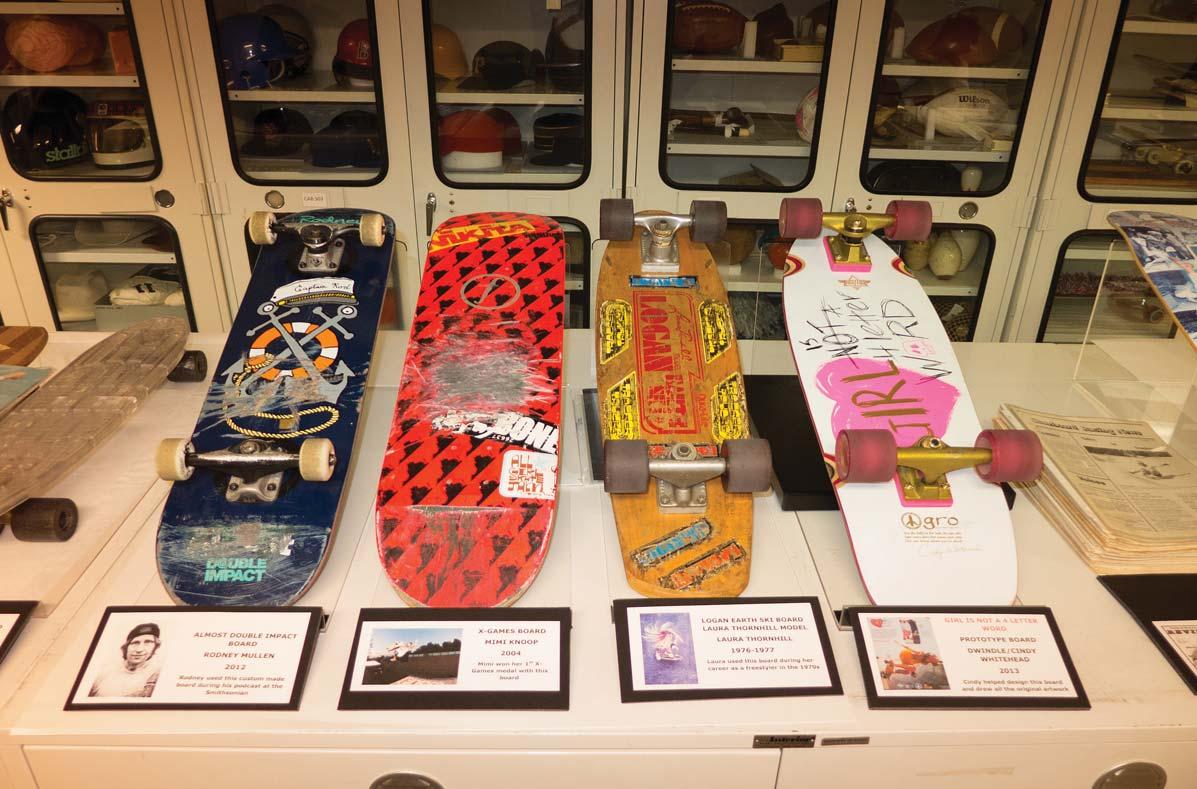
After months of planning, the first prototype came in. That was a huge day for me. I was nervous. What if it didn’t live up to what was in my head? I knew I could go back to the drawing board if I needed to, but so much work had been done by so many people, I was keeping my fingers crossed that I would love it.
There really was no reason to worry; it was perfect — well, almost perfect. The only flaw was that the trucks were more rose gold than bright gold. But Nano noticed it before I did and was getting it corrected before I even walked in the office door. The guy just gets design, and he will fight to make sure it’s right.
About five weeks later the second prototype came in. This time everything was 100% right on, which meant we could move to fullforce production.
While we were waiting for the shipment, I started planning a photo shoot with the new board and enlisting my husband, Ian Logan — an advertising shooter — to take the photos. At this point no one except Ian, Nano, Dwindle, Michael and I had seen the board. (The whole project was so secret that even my closest friends and family did not know about it.) These guys are the ones who listened for hours on end to my ideas, marketing plans and anything else I dreamed up late into the night. To say that I owe them big-time is an understatement.
It’s one thing to fail when only a small group of people know what you are up to, but to actually put yourself on the line publicly for a product that may or may not fly is another thing entirely. I sat on the
photos from that shoot for weeks. I was terrified to “put it out there” and let people know we had this board coming out. What if no one liked it as much as I did? What if people didn’t understand what we were trying to do? What if no money was raised for GRO, or no awareness for Longboarding for Peace? And what if I disappointed Michael, Dusters and Dwindle? I was thoroughly freaked out by the possibilities of failure.
When I finally saw the board as a full page in the Dusters California catalog, it actually became real to me that this whole project was “happening”; it was really being produced and it was going to be out there in stores all over the USA. As soon as we started releasing images via Instagram and other social media channels, people were asking where they could buy it. People in the skate industry were also supportive of the concept, the design and the board itself. I realized I could now breathe, as we seemed to be into the home stretch.
ties was being created via something as simple as a skateboard.
Five days later on June 20, I was at LAX boarding a plane to Washington, D.C., with my ’70s skate gear, plus the prototype board wrapped in plastic and its original artwork, ready to hand over to Jane at the Smithsonian. I didn’t trust shipping it — after all we had been through, I felt like it was a baby and I needed to make sure it got there OK. People had heard via ESPN that Tony Hawk was donating his board that weekend and started asking me about the board I was carrying through the terminal, and to tell them more about women’s skateboarding and Longboarding for Peace. It was amazing to see people’s interest. One man was very apologetic and said he had not known that there were female pro skaters. A female flight attendant posed with me for a picture with the board, and people on our plane made room for the board in the upper bin so nothing heavy would damage it during the flight. It was an amazing journey.
Walking into the Smithsonian is everything you imagine in your head — magnified by 100. It’s prestigious and glamorous, and it gives you chills to be with people like Jeff, Jane and Betsy, who know so much about our history and are genuinely excited to show you pieces from it. We were taken into the “basement” of the Museum of American History building, where Jane, wearing white gloves, gently took the board from me and placed it on its stand. It was now residing next to historical items like Prince’s guitar, the original Howdy Doody, Muhammad Ali’s fight robe, and skateboards from other pro skaters I know and love. The whole experience was completely surreal.
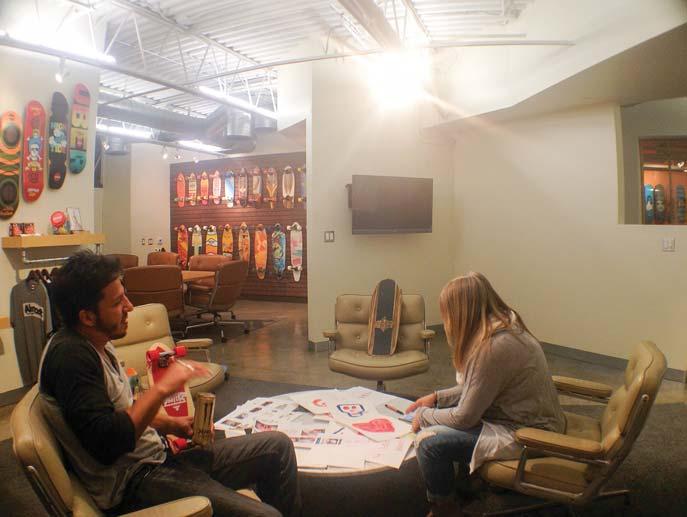
The next day Nano and Courtney flew in and were there with me to see the board being signed over and displayed during Innoskate, a public skate event put on by the Smithsonian’s Lemelson Center on June 22. The public’s reaction to items on display from skateboarders like Tony Hawk, Rodney Mullen, Chris Haslam, George Orton, Judi Oyama, Robin Logan, Laura Thornhill, Patti McGee, Di Dootson, Mimi Knoop and many more was amazing. ESPN also covered the event. So the “Girl is NOT a 4 Letter Word” board was now officially out there in the world. There was a full day of skateboarding on a mini halfpipe, skate items on display, movies at night, and I got to spend time with people I love in the skateboard industry.
But a few months later, on May 10, another idea was born over food and friends (but this time no beer). During the IASC conference, Dwindle CEO Bod Boyle, Courtney from GRO, Michael and I had a lunch meeting. Betsy Gordon, Jane Rogers and Jeff Brodie from the Smithsonian were also at our table, and we were all talking about the new board. Jane mentioned to Bod that the Smithsonian had asked me about a year before to donate some pieces of my ’70s skateboard history to the museum, and then she asked if we would consider donating the prototype and original artwork for the “Girl is NOT a 4 Letter Word” board as well. This had to be the biggest honor any of us involved in this project could have ever hoped for.
My birthday is June 15, which just happened to be the day that the board launched at the first stop of the Vans Warped Tour. I couldn’t have asked for a better birthday present. Dusters had graciously agreed to give away one board at every stop as part of Concrete Wave’s Passport program. (Pick up a Passport at the Longboarding for Peace booth, visit six nonprofit booths at the event to get it stamped and you’re entered into a drawing to win the board or other cool items.) The booth was overrun at each stop by kids wanting to win and willing to learn about “giving back” to do so. Michael’s plan had worked. Awareness for chari-
I feel really lucky that I was able to skate the new board all over D.C. during our stay — from riding down 14th Street with about 500 other skaters for National Go Skateboarding Day, to skateboarding in the museum hallways (and lobby — sorry!), and then wrapping it all up with a 2 a.m. skate tour of national monuments and memorials with Nano and Laura Thornhill while Ian shot photos of us. For a city that doesn’t “allow” a lot of skateboarding, I think we all conquered and brought a little bit of CA to D.C.
As I write this article, it’s now been a month since the boards arrived in the warehouse, and I was just told by the Dwindle sales team that the first shipment of the board is sold out and another production order has been placed due to the demand for more. I have received notes, photos, emails and Facebook messages from moms, dads and many girls telling me they love the positive message the board sends, that they are very interested in learning more about Longboarding for Peace and that they are riding the board and loving it. These are the things that keep me pushing forward as we continue to roll on from here, creating awareness for female skaters and Longboarding for Peace and raising money for GRO.
Thanks to everyone who has been involved in this project. I greatly appreciate all your love and support. CW
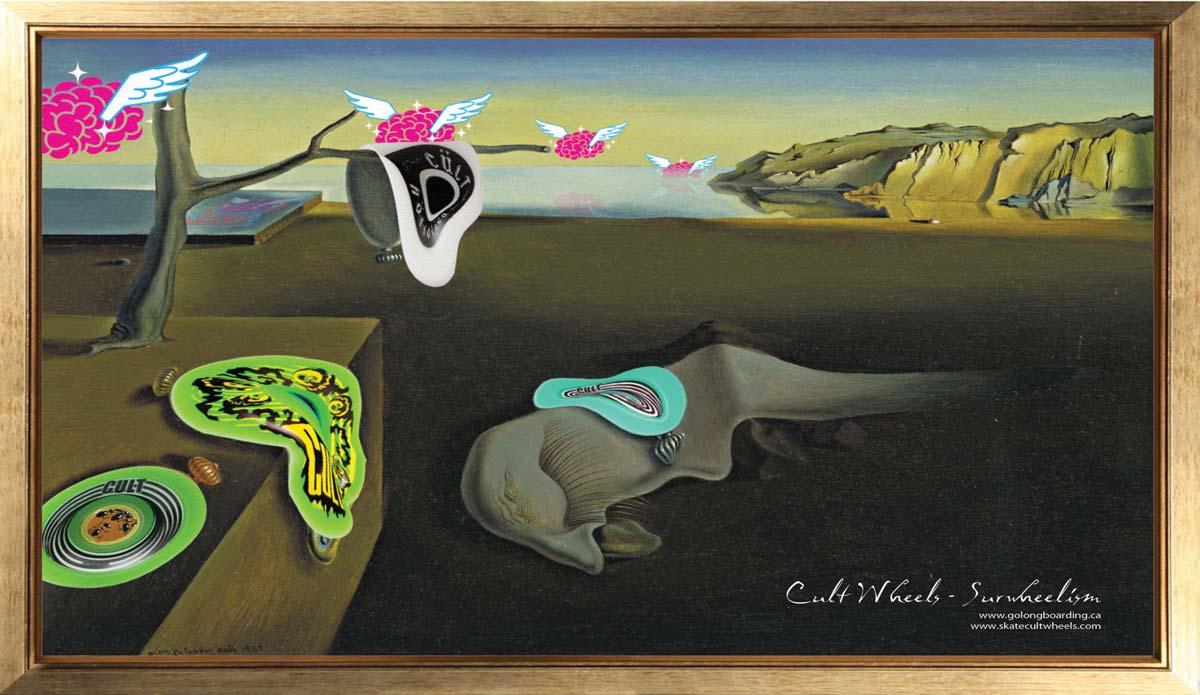

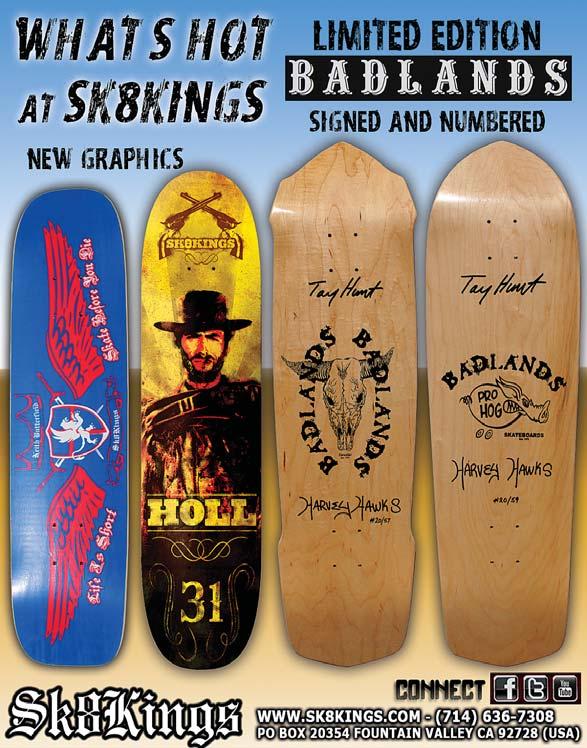
Faithful readers of Concrete Wave will know that we’ve explored some pretty unusual topics in the magazine: Spirituality. Serendipity. Authority. In this issue, I wanted to give readers an opportunity to understand how much of our skate community is connected. But as you will soon see, it goes deeper than a sense of connection. It’s where those connections take us.
Over the course of several months, the Vancouver longboarding community found itself in the media spotlight after three very serious longboard incidents happened in rapid succession. While there had been other such incidents in previous
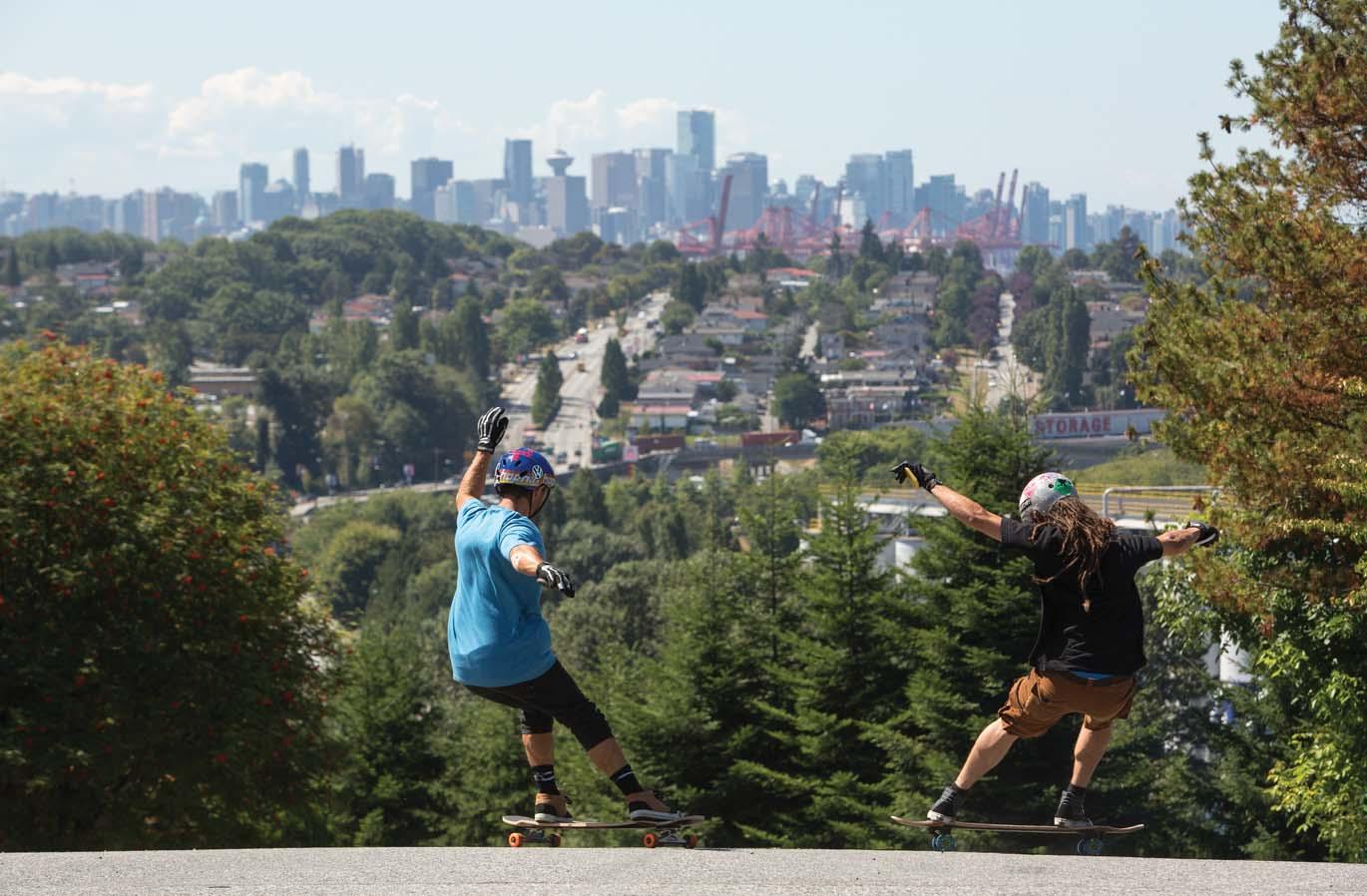
years, these accidents happened within just three weeks, and they prompted a huge media and community focus on longboarding. Many newspaper reports appeared, and many people posted comments and opinions at various new sites. Longboarding even wound up on The National Canada’s major newscast watched by millions. Longboarders worldwide follow what happens in other communities with a cautious eye. We’re all connected. When a longboarder suffers a serious injury or the media decides to shine a spotlight on “the crazy longboarders,” it impacts all of us.
The question that I found myself asking is how best to communicate the concept of unity within the world community. When longboarders use their connections, it helps to build a stronger community and it keeps things progressing. I felt the best way to illustrate this concept was to bring you a feature that connects many different people. Usually I try to keep myself out of the stories in CW. But as fate, or karma, would have it, this time I am part of the story. So, let me take you on a journey. It winds through a number of people, places and ideas, but all are connected to the power of skateboarding, karma and community.
Back in the mid-1990s, I was a struggling photocopier salesman. I won’t bore you with the details, but my life was vastly different than it is today. I was trying to sell photocopiers to book publishers, and it wasn’t working. In truth, I just couldn’t get excited about machines that put black marks on white paper. I was the worst salesperson on the team, and I was filled with a sense of dread at work — and dread is putting it mildly.
But I kept at it, trying to get something to happen. Eventually, I wound up getting a meeting with Nick Pitt, the co-owner of a place called Warwick Publishing. It was not easy to get the meeting, but I must have worn the poor guy down.
At our meeting, we politely bantered back and forth, and I explained the newest technology that my company had developed. But I soon realized that things were going pretty much nowhere and I would have zero chance of selling anything to Nick. But then I casually mentioned that I had a website. Back then, having your own website was still a pretty unusual thing.
“What’s it about, this website of yours?” asked Nick.
I recall being fairly guarded in my answer.
“Ah, it’s about skateboarding,” I said. “But let me tell you more about what we can do for you with respect to your website.”
The truth was that my $5-a-month “Skategeezer Homepage” wasn’t much. It was a collection of people’s experiences with skateboarding. But it existed, and it was at that moment that Nick said the words that would change my life.
“That’s interesting,” he said. “We’re thinking about doing a book on skateboarding. Why don’t you put together an outline?”
Now that was something I could get excited about. I felt energized, and I immediately got to work. My plan was to write the first book on the history of skateboarding. Nick accepted the outline, and within a few weeks I had a contract in my hands. It was a surreal feeling. I had never written a book before — and yet I had somehow leaped over the hundreds of people trying to get published (commonly known as the “slush pile”).
At this point you are probably thinking, “OK, that’s cool. He ran a little website, happened to meet the right guy at the right time and found his bliss.” But the truth is a little more complicated.
The Skategeezer Homepage started up in 1995 through the efforts of my brother, who had taught himself how to do HTML. This was before Google and Facebook and spam. Connecting with fellow skaters via the flourishing Internet back then was truly magical.
There was one particular guy I had met online who ran something called SkateTrader. It was a fanzine, and it was published by Todd Huber.
Todd would later go on to create Skatelab — the world’s greatest skate museum. At the time, however, it was the ads for longboards in Skate Trader that grabbed my attention. I did manage to find a longboard at a shop called Full Tilt. This was back in 1995. While I enjoyed the Foundation 48”, I knew in my heart that I wanted more.
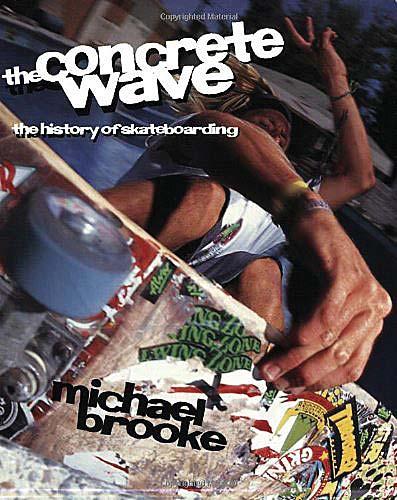
I contacted a few Canadian distributors to try to find out more information about longboarding. Both S&J Sales and Ultimate Distributors were very gracious with my requests. For a brief moment, I even dabbled in trying to sell longboards through a mail-order site called “Art of the Carve.” Full disclosure: I sold ONE complete.
But as I started to do research for the book, I realized that I needed help. I got back in touch with the two distributors. S&J Sales were very helpful in giving me some much-needed updates on the current state of skate, and Norm MacDonald of Ultimate suggested that I meet up with his boss, Kevin Harris, who had started the company in 1984.
But Kevin was much more than a skateboard distributor; he was a skate legend. Kevin was a professional freestyler for Powell-Peralta, and his board graphic was truly inspiring — especially to Canadians. Back in the ’80s, I’d been a freestyle fanatic. I think I went through at least five of Kevin’s decks, and for my 22nd birthday, a friend created a hand-painted Kevin Harris sweater.
So it was something of a surreal feeling driving up to meet Kevin at his Peterborough, Ontario, office. We immediately got into things, and I fired a huge number of questions at him. He took it all in stride and graciously answered all my questions. It was apparent that doors to the skate industry that had previously been tightly shut were going to be opened through his
connections. You probably wouldn’t be reading this magazine had it not been for his support with the book.
My book was originally going to be called The Endless Wave. That was soon changed to The Concrete Wave. It was released in the spring of 1999 and eventually sold more than 42,000 copies. It also turned into a 52-part TV series, and, of course, the magazine you now hold in your hands — all the result of one small statement uttered by a book publisher and the amazing support of a fellow freestyler. As I write these words, I am reminded of the “butterfly effect,” the idea that sometimes the smallest actions can have huge, unpredictable consequences.
Over the years I’ve maintained a pretty close friendship with Kevin. We sometimes joke that the magazine he publishes, Concrete, will merge with mine to create Concrete Concrete Wave
But the story doesn’t end here. Not by a long shot.
For the past two years, the Cloverdale Rodeo, held in a small town southeast of Vancouver, has hosted a major freestyle contest. Since Concrete Wave is the only magazine that covers freestyle, we’ve played a small part promoting the event. But the truth is that Kevin Harris has been a key force in getting things rolling. Working tirelessly next to him is the show’s producer, Monty Little, but we’ll save his story for another issue. The Rodeo has showcased some fine freestylers, but it also created what can only be described as another amazing connection.
Concrete Wave: So how did you wind up befriending a Mountie with a tattoo of your graphic on his arm?
Kevin Harris: I had seen this tattoo of my board graphic a few months before. Someone had sent me an Instagram photo. I had no idea who the guy was, but it was a great version. Jordan, one of the folks that works here at Ultimate, also found out about the tattoo and said, “Hey, we should do something for this guy.”
Have other folks sent you photos of their Mountie tattoos?
I have gotten photos over the last number of years. I looked at it and thought it was awesome. Everyone has their own little bit of spin with the logo.
Did you have any other information about the tattoo?
We had no idea who the guy was or where he lived.
Did you try to do any follow-up?
About a month after Jordan had showed me the tattoo, I was looking into the possibility of trying to track [the guy] down. We wanted to get his email address and hook him up a board or something. It was kind of loose: “If anyone spots this guy, let me know.”
So what happened at the Cloverdale freestyle contest back in May? You were the MC. There was a break in the events. We had about a half-hour before the pro event started. It was a free-for-all session. It was one of those situations where I got off the mic. I looked over and I saw this RCMP officer come into the area. We were pretty packed in there.
What did you think at first?
I thought “Well, it’s kind of weird, but I guess he’s just checking it out.” Then a few minutes later someone comes up to me and says, “That RCMP officer wants to talk to you.” At this point, I was really wondering what was happening. I really wondered why this police officer needed to speak to me.
What was running through your mind?
I was thinking, “Did I speed to get here? Do we have a problem?” It’s the typical skateboarder reaction. I recently got busted by the cops and security in downtown Vancouver during a legitimate demo. It was for Go Skateboarding Day.
So what happened next?
Well, he puts out his hand and says, “I just wanted to introduce myself. My name is Troy Derrick.” He then rolls up his sleeve — and I realize it’s the tattoo of my graphic that I’d seen on Instagram. It all just clicked. Then I immediately started to wonder about this whole situation. I mean, he’s a freakin’ RCMP officer and he has my graphic on his arm. I just figured “OK, he’s an RCMP policeman and he likes the graphic, and that’s why it’s on his arm.” It’s the only thing going through my mind. But then things started to turn a bit frenzied. I am there with my board. He’s there and soon everyone wants pictures.
I guess it was getting a little chaotic then?
Well, I’m trying to run a skate contest. I eventually got back on the mic, but I could see there’s lots of activity going on around Troy. People are posing with him and sending up on Twitter and Facebook. Soon it turns out people are sending me these photos with Troy. They are coming from
Europe and Australia. So I know it’s spreading around like crazy.
We had another break and I went up to Troy. This time I took my wife, Audrey, and explained to her about the graphic on his arm. We’re still at the introduction stage of things.
What really took things to the next level was the fact that my parents happened to be at the event. They were sitting in the bleachers and asked Troy if I could show his tattoo off to them.
What happened when you introduced Troy to your parents?
Again, in my mind I am thinking it’s all pretty straightforward: He’s RCMP, he likes the graphic and he’s got a tattoo. But as soon as the introductions are finished, I realize there’s way more to this than I think. He thanks my parents for putting me on the planet and exclaims, “This guy changed my life.” Troy starts talking about how I did a demo in Prince George and how I spent time with him. Of course, I had no recollection of meeting him all those years ago.
Troy began to follow my career, and he knew that in Canada being a pro skater was extremely difficult. But somehow, Troy had picked up on the idea that I did what I wanted to do and had made a career in skateboarding.
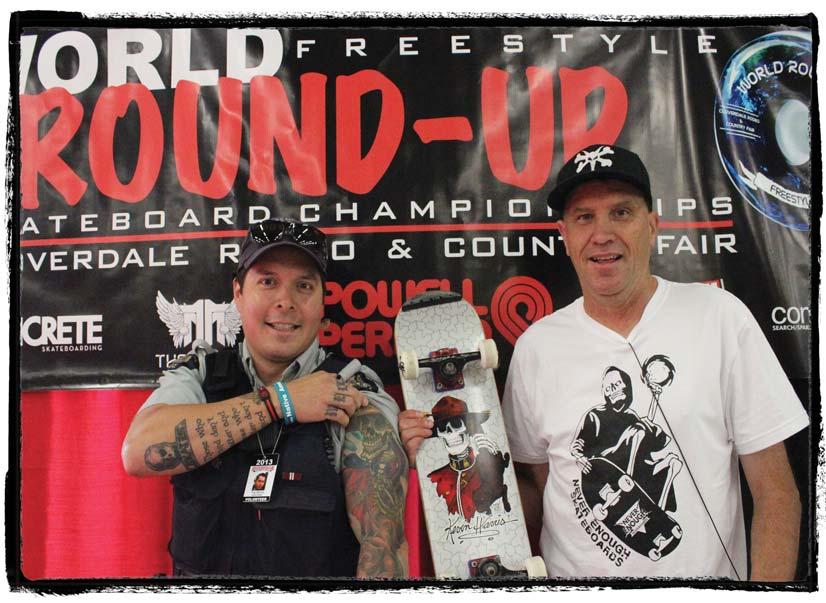
How did this all impact his life?
Troy said that he wanted to be an RCMP officer, and that I gave him the inspiration to pursue
that dream. Troy told my parents that the reason he was in uniform was a result of my pro career. I was floored. I had no idea of the significance of the tattoo. It was truly an emotional moment. Troy had put the tattoo on his arm because of me, not just the graphic. I’ve always taken my career as a professional skateboarder seriously, and I’ve enjoyed meeting up with folks year after year at various demos. I knew that I’ve had some impact on people, but had no idea how deep this runs.
What’s happened since the time you first met? We’ve gotten together on a number of occasions. We’ve eaten together and we send funny texts to each other. It feels like I’ve known him for 30 years.
Why do you think it took this long for him and you to connect? I mean, you’re practically in the same town.
I’m not sure. I think it’s one of those things where Troy might not have felt comfortable tracking me down. I guess he didn’t want to push things. But the way things worked out, it was the best possible outcome. Troy did not know I was in that building. He just so happened to be working security detail for the Cloverdale Rodeo Festival and spotted the sign for a freestyle contest.
You’ve spent a long time helping to build a skate community in Vancouver and Canada. You’ve got a distribution network, you have built skateparks and opened up a tremendous number of channels. What do you think you can do to help the longboard community?
Well, I may not come from the background of longboarding, but I come from the background of skateboarding. I want to be there to help no matter what aspect of skateboarding is represented. I want to step up to the plate and help in any way I can. We’ve had very productive meetings with the local community and I truly can understand that 13-year-old who is passionate about riding.
How does Troy Derrick factor into all of this?
This is the first time in skate history that you have a guy like him who represents the RCMP that definitely sees it from both angles. He understands the residents’ side who are concerned about safety. But he also sees things from the longboarders’ perspective. This is far different than the meetings we used to have in the ’70s and ’80s where it was so one-sided against skateboarding. The knee-jerk reaction is just to ban it and make it illegal.
That’s not the answer, and Troy fully understands this. You need someone to speak up for the skate community and explain, “If you do this, this is what’s going to happen. So please listen to my advice.” Troy has a history and perspective that will benefit both sides.
How has he done at the meetings?
He’s had a tremendously positive effect. Troy is well-spoken and is very educated about both sides. He grabs people’s attention and convincingly explains the need to come up with solutions for the riders. Troy comes across as a problem solver, and the community has really picked up on this. His balanced approach has impressed many people. Troy really understands what it’s like to be a skater because he is a skater. He’s been chased out of skate spots, just like all of us.
Skaters are often stereotyped. What’s your take on this?
I’ve been skateboarding since the 1970s. Many people who don’t understand skateboarding have assumed I was involved with drugs or alcohol or was a criminal of some kind. I’ve been married to same woman for 30 years, I’ve never drunk a drop of alcohol and I’ve never done drugs, and I’m a professional skateboarder. I love putting these points across because it breaks down the stereotypes.
In all your experiences, does anything match this?
This is a pretty unique thing to happen. Everything came together so quickly. I am humbled and honored. I am 50, still doing demos, and just recently a woman came up to me and told me that she was inspired: “I’m going to pull my husband off the couch and get him skateboarding because if you can do it, he can too!”
I met up with PD of Skull Skates, aka Peter Ducommun, when I started the research for The Concrete Wave book. In May 1999, PD was gracious enough to hold a book launch in his shop in Kitsilano, BC. PD has had a tremendous impact on skateboarding, and he’s never wavered from his vision. He’s also had a huge influence on Troy Derrick — but you’ll learn more about that in a few pages.
Concrete Wave: What is your take on the growth of longboarding in Vancouver?
PD: Longboarding in Vancouver has taken hold on many levels since we first started selling Sims Taperkick longboards in our shop the ’70s and continued selling Madrid longboards in the ’80s and eventually began designing and producing our own Skull Skates longboards in the early ’90s. The longboarding movement on the west coast of North America actually began in the ’60s with clay wheels being added to water skis. The major change we have seen recently has been the development of more downhilling techniques making their way into skaters’ skill sets.
Bricin Lyons of Coast Longboarding has been a major force in organizing downhill events early on and has been a big influence on the worldwide racing scene and has worked hard to establish that area of longboarding. Our shop deals with all kinds of skaters, but as a longboard supplier we tend to focus on cruising, commuting and freeriding. We don’t have a lot of patience for fake DH kooks that hang out on racing forums instead of paying dues and building abilities out in the tactile world.
What is your reaction to the stories about longboarding found in the various media?
Kids eat s---going fast sometimes and find out that the real world can hurt and kill you. It’s like a baby trying to sprint down the street without learning to crawl or walk first — ugly! When humans get hurt or die, the media jumps on it so they can grab your attention and sell you “energy” drinks and other crap you don’t need. The media is not the problem; people seeing digital images and trying to replicate them without proper dedication and commitment to learning is more problematic than some cheese newspaper running stories about carnage.
What do you feel about the future of longboarding in Vancouver?
It will be fantastic, terrible and unlike anything we have ever experienced.
What is it about longboarding that has confounded many in the rest of the skate industry?
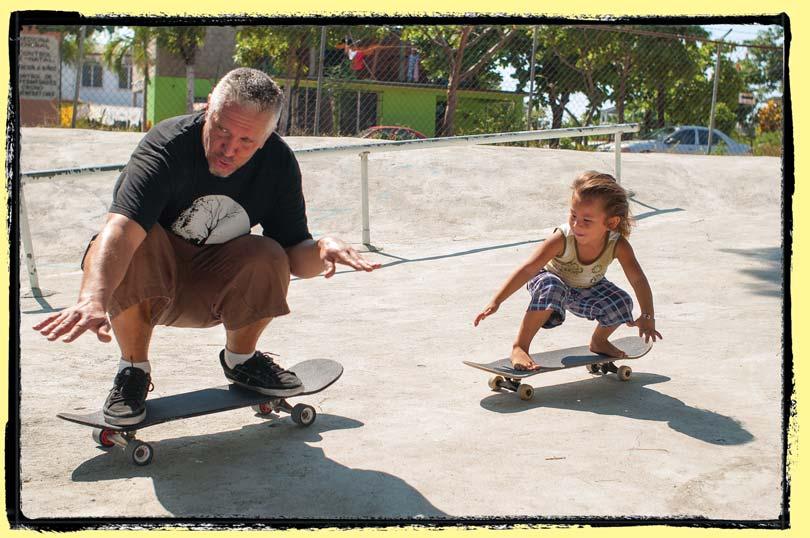
At first many in the skate industry mocked longboarding; now they are striving to compete with longboard companies.
Money is a very strong motivator for most. We all have bills to pay. Kooks gotta live, too.
Do you think the longboard community has done a good job in responding to the criticisms from the public about longboarding?
Most people that longboard are not politicians. Our duty is to mentor and teach new people coming up now to act as public relations agents. If we educate within and build that way, we will achieve much more than responding to media hype. After five-anda-half decades, is it possible that the media machine will embrace skateboarding culture? Unlikely.
Bricin "Striker" Lyons is a legend in both the Vancouver longboard community and the world longboarding community. He’s larger than life and has an energy that few possess. Whether he’s on the mic announcing contests or bombing hills barefoot, one thing is certain: Bricin Lyons pours his heart and soul into longboarding. I recall the day he contacted me and told me about his bus tours of the Sunshine Coast. I knew right there and then I wanted to publish his stories. We’ve been friends ever since.

Concrete Wave: How long have we known each other?
Bricin Lyons: I figure it must be at least 14 years. I found out about you from International Longboarder Magazine. I couldn’t believe there was a magazine for longboarders. When I saw an ad in there from Highway Longboards that had a “12% grade” sign, it was amazing. It was Schnitzel [Jody Willcock — Ed.] who put the ad in. I tried to call the number, but it never worked.
Did you ever think the longboard community in Vancouver would grow to the size that it has? No, not at all. I never thought it would ever grow this big. It was just something we did. I did feel there was something going on — there was energy. I realized I had to put a name on it, so I came up with the word Coast Longboarding. I never thought it would grow to a point where I don’t know everybody in the scene.
What’s the one thing that gives you the most satisfaction about building the scene in Vancouver?
I think the fact that something I put my energy into spread around the world. It amazes me to see how this idea grew.
What advice would you give people wishing to build their own longboard scene? You gotta get a notebook first.
I mean BIG pieces of advice! You have to reach out to people and bring them on board. You must have a vision — a plan. If you have something crazy in your brain, even if it’s just a simple cruise, you gotta be stoked when you spread the mes-
sage. You gotta be out there. Sure, there’s Facebook, but nothing beats being out there face to face. Plus, nothing beats the headache you get ripping tape with your teeth when you put up posters on poles.
What is your take on what’s happening right now with the calls to ban longboarding? It’s gotten a huge amount of media attention. I’ve been on the news before, but for this latest round I am sitting back and staying out of things. Instead of getting involved as a spokesperson, I’ve put on safety clinics. In the last two years we’ve trained 28 Coast riders in first aid. Our goal is to have 100 trained. I think the local companies, Landyachtz and Rayne, are doing a great job of stepping up. They are helping younger riders get into longboarding by closing down roads.
How has longboarding changed your life? Wow. It is my life. I mean, how many babies have been conceived at Danger Bay? Even my own kid was conceived at the Salt Spring Slasher. I’d never thought I’d be flying around the world announcing at all these events. Longboarding has had an incredible impact on my life. Who would have thought I’d become a writer? It’s all thanks to longboarding.
Where can we read your pearls of wisdom?
cariboobrewing.com/category/strikers-tales-news
Les Robertson of Rayne Longboards has been featured a number of times on TV, radio and newspapers discussing longboarding. He always remains self-assured under the glare of the media. He’s been able to give the general public a balanced perspective on longboarding. We wanted to get his take on things. As expected, he pulled no punches.
Concrete Wave: The community of longboarders in Vancouver has certainly grown in the past number of years. What are some of the key things that stand out in your mind?
Les Robertson: I think for how well we are recognized by longboarders worldwide, the community itself is rather fractured. Not only are there divisions between the ages, there are divisions between groms and experienced riders. There are divisions between non-sponsored and sponsored skaters. There are people who were a big part of the scene who have left. Nobody has picked up where these guys left off. A number of local companies, including Landyachtz, Rayne and Predator, have had the fire lit under our butts with all the stuff that’s been happening. When Mischa Chandler and I were talking two years ago about creating a shop that would eventually turn into Flatspot, we felt we needed an unbranded hub in Vancouver. Skateboarding is pretty egalitarian, but it can be hard for a seasoned rider to influence a kid who is just starting. Respect must be earned, and this can be challenging. Despite all this elevation of the scene, there still remains a lot of work to be done. Portland, for example, really has a handle on their community. They are very actively engaged. There’s parents involved, and they’ve done great things like creating a regular sanctioned race circuit, along with regularly closing off roads for longboarding. We need to get back to these kinds of things in Vancouver.
Last year you were featured in an editorial in Skate[Slate] stating that “we are all criminals and that’s OK.” It seems to me you were trying to say that as a community we need to self-regulate. If you were to write the editorial now, is there anything you would change? Do you have a different perspective?
I wouldn’t change anything, and I don’t have a different perspective. If you are going in a tuck down a hill at or above the speed limit and not navigating the rules of the road (i.e. not obeying the stop signs), then that’s your personal choice. We make those personal choices individually despite them having an impact on the community. In street skateboarding it’s accepted that if
you’re skating in a spot you’re not supposed to be in, then you are a criminal. You do it at your own risk. Why has street skateboarding gotten over the fact that the cops might show up? Why is longboarding self-righteously trying to sanction things? Why is the community trying to hold the hands of the local government with sort of “Kumbayah” stuff? This is skateboarding! If you’re 15, from an affluent family and your parents don’t want you on the hill skating, then your parents should do something about it.
But we don’t see parents doing anything about it, so that means that they are tacitly approving it. It becomes a bit like Darwinism. You either learn to skate really well and you avoid sketchy situations and people, or you will get eaten up. This has happened to people, and they don’t skate anymore. If you wake up every day and you eat/drink/bleed skateboarding, then shut the f--- up already and quit your bleeding-heart BS about legality or not and go skate. If you have the ability and means to get out of the city, you’re going to find more epic roads with less hassle. If you are a scaredypants or you don’t believe in criminal longboarding and want to want to keep it legit, then be like Tad Drysdale. He goes to legal, sanctioned events only, and he’s still better than most. Get on the program or off the program — but enough of this waffling.
Do you a see future with someone like a Troy Derrick who is trying to bridge a gap between the skaters and local community?
I think the biggest needs of the Troys of this world are communication [about] safe skating so that we can have increased participation rates from a younger generation. If we can get kids who otherwise might wind up on a scooter onto longboards, then this is a worthwhile thing. These young kids need a safe, sanctioned place where they can ride — a dedicated longboard park. I think Troy bridges the gap.
But I don’t think this question or my answer has anything to do with the ability or right to skate otherwise. Yes, we want good relations with our civic bodies, including closed roads because they are awesome. But it’s a short life and no one gets out alive.
What was it like to be under the microscope of the media? Do you think they did a good job of capturing your message?
The last time I went through this was about a year or so ago. All the media wanted to do back then was criticize. It was very different this time. I think it was a blessing in disguise that so many accidents happened at one time. It sent all the
municipal governments into a spiral, not knowing what to do or how to react. That created an opportunity to talk about safety and participation in the sport rather than just banning or kicking us out of their office. We held a number of safety meetings with officials. My personal take was that the media were friendly and accepting. My experiences with most civic leaders has not been that way. But there a few that are more open-minded and forwardthinking. Some see the economic benefit of longboarding and are proactive. There are people scared to back out of their driveways, and those that are more understanding of the potential of longboarding.
How does the illegality of bombing down a hill impact someone who just wants to longboard from point A to point B?
It does have an impact. When we skate from our warehouse in West Vancouver (where it is illegal to skate) to the local beer store, it’s about 600 yards. Our guys get a ticket per week. We are seeing mature folk who use a longboard to com-
mute start to question things. But what I’d like to see are the street skaters [coming] out. This will have an impact on them long-term, and they are blowing it.
What do you see as the future for longboarding in Vancouver?
We’re going to see more people skating. It has been banned and will continue to be banned in West Vancouver, and yet the participation rates have only gotten bigger. We’re going to see an ebb and flow of legal and illegal. In the short run we’re going to see a few places closed, but we’ll get more sanctioned events. We are also starting to see a gradual change in places like White Rock where it has been banned. They are starting to engage in some dialogue with the local longboarders. If you ban it, you lose control. What is happening in Vancouver lights a fire under other longboarding communities’ butts. Organized skateboarding is as big an oxymoron as it comes, but we’re organizing. People should be very afraid when disorganized people start organizing.

Landyachtz has worked long and hard to build the scene in Vancouver. I remember meeting cofounders Tom Edstrand and Mike Perreten in 1999 at the Slam City Jam in Vancouver. They were one of the first companies to take an ad in International Longboarder Magazine. Just another amazing connection Landyachtz sales manager Ryan Theobald tells us more.
Concrete Wave: Did you ever expect things to reach national news?
Ryan Theobald: Yes and no. I expected longboarding to reach national news for its benefits to people and communities, not for people taking too many risks and putting themselves in danger.
How have you handled the attention from the local media?
We meet regularly when issues arise in the media, assess the situation and discuss how to respond, who should respond, when and where. We’ve designated a couple of really sharp young guys here in the office to be the go-to guys when things come up. They attend community meetings, respond to media outlets and spread our message at skate events.
What are some of the things you’ve done as a company to improve the situation between longboarders and the general public?
We’ve had prominent people in the company, like myself or co-owner Mike Perreten appear on live TV and radio interviews where we appeal to the public from a slightly different angle. We show the similarities longboarding has with cycling, snowboarding, surfing and skiing. We also make it clear that the last thing we want to have is people riding recklessly and taking big risks. [We’ve] organized a few skate sessions where kids could come out, skate in a closed course, talk to some of our pro riders and learn the keys to skating safe.
Within a scene there are always deep connections. Who would you consider are some of Vancouver’s’ biggest connectors (in the longboard scene), and what have they done to achieve this status?
Bricin is obviously one of the biggest connectors in the scene, but he’s maintained a pretty solid focus on the racing and events side, less on the community-issues side, which is cool; I think it’s key to have someone like him keeping the positive vibes going on the event side. Flatspot and Longboarder Labs have both stepped up to be big connectors, making sure the right companies and people know about issues in the community and
taking action to create a positive impression of longboarding to the public.
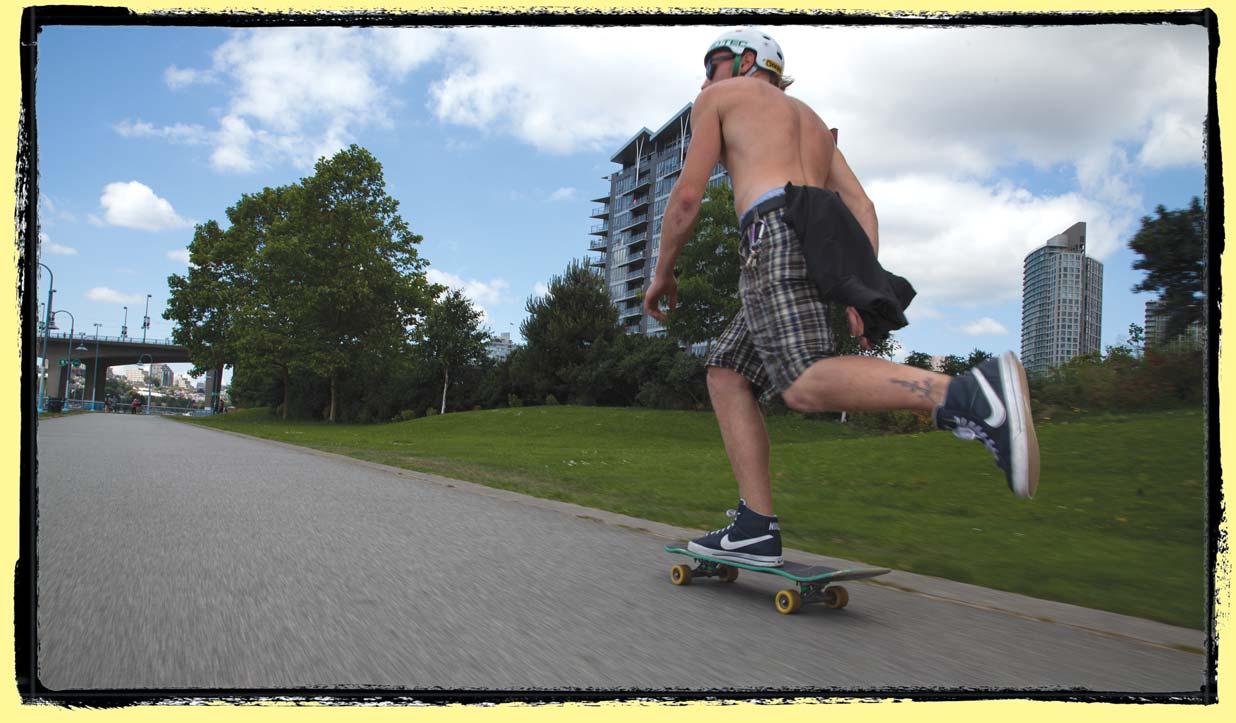
What are your thoughts about the future of the longboard scene in Vancouver?
I think there is a great future for the scene here in Vancouver. Longboarding continues to grow in popularity and continues to appeal to broader demographics.
I don’t think there’s a real future in people doing speed runs on the North Shore, and I don’t think there should be. Ten years ago, when skating down the roads on the North Shore was gaining in popularity, it was a bunch of guys in their 20s. We knew how to skate safe on big, steep roads, understood traffic, what drivers were thinking when they saw us coming, how to avoid busy areas ... and we weren’t doing speed runs, we were carving and slashing it up. Now the trend is for teens, who haven’t been driving for nearly 10 years [as we had], to go and do speed runs. That’s not safe and we don’t condone it.
Do you have any further comments or thoughts?
We set out to get people on skateboards because they’re fun, easy to ride, practical and have a positive impact on communities and people’s lives. That’s not going to change.
Vancouver now has two longboard-specific shops. Flatspot opened in 2012, and Longboarder Labs launched this past spring. You’ll find a wide range of product and plenty of advice from the staff at both shops. Both have their own distinct vibe, and both responded to the communities’ concern about longboarding.

Flatspot convened a safety meeting in early June to discuss the situation. It was well attended, and you can see their notes at their website. Their final comment on the meeting says it all: “If you see someone blowing it, take their axle nuts!” Also at the Flatspot website is a link to Mischa Chandler’s Skate Safe Manifesto, which makes some great points.
Longboarder Labs was the brainchild of Rick Tetz, who opened up Vancouver’s first skate shop, Cal Streets, in the 1970s. Tetz teamed up with Graham Peat to launch Longboarder Labs. Working with Landyachtz, they co-hosted the first “Khats Jam,” a demo by the Eh Team and a safe riding session, as part of the Khatsahlano! Music Festival on Vancouver’s historic Fourth Avenue in Kitsilano. More than 80,000 people show up for the festival.
This year, Landyachtz’s Billy “Bones” Meiners, Ryan Theobald, Graham Collingwood, Sean Suchan, Liam McKenzie, Justen Ortiz, Mark Ollinger, Nick Breton and Wolf Coleman set up a series of banks and hills within the one-block fenced area of freshly paved street with a decent bit of downhill grade. Anyone, regardless of age or skill level, was invited to take part in the jam. At the Predator Helmets tent, Matt Todd and Dave Price showed riders how to keep their heads intact. Landyachtz provided safety gear and a selection of boards, and best of all, skilled and patient instruction to beginners, many of whom were young kids.
The Khats Jam event helped turn around the negative image of longboarding created here in Metro Vancouver over the last few months. It was a huge hit with the crowds and especially with the riders. Many of them ran the course for hours.

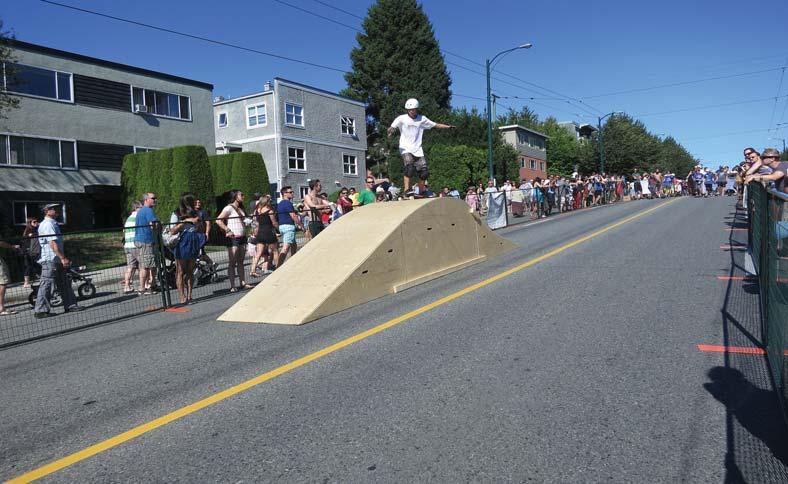
“The general public saw pros and beginners skating together and awing them with their abilities,” Collingwood said.
Plans are already under way to grow the event for next year.

The final connection comes by way of Constable Troy Derrick. Troy is connected to both Kevin Harris and PD, and by extension, to me. When it came to naming this story, I knew exactly what to call it … — Ed.

I am a proud First Nations person from the Gitxsan Nation in British Columbia and a proud member of the Royal Canadian Mounted Police. I will be a cop until I retire, but I will be a skater for life.
My father, Clarence Derrick, is a full-blooded Gitxsan Hereditary Chief from the “Frog” Clan and my mother, Sharon Derrick (may she rest in peace) was adopted into the “Wolf” Clan. For most of my life, though, I denied being a First Nations person, based largely on experiences that are beyond words. If a part of you is called a piece of s--- enough times, after a while you start to believe it.
I guess what originally drew me to skateboarding was back in the winter of 1985, when I was about 9 years old, and I watched Back to the Future. I used to rewind the skateboarding scenes over and over, trying to understand the movements.
My family had humble beginnings, as there were eight of us living in a trailer, which made living and sleeping quarters tight. Seeing how we had no pavement and minimal smooth surfaces, skateboarding was a far-off dream. As a result, baseball became a huge part of my youth — so much so that I actually became pretty good at it.
After watching Back to the Future I would often lie in bed awake at night thinking about skateboarding and wonder how they moved, turned and jumped. I decided I would ask my parents for a skateboard and I would learn how to skate. I mentioned this to my brother Trent and he said, “You’re gonna kill yourself.” I’m sure my parents thought it was a trend and expected over time I would get over the idea of skateboarding.
When I was 10 years old, my mother nearly died of cancer and had to go through several treatments. Traveling to Vancouver was a regular thing, so during the summer of 1986, off we went to Vancouver, right during World Expo 86. When we got there, I had to go with my oldest brother, Trevor, who was not very stoked on chaperoning us, as he was 17 years old. I recall asking him to take us to Expo 86 to go on rides and check things out, particularly the skateboard event. As the crowds were so big, we never
got the chance to see the event, but I do remember seeing some kids skating around, which only fueled my wonder and excitement.
I continued to ask for a skateboard. Seeing how we were now in town more often, one day, when we were at the local Northern Hardware store, I found a skateboard in the toy section. I knew nothing about skateboards — only that I
wanted one. I remember my mom saying, “Well, that looks like a good one. It has metal and solid wood.” To my surprise, my parents actually bought it for me! I stood on it in the store on the black rubber flooring and could barely balance, but I managed to push my way outside.
I was hooked after day one. I would tic-tac as much as I could.
Unfortunately, a short time later, through bad business deals, my parents had to file for bankruptcy. We lost everything and had to move into a town home/project-style housing in the bowl area of Prince George. Regardless of the financial loss in my family, I kept my skateboard and could at least do that.
By 13, I was into another baseball season. It was by far the hardest season I ever played — not from playing the game but from surviving the mental and social torment that came from my teammates. My coach was a corporal for the RCMP and would often come out to games and practices in his RCMP uniform, likely due to shift work. His son was also on my team, and he frequently taunted me, pushed me and directed continuous racial banter and jokes at me. His actions rubbed off on the other players and they began to say things, too.
First Nations person or not, I would never want anyone to have to feel the way I did for most of that season.
Who was I going to tell? I did mention it to my parents, but I don’t think they knew the extent of the banter. I couldn’t tell the coach. He was a cop, and even then all he would do was smirk and say, “That’s enough,” to his son in a sarcastic way.
That season I still managed to match up the home run king, pitch and play first base, and overall play very well. I was asked to try out for the “All Star” team, but I turned them down, as I was still very much hurt from the year.
In 1991, by the time age 14 rolled around, I was in a new school in inner-city Prince George called Duchess Park Secondary, which had about 900 students registered. The school was old and smelly, and the people were not what I was used to. I was nervous, as these were actual “city kids” in my eyes.
But in homeroom I met for the first time a skater my age, Mike Watson. I knew something was different about him, as he had a pair of Airwalks with lace guards, wore Skull Skates shirts and had an undercut hairstyle in a ponytail.
Mike was very open to the idea of a new guy interested in skating and just hanging out. He quickly invited me out with him, his buddies and some girls to a movie that weekend. We went to see a Jean-Claude Van Damme flick called Lionheart. Since I was a “country” kid, I had never been to a movie theater before, and never hung out with girls. I was nervous as hell.
One of Mike’s buddies was a guy named Paul Lewis, who at the time had a 4-foot mini ramp in his back yard. We went over to his house, and I remember seeing two of the most graceful, smooth skaters I have ever seen rip it up: George Vincent, who was 17, and Paul Cramer, who was
18. I didn’t have my skateboard with me, but they invited me to try out the ramp. I was nervous. However, because I had learned the tictac, I had some sense of balance, and within about 20 minutes I was dropping in and “rock and rolling.”
The next day I brought my skateboard with me — and I realized it was not going to cut it on this ramp. Amazingly, though, the other guys immediately pulled all their resources together and built me a makeshift complete.
I was on top of the world. Not once did any of them ever make a question or comment on my being a First Nations person.
Through hanging out with these guys, I began to ask a lot of questions. The crew explained that I had just missed a skate demo at the local roller rink and that a pro skater named Kevin Harris had been there.
I began to really embrace skateboarding and my friends. All the parents of my new friends seemed to be the friendliest people I had have ever met. They never judged and were always welcoming.
Not everyone was like them, though. One afternoon two guys approached me while I was riding. “What are you doing out here on a skateboard?” they asked. I didn’t really understand what they meant, and I replied, “Going home.” I still didn’t understand what was going on until they said, “Hey, what’s that say on that car door over there?” I turned to look and was immediately punched in the back of the head. Then they said, “You never look away from a fight, f---ing skater! Better hope we never see you out here again!” They threw the board at me and rode off.
That night the experience really resonated within me. I did a lot of soul-searching and questioned if I was different. Those guys didn’t look much different than I did my whole life; they looked like my baseball team, my coaches and my brother and his friends. All I did was skateboard. I didn’t feel any different as a person. So what was the problem? How could something that I connected with cause so much anger, and from people I didn’t even know?
Eventually, I decided to quit baseball. After the years of jokes, teasing and minimal support from coaches and teammates in small-town baseball, it was an easy choice to make.
My parents were heartbroken that I had decided to stop playing baseball. However, they did recognize that with skateboarding I had a new interest, along with a regular group of friends. They understood that I had a new team now.
Over the years to come we endured football teams, hockey teams and other jock types calling us names, making jokes, chasing us and sometimes beating us up for no reason other than for
skateboarding.. There was even a time that a gun was pointed at my head by a driver who had run me off the roadway.
My parents, being as supportive as they were, decided to start a skateboard shop. And the same year I stopped playing baseball, I met Kevin Harris when he came to Prince George.
We met in front of the Coast Inn of the North Hotel with my mom and my friend Uriah. I remembered Kevin’s name from my buddies and I wanted to see him skate, so I asked if he would give it a try. The streets of the town were weathered and rough, and at that time the trend in skateboarding was small wheels, so that’s what our boards had. Kevin did skate a bit, and I was impressed at how smooth he was, but he kept saying, “I don’t know how you can skate these things.” He was having trouble completing a routine, so he just gave us our skates back.
Shortly after, we met Kevin in Vancouver to go over how to place an order. It was there that I was first exposed to the iconic “Skull Mountie” graphics on his signature deck. I remember the image being stuck on the door as well as in Kevin’s office and on the “Ultimate” logo. That particular image has been with me ever since. Even back then I felt the connection.
We also made a connection with PD’s Hot Shop and Skull Skates. My friends and I were stoked, as we were able to carry Skull Skates at our shop.
Without knowing it, Kevin and PD became kind of local heroes to me. They forged an identity, uniform and team for our core group without us even knowing it. They were our coaches who led by example. We didn’t have to know them personally to know they were what we aspired to be like.
Knowing that they existed outside of Prince George gave me something to look forward to and visit. They gave me the confidence that I didn’t need a stereotypical team to “belong.” I could make my own choices without conforming. The more people made fun or tried to pick fights with me, the more it fueled the idea that I was not them, would never be them, and would always make my own choices based on what I liked, not what society expected me to like. Selfidentity as a youth was/is extremely important. I knew at a young age what I wanted to do and what I wasn’t going to be. I began to learn that in this life, the more you know what you want, the less you let things upset you.
In 1995, by the time I was 18, I had experienced two surgeries on my knee and lost skating the way I knew it. I was forced to slow down to a near halt. I fell into a depression. To compensate I embraced the hip-hop lifestyle/culture of DJing, break dancing, graffiti art and MCing.
My sister Treena encouraged me to try something else and maybe get out of the slump I was in without skateboarding. Shortly after that I enrolled in Dubrulle French Culinary Arts School. By 1997 I had graduated and was working on the Gulf Islands for the next four years. I excelled in culinary arts and just plain understood the concept. In 2001 I moved to Vancouver, still skating as transportation almost everywhere. A chef named Sam had introduced me to a First Nations Culinary School at UBC, where I was eventually hired and worked as a part-time chef instructor and assistant.
In 2002, when I was 26 years old, my mother was tragically taken away from us in a head-on collision. The other driver had a heart attack, crashing into the vehicle my mother, father and sister Terreane were in. A witness said my mother’s last words were, “Is Clarence and Terreane OK?”
More than 300 people showed up for my mother’s funeral, and I recalled the words she would often say to me: “People are always watching what you do,” and “The people you hang around with will be the people you become.”
In 2003 the culinary school moved to the heart of Surrey, BC’s ghetto known as Whalley, at an Aboriginal Community Center. There I met my best friend, Ruby, who then became my spouse.
I taught there for nearly three years. I still lived in downtown Vancouver and commuted to work by skateboard and Skytrain. Across the street from the Aboriginal Center was a skate shop called Paul’s Boutique. There I would buy skate shoes from time to time, and the occasional deck. One deck that I bought simply for graphics was a Rick Howard model by Girl Skateboards; the graphics had a Mountie and a map of Canada. (I liked the graphic because it had Prince George on the map; I still had no notion of becoming a Mountie.) At Paul’s Boutique we of course discussed the similarity of the Kevin Harris graphics and how cool it would be to get a Harris deck. We also discussed how rad it would be to get the Harris graphics as a tattoo. I explained how for years I had thought about it but never had the money to make it happen, nor did I know any tattoo artists that I trusted.
As a chef instructor I often took each class very personally. I was always trying to encourage my students by saying, “You can do whatever you want in this country. You can change careers anytime.”
In late 2004, a student in my class put his hand up and said, “Chef Troy ... what about you? Can you change and do whatever you want? Can you change careers?”
So I asked, “What do you think is the hardest
thing a First Nations person could do in this country?”
The student answered, “Why don’t you try becoming a cop? We all hate them anyway.”
I took that challenge to heart, and within two weeks I was at an info session at the Justice Institute in New Westminster, learning about what it takes to become a Mountie.
I knew nothing about being a cop. I had no friends who were cops and no family who were cops. The only thing I knew about cops is that they chased us for skating, pulled us over, searched us for no reason ... and that my baseball coach when I was a kid was a d---.
I did have a couple of good experiences with police, one when I was in a collision as a youth and the other when I was a child. I understood that I had a double issue with police. I was a First Nations person and a skater. I also understood that it’s not the uniform or job that defines the man; the man does that himself.
A few years earlier my brother Trent and I were out in our shop vehicle, which had our shop name/logo on the side, when we were pulled over. When we asked why we were pulled over the cop said, “I don’t need a reason to pull you over. Where’d Indians like you get a truck like this anyway?” He proceeded to have us step out of the vehicle, sit on the curb and search us and the vehicle.
I didn’t understand why he treated us that way. It’s not that I didn’t respect the police as a necessary position in society; they sure did help out when I was in the car collision and were very friendly. But I wasn’t aware that there was a “police style culture” — and I just didn’t know where the attitude toward us as First Nations and as a skater was coming from. But it didn’t feel very good.
When I applied for the RCMP, I didn’t deny being a First Nations person, but I didn’t acknowledge it either. I actually checked off the “other” section about my heritage when filling out the application. I did not want any special treatment — but more importantly to me at the time, I didn’t want anyone to know I was a First Nations person.
My application went through, and in the spring of 2005 I went to the RCMP’s “Depot” division in Regina, Saskatchewan, for basic training. Most people I knew were extremely surprised at the career choice I had made and wondered why I would do such a thing. And at times I felt as though I was on my baseball team again. But I stuck with it and made it through.
Policing is not what people stereotype it as. Policing is a necessity in all cultures in any society. What differentiates me is this: I look at it
as a job and that’s it. My philosophy is, “Don’t judge me by my job ... judge me by my work.” I will not be a cop all my life. If and when I retire, I will stop being a cop and no longer enforce laws. As a chef I can always cook anytime. As a skater I can skate. I will not always be a cop. It is a limited time in this position, so I will do the best with this opportunity.
Some of the best people I know are cops. These people will put themselves in harm’s way for me and I for them. There is no other group that I know personally like that who will do that unconditionally.
Over the years I continued with my collection of tattoos. I always planned on getting the Harris graphics even if I were not a Mountie.
In May 2013, I was requested to work at two separate events at the annual Cloverdale Rodeo in Surrey: the Kid Zone and an Aboriginal/First Nations Pavilion. As it turns out, in between those two areas, a skateboard competition called the World Freestyle Round-Up was going on. Kevin Harris was hosting the event, which was also supported by PD’s Hot Shop.
Being a skater most of my life, I was naturally drawn to the event. The energy of the event felt much like how it was when I was a kid skating.
I was leaning over the railing when I ran into and met a local Surrey skate legend: “Hippie Mike,” founder of Protest Skateboards. I asked Hippie Mike if I could try his skate. He of course was more than willing. So there I was, in full uniform, my duties for the moment forgotten, skating. I was trying old tricks, as much as I could do with the 30 extra pounds (of uniform).
Within a short time, people were all around, filming and taking pictures. It was foreign to me, as I am not the smoothest skater around (especially in full uniform), but I recognized I was in a position of my duties and a Mountie. The skate high dropped back down to reality.
People noticed I had tattoos and asked what they were. I pulled up my sleeve and they immediately recognized the Skull Skates logo on one arm and then the Harris graphics on the other. Hippie Mike was floored by the idea of a skating cop with tattoos like that and immediately called Kevin over.
I am not too sure what Kevin’s initial thoughts were, but he said something like, “Cool — a Mountie with my graphics.” I think he assumed that I’d gotten the tattoo simply because I was a Mountie.
Next thing I knew, Kevin was introducing me to his parents, who were in the stands. I didn’t plan on saying anything when I met them, but suddenly the words just came pouring out.
“I’m not too sure if Kevin knows this, but he was a huge influence on my life,” I said. “He gave me
the confidence as skater and later on as a person to be who I wanted to be and make the choices I wanted to make. Between him and PD, they were able to be our mentors without even knowing it. They built us, formed us and gave me the drive to keep on going. I am who I am today, wearing this uniform, based largely on what skating has done for my life. Kevin was a part of that.
“I didn’t get this tattoo because I am a Mountie and thought it was cool. I was going to get this tattoo anyway. It represents much more than me being a cop; it represents my life. You should be very proud that Kevin is who he is. You raised a great boy who turned out to be a great man. Thank you for supporting him even now by coming out to this event. Without parents like you there would be no Kevin, and there would be no RCMP for me. You remind me a lot of my parents, always cheering for the underdog and letting them make their own choices. Again, wholeheartedly, thank you for Kevin.”
Too long has it been an Us versus Them mentality. Being part of both worlds has often felt
like a gift and a curse. I have the opportunity to perhaps make a positive change. I feel obligated to do something even when sometimes I feel I can’t go on. That Us versus Them mentality and the recent longboarder issues here in the Vancouver area are no different from skateboarding in years past. This has created a stigma over the last few decades where people expect a certain behavior, and of course people in society buy into that and join that group based on the reputation of that group and feed off of it.
All too often, we create our own little worlds that pit us against someone else because society has portrayed that to us. We then act that way without actually getting to know the other group — and we lose ourselves in the process. I’ve seen skaters behave differently when cops or any other authority show up, and I’ve seen cops behave differently when they put on the uniform.
But when we unthinkingly just play the role that is expected, we lose ourselves. If you keep pretending that you are something you are not, after a while you will forget that you are pre-
tending. You will never reach your true potential in a positive way.
I recall leaving my office after a shift in the early hours of the morning in my civilian clothes and starting to skate home. I didn’t even get half a block away from my office when I was pulled over by one of my co-workers, who said, “Hey, what are you doing?” and called me over. When he realized it was me he said, “Oh, man, Troy … ” We both had a pretty good laugh, but I skated home with that old feeling of “WTF? I didn’t even do anything!”
“He’s a good guy — but he’s a cop,” or “He’s a good guy but he looks like a street rat,” are too simplistic, too stereotypical. Get over yourself. If you have nothing to hide or prove and you treat yourself and others with respect, then there shouldn’t be a problem. You create your own animosity and negativity. You have to live with that, and if you don’t recognize it, you will also have to die with that.
Skaters, cops and First Nations people are not much different. Take away the names and break it

down, and the rest of society treats us the same: •All three groups make up a small percentage of society.
•When people see us they are either supportive or afraid of us.
•People are watching us all the time and are waiting for us to make a mistake.
•The media loves it when we mess up so they can sell it.
•Just because something is on the news doesn’t make it accurate, as media is based on selling to the followers of a part of society that don’t take the time to learn the facts.
•We are humans, not robots, and not just a bunch of dirty street thugs on drugs.
•We will make mistakes and may make the wrong choices at times.
Being a cop, a skater and First Nations person, I’ve noticed that all groups use some level of humor to get through their experiences as a group. Being involved with those social/cultural groups can only be understood if you have been there and done that. This experience developed my humor, which later on caused me to make racial jokes at my own expense as a sort of defense mechanism — basically, “Get myself before they get me.” This worked well with the nonskater types from school and allowed me to laugh at myself. Little did I know that this selfdefense mechanism was also a denial of myself as a First Nations person and created a lack of self-pride. Fortunately, skateboarding filled that void with acceptance from that culture without judgment.
In Canada, and especially in BC, we pride ourselves on being “diverse,” yet the only thing I have seen lately is that we pride ourselves on not being American, and we don’t necessarily embrace “diverse cultures” — be it skateboarding/longboarding, police, First Nations or any other culture for that matter. Keep in mind it takes more to be a Canadian citizen than just living here and embracing the freedoms you are blessed with.
Like the police, First Nations and all other cultures within Canada, skateboarding/longboarding is a culture as well. We are a country that prides itself on being open to other cultures and accommodating them even when it comes to some laws. People come here and expect that they can celebrate their own cultures without the confinement of laws that deprive them of that. But lately I see and hear discussion of formulating laws that try to deprive the citizens of Canada of the chance to celebrate their culture within the skateboarding/ longboarding community. We are only going back-
ward with that thinking, and history is repeating itself based on historical Canadian laws that took away and outlawed the misunderstood culture within the First Nations community.
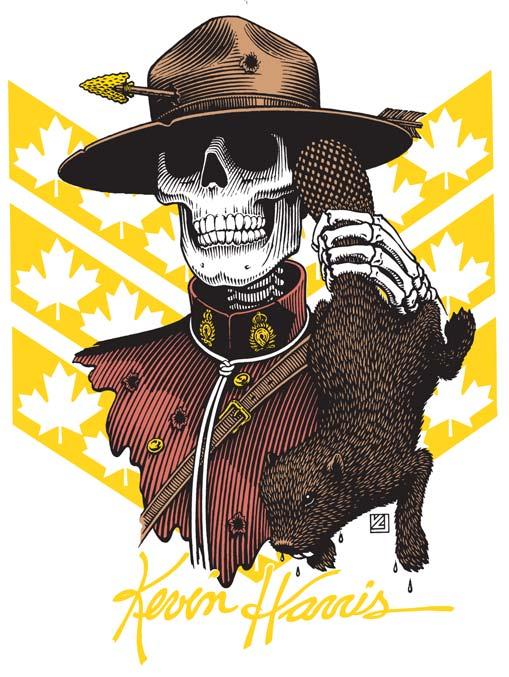
We allow churches, synagogues, monasteries, etc. for people to practice their culture in a safe manner. At this time safety is of course the issue for those that practice within the culture of longboarding. I have seen all walks of life express this concern. We as Canadians should support their lifestyle choice and not segregate them.
On the flip side, longboarders should accept that a few will never be on their side. They should seek out those that will support them, and should
color, religious background, political belief, size, poverty or riches, hygiene, clothing ... There are no rules on being the best and no definition on who is the best at it. Skateboarding is a feeling, and feels the best when you do it on any skill level. You don’t need a team to play, but it makes a difference when you have others involved.
Without the confidence from skateboarding to at least try something new like being a cop, I would never have joined the RCMP. Through the RCMP I was able to embrace my First Nations heritage and learn who I am and to be proud of it. I have learned the truths and have an understanding of the history of this land called Canada, and have since been able to make factual, nonjudgmental and enlightening presentations for the RCMP, schools and First Nations communities.
I had a less than 1% survival rate from my nation alone when I was born. I survived for some reason. My ancestors died. If I do nothing positive with my life, then they will have died for nothing. Today my nation numbers more than 5,000.
I’ve been asked, “How do you balance it all?” I simply live my life and embrace the fact that I am alive. I was given a gift and opportunity, and I let things happen and don’t resist the direction my life is going. Resisting your life’s path is doing what society expects you to do. Always do what you love, and money will be just a bonus.
Money comes, goes and flows. Sometimes you have a lot, sometimes not; that’s why it’s called currency. Time just goes and goes. Once it goes, it is gone. You only get one shot at it, so it’s what you do with the time you have right now that is important.
respect the laws that are in place for their safety.
“You must be the change you want to see in this world,” the saying goes. And as a police officer I sometimes see posters that say, “Make a difference in the community.” But “Make” insinuates force and has a negative undertone. Therefore I don’t want to make anyone or anything do anything. I would much rather be the difference in the community. You don’t need to be a cop to do that.
I see skateboarding as a perfect representation of what a Canadian/person should be like: one who accepts all walks of life despite color, age, music choice, sexual orientation, gender, hair
With that said, thank you for taking the time to read this, as you will not get that time back. I can only hope that it has given you some positive direction and influence. Despite popular belief, nobody owes you anything. It is not what you own that shows your value but what you give. That will not be forgotten and shows your true value.
These days I owe a lot of my successes to my beautiful/brilliant spouse, Ruby, my amazing stepson, Clinton, and my incredible daughter, Mya, for always supporting me on the choices I have made. My parents and family have also had a huge part in who I am. Without their support — especially that of my mother — in the hardest of times, regardless of my life’s choices, I’d be nothing. Without my father’s work ethic, I wouldn’t drive as hard. I can’t ask for much more than that. CW





I AM NOT EVEN SURE HOW TO GO INTO THIS, so I am just going to jump right in. By now you have all heard about the huge tornado that ripped through Moore, Oklahoma, on May 20, 2013, taking the lives of 24 people and destroying 13,000 homes. When I heard about it I was sick to my stomach. I couldn’t just sit around watching the news rerun the horrible story over and over. So I called up a few friends in the longboarding industry and got into action. I wanted to get my ass to Moore ASAP to see firsthand what these people were going through. I wanted to be of some kind of help, and all I could think about was all the families that had just lost everything they had. My mind-set was simple: I knew these families were just like mine and would all be thankful it was over. They would all be amazed and shocked, and then they would all just want to get back to living.

I wanted to bring something new into the lives of the people in Moore. They had all just gone through the most unreal event of their lives. I knew they would all be looking for something to help fill their lives with joy and happiness. I didn’t know how I was going to do it, but I knew Longboarding for Peace was going to help me in assisting these folks.
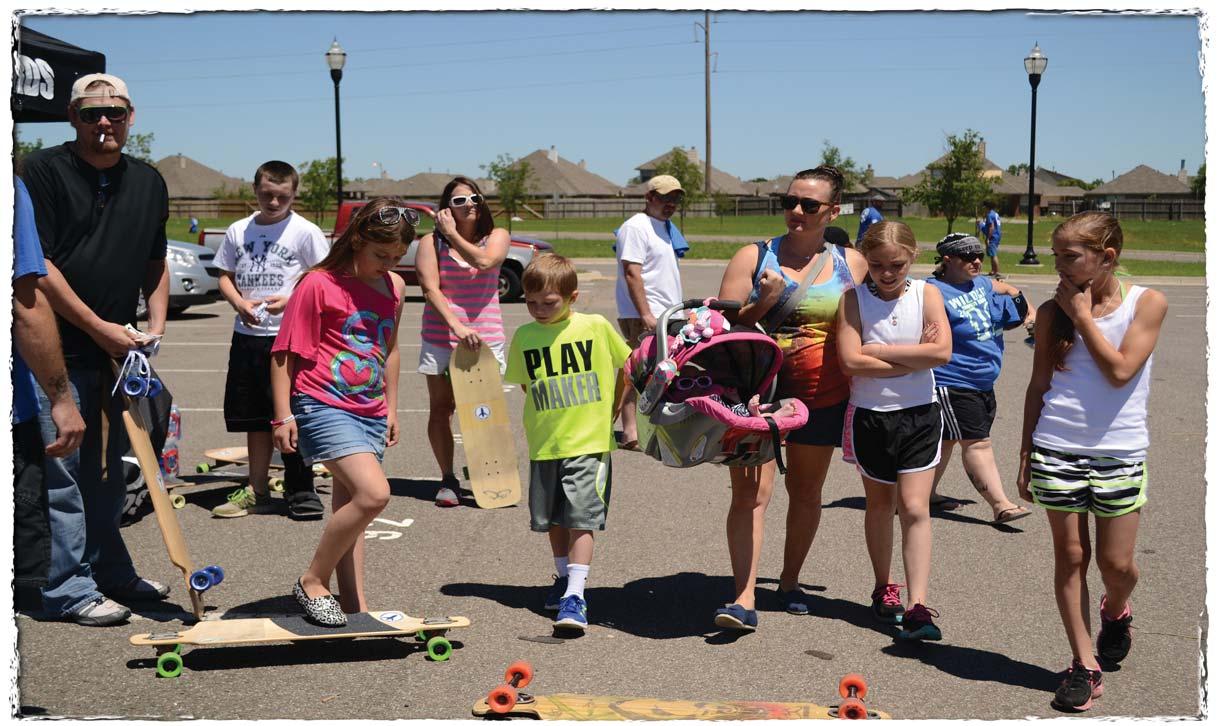
It only took three days to get more than 50 longboards kicked in from all kinds of companies. I loaded up all the product, and my family and I headed to Oklahoma. We had more than 1,200 miles to drive, and there were still tornado warnings and huge thunderstorms all across the Midwest, but Longboarding for Moore was “in fool swing” and on the way.
The first day of driving wasn’t even that bad, and we made it from San Diego all the way to Albuquerque, New Mexico. All the time I was driving, I kept thinking about how the families of Moore must be feeling.
That night in our hotel room we watched the TV special that the Country Music Association held for the victims of the tornado. I remember thinking, How the hell am I going to help this horrific situation with just a bunch of longboards? The CMA raised $50 million for the Red Cross, and all I had was 50 longboards. Thank God for Liz, my beautiful, awesome wife. She told me, “Dusty, everything counts,
and those people of Moore are going to be so happy to know that some ol’ boy from halfway across the United States cared enough to drive 1,200 miles just to bring them and their children a little hope and happiness.” I sure am glad Liz knows exactly what to say and when to say it. She has the best way of keeping it real.
The next morning we were up early and ready to roll. I turned on the Weather Channel to see what kind of storms we would be headed into. That was a big mistake. The map was red all across the country with storms, storms and more storms. I couldn’t believe it. It seemed like Oklahoma couldn’t catch a break. These people had just survived an F5 tornado, one of the biggest ever recorded, and now there were even more headed their way. I am not going to BS you. I was as nervous as a drunk in church. Here I was, 700 miles from home with more than 500 miles to drive to get to Moore, and all 500 miles were going to be in BIG storms. I procrastinated a little and sat glued to the Weather Channel.
I finally I felt like I had a handle on things by about 9 a.m. We pulled up a storm-watch app and headed east. I felt like a storm chaser as we watched the storms form all around us as we buzzed on into Oklahoma. I felt we were in some kind of a safety bubble. It was crazy. You could see us as a little green dot on the radar, but otherwise it was all red, with major storms all around us. As we moved, the storms moved with us. I felt safe even though there were tornados touching down all around us.
After a few hours of driving, we had to pull into a shopping mall and take cover in the storm shelter in the basement. It was just like in the movie Twister. We came hauling ass into the parking lot and there was a tornado on the ground less than a mile from us. I slid our car up on the sidewalk and told my family to bail out and run inside to safety. There were highway patrol officers at the entrance directing us which way to run for cover.
This was the scariest part of the trip. My family made it inside before me, and by the time I got inside they were nowhere in sight. I could hear the tornado getting closer and louder. Things were being blown around, and a loud, trainlike noise was the only thing you could hear. I ran in the direction the police officers told me to go, but it was confusing to be in a huge mall that I had never been in, and I was worried about my family.
When I got down to the lower level of the mall, the security guards were waving at me to get in the tornado shelter, but I still had not found my family. I was yelling for my wife and daughter and was starting to panic; I worried that maybe they had gone the wrong way and had not found the tornado shelter. The mall was huge, with two levels and lots of hallways; all the stores were closed down, all the gates locked down.
I got one of the policemen to radio around to the other storm shelters in the mall and ask if anyone knew Dusty Ray; I figured they would hear my name before they heard their own. Thankfully, it worked, and about five minutes later I got word that my family was at the other end of the shelter. More than 200 people were all stuffed into that long, skinny, bending brick hallway, so you could not see from one end to the other. The tension in that tight little hallway was so thick you could cut it with a knife.
And then, just like that, it was over. They opened the big metal doors to the shelter and told us it was clear and we were safe to go. The tornado had just missed landing right on top of us, and I was thankful everyone was OK. Babies were crying, mamas were calming their small children, fathers were hugging their families and strangers were helping strangers. Everyone felt a little more thankful for what they had.
This frightening experience put everything into perspective for me. This was just a small taste of what the families of Moore had experienced. Though it was just a close call and was only 10 or 15 minutes of chaos, my heart was pounding. I was only away from my family for a few minutes, yet I could feel how much more we loved and cared for each other just from knowing we could have just lost one another forever. I was not worried about my own safety for one second; I was only worried about the safety of my loved ones.

What a long, strange trip it had already been, and we had not even made it to our destination yet. Finally we rolled into Moore to meet up with some fellow longboarders from around the area who were helping put the whole thing together.
What we found when we got to Moore was overwhelming. Words and pictures cannot do it justice. The destruction and chaos were spread over such a large area that it was difficult to take it all in at once. Your mind could not process all of what you were seeing. Trucks were sitting in the middle of homes, trailers were left flat as a pancake, and entire neighborhoods were gone — 13,000 homes leveled.
We met up with BC Longboards’ Brett Daniel and Marshall Cooper, a couple of corn-fed good ol’ Oklahoma boys, plus the one person who really caused me to want to do something for the people of Moore — Neil Wieland, who had posted a picture of himself on Facebook riding his longboard through the path of destruction the tornado left behind. These dudes are as cool as they come. All of them live, work and skate right there in Oklahoma. They all wanted to do something for the families that had lost everything they owned.
The guys from BC Boards had put the word out that Longboarding for Peace was going to be in town handing out boards and doing some skate clinics at the Moore High School, and longboarders from all over the country showed up to assist us in our mission to bring some joy and happiness back into the people’s lives. Among them was Billy Angus, who came all the way from Republic, Missouri, to help put together boards and spread the stoke. This guy keeps popping up at all kinds of events and is so helpful — just a straight-up dude. Besides
Billy, many other people and companies chipped in product and time. I am including a list of all of them at the end of this article. Please show them some support; without them we could not do the things we do.
The day of the event was the first beautiful day since we had left San Diego. The sun was shining, the sky was blue and longboarders were out in full swing. By noon all kinds of families had found their way over to our tent.
The people I met that day changed my life forever. The amount of caring, loving, thoughtfulness and thankfulness that I witnessed in Moore was simply astounding. We handed out longboards to families and kids all day. One guy I met, Chris Dewitt, brought his daughter Taylor and his son Sebastian. Both got new longboards and became members of the Longboarding for Peace army. Chris, Taylor and Sebastian stayed and skated with us all day. Since then I have heard back from Chris, and he tells me they are all skating every night. This is what I live for: seeing Longboarding for Peace change people’s lives right in front of me.
A young man named Jory Pratt also showed up to the event. Jory had lost the most of anyone I met in Moore. His mother was in the hospital after a car was thrown through the roof of their home and landed on her, and his younger sister, Sydney Angel, was in Plaza Towers Elementary School when the tornado hit. Unfortunately, 9-year-old Sydney did not make it out.
I want to ask all of you to take a few minutes and think about the 24 people who lost their lives on May 20 in Moore, and those who were left behind. Jory lost his home and his little sister. This young man had just been through more than anyone else I had ever met, and he was coming to our event looking for something, anything. As I watched him ride his new longboard all over the high school parking lot, I remember thinking to myself how strong this young man was and how happy I was that I had come to see such wonderful strength in humanity.
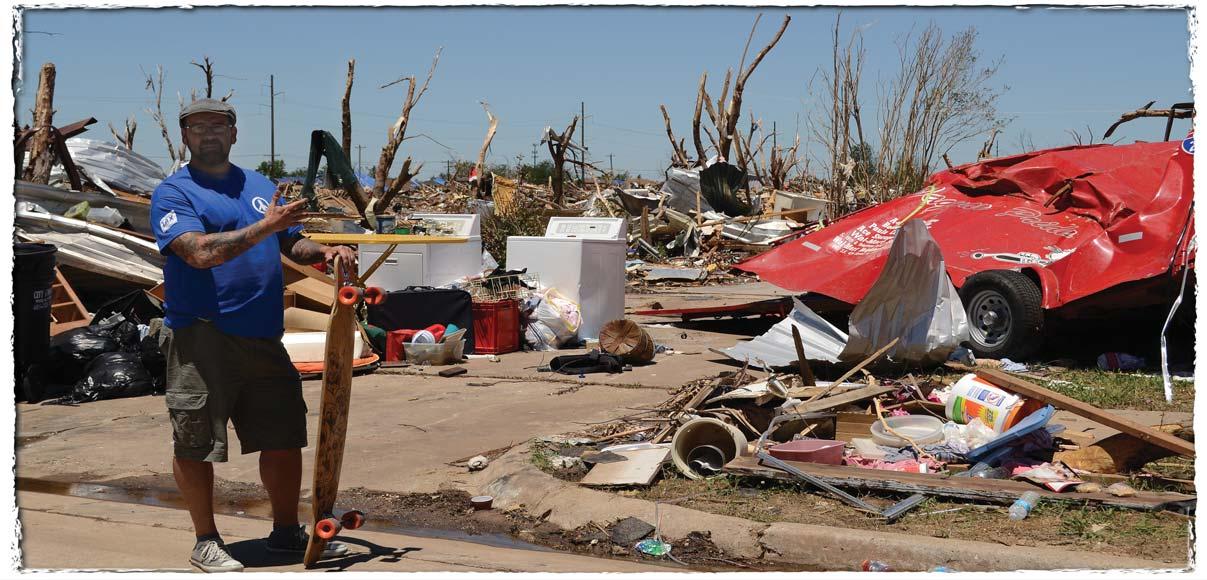
All of the volunteers and some of the new Longboarding for Peace family went for a tour of the tornado devastation by riding our longboards right through the neighborhood in which 13,000 homes got blown away. Seeing this on the news or even from a car is nothing compared to seeing it by riding through the middle of it on your longboard. My youngest daughter, Hayley, skated along beside me, holding my hand at times. I could feel her heart beat and see her compassion as we rolled through the debris.
As we cruised down the streets, we stopped and talked to families who were digging through what was left of their homes in search of family photos and things dear to their hearts. One family we met was a father named Montie and his two beautiful kids, Joshua and Brianna. We had run out of longboards by this point, but we shipped two bad-ass Loaded decks out to these two awesome, brave youngsters as soon as we got back to San Diego.
The vibe in Moore was absolutely incredible. I have traveled a lot of places for a lot of reasons, and I can
honestly say I have never seen more people be kinder to one another in one place in my entire life. Everyone in Moore realized that even though it may have seemed like they’d lost everything, the reality is they have more than they need. They are all thankful to be alive and have so much respect for each other. The community in Moore could teach us all a thing or two about what it truly means to be a good neighbor. Thank you to the people of Moore for showing my family and me the better side of humanity.
The point I want you all to get is this: It doesn’t take $50 million to make the world a little bit better place; it only takes the will to try. That’s all my fellow longboarders and I are doing. We are on a mission to bring some joy and happiness to wherever they are needed.
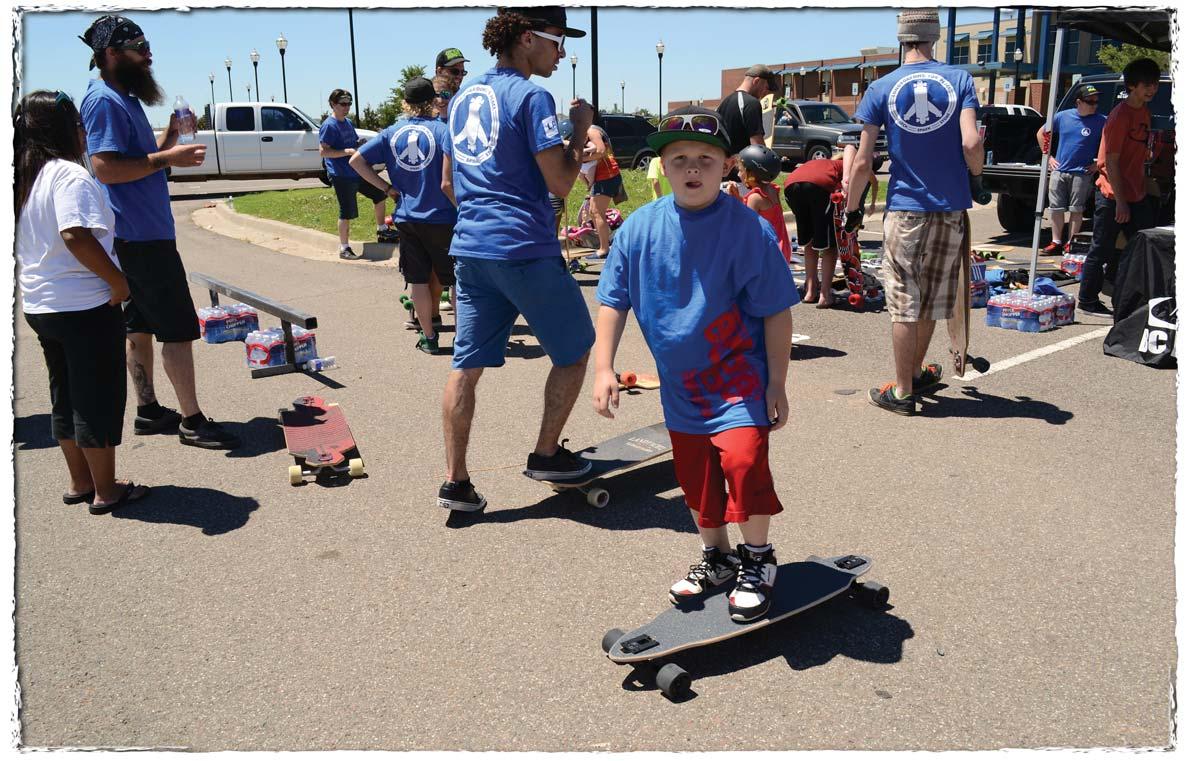
You all can jump on your board and help us help others. You can bring support our efforts by shopping at thehumblehippie.com and by joining us on our future missions. I will be posting things we have done, along with our future plans, on our website. It’s time to join our army — the Longboarding for Peace army. Let’s roll! CW
Until next time, keep it real.
Dusty Ray, aka The Humble Hippie
The Humble Hippie and Longboarding for Peace would like to thank:
BC Longboards
Bern Unlimited
Bombsquad Longboards
Burning Spider Longboards
Core Extreme Sports
Daddies Board Shop
Loaded Longboards
Metro Wheels
Original Skateboards
Paris Trucks
Sector 9
Triple Eight
These companies are the ones who made it all possible. Please let them know you heard about the awesome things they are helping us do. Show these companies support and give them some love.
If anything characterizes Peru, it is its rugged geography. The challenging Andes, the highest tropical mountain range in the world, have given us countless slopes that for more than 15 years have forged the Peruvian longboarder character. This is an account of our history.
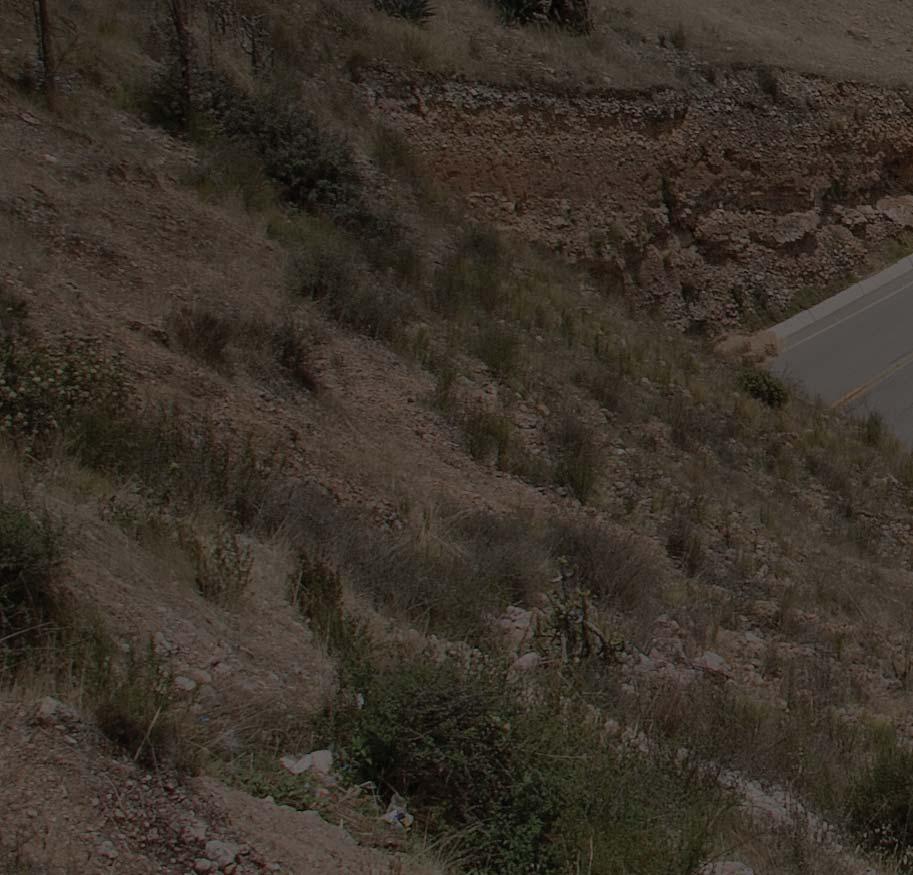




When the time came to go out of the restaurant where he worked, Federico “Fico” Larco grabbed his skateboard and skated down the Brazil avenue to the newly built asphalt in Sucre, one of the tracks leading to the Costa Verde. There, he recalls, “By night, very few cars passed, and we used to go down without knee pads, no helmets, no nothing.”
It was the mid-’80s and Fico was still a child, but he was already a veteran of skateboarding. He had discovered the sport in the summer of ’76 at the garage where his brothers locked him in with a friend so they could not tell their mothers the older boys were smoking cigarettes at a party with psychedelic lights and noisy classic rock. Two acrylic skates brought from California made them forget the tip offered for this information. Years later, Fico would become one of the main leaders of downhill skateboarding in Peru.
At 9:00 p.m. sometime in May 2012, old-school fellas Edgardo “Curita” Bretoneche, Ricardo Pigati and Rafael Candela gather at Fico Boards, Fico’s skate shop located on Bolivar Street in Miraflores. The boys discuss the results of the fourth round of the circuit organized by an energy drink on the Cerro Centinela, another Lima emblematic hill, where “Curita” (Spanish for Band-Aid) took second place.
“I had seen Fico riding on the descent Armendáriz,” says Curita, “and one day found him in the Regatas club. It was around ’93.” At that time, Fico was a seasoned longboard skater and was known to go down the Armendáriz, a wide and fast track that goes all the way down to the beach, and it was there where he took Curita for his first descent. “I did not even set the tracks,” Curita says. “Fico did not tell me to do so – he said nothing ... so I went and entered the curve at full speed with his board.”
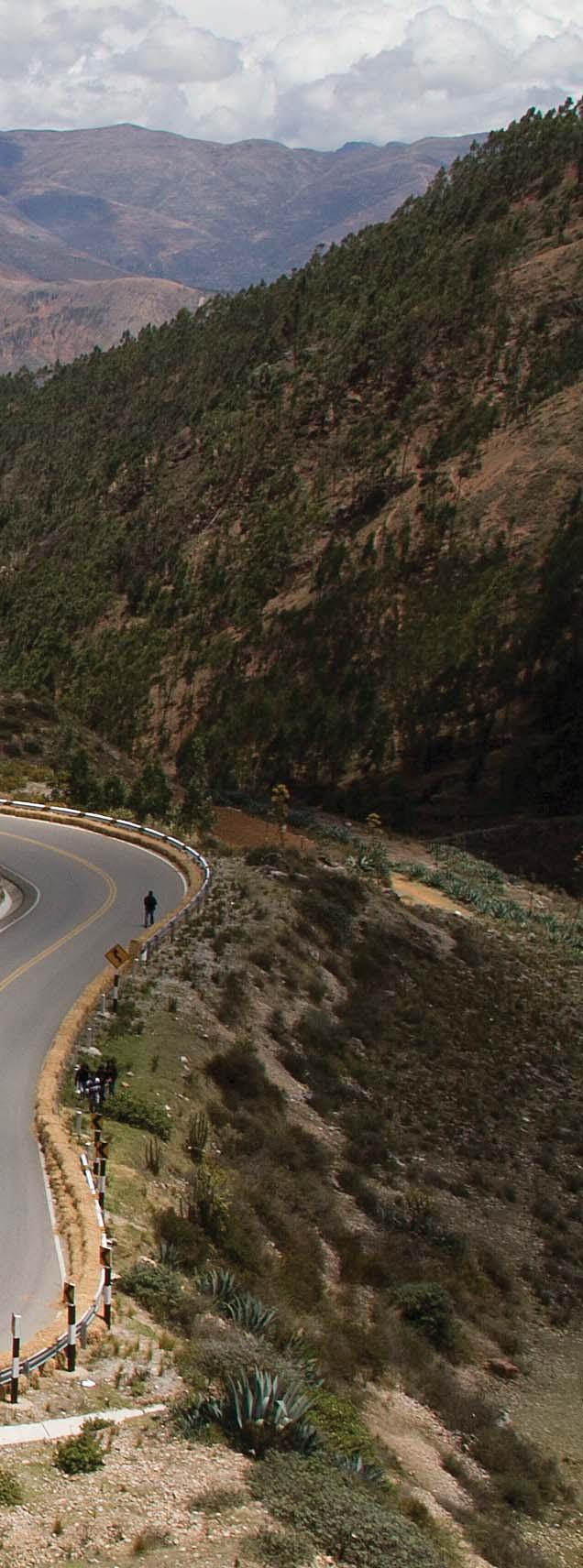
By the mid-’90s, the first group of hardcore longboarders had consolidated. Candela, Sidyk Gayoso, Braulio Bernales, Giancarlo “Chango” Ferrari, Israel Kilimajer, Rasta and Pigati undertook to take the ultimate downhill sessions with their night raids through the Armendáriz and going down the Central Highway from Ticlio to Chosica (at 4,818 meters, the highest road point in the Central Peruvian Andes), a drop of nearly six hours that has built the temple of Peruvian riders for almost two decades, and that is, according to Fico, “the highest award, a physical and mental challenge.” However, so far, downhill skating in Peru was nothing but a strange variant of skateboarding practiced by some speed-crazy dudes. Nothing presaged the phenomenon it would become a few years later.
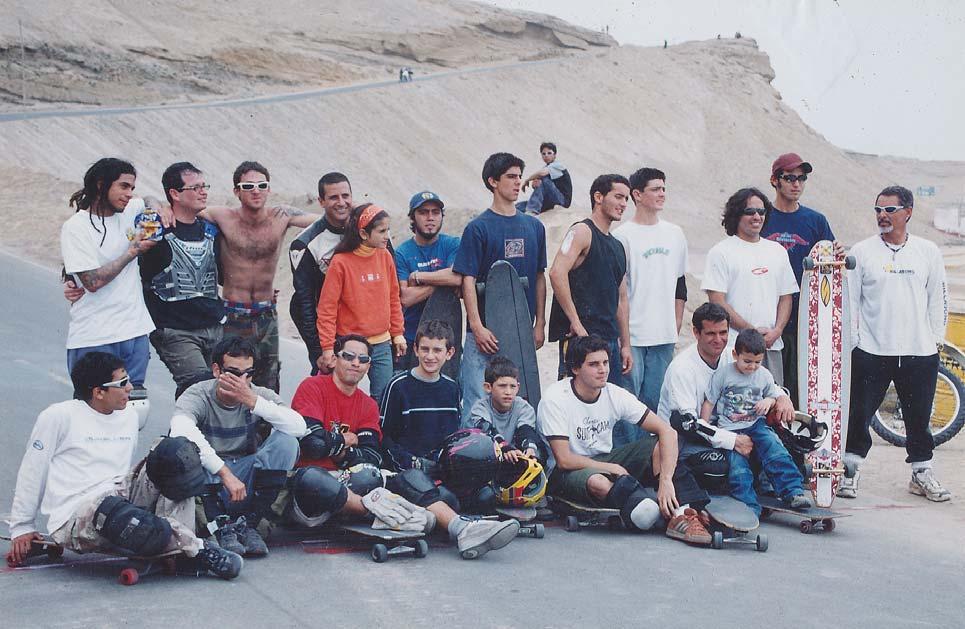

A year after he started charging the hills near his home, Felipe Málaga met Fico and Cesar “Viruya” Sandoval in La Molina. A surfer since childhood, Felipe was no stranger to skateboarding – he did some pool riding – so when his brother came from the United States with a longboard, he began to use it. “I enjoyed it,” he says. “It was similar to riding a surfboard. One day I found Viruya and Fico, by 2003 ... They were the first riders I met, and I started to ride with them, skating different spots and going out on weekends to sites like Ticlio.”
In 2011 he was 13th in the IGSA world ranking and won the South American sub-championship, after a controversial incident with Douglas Dalua in Chile. “What happened in Chile?” asks Felipe, smiling. After a pause he says they were disputing “the last round of the South American circuit, and we were fighting for first place … the winner would have achieved the South American championship.”
Felipe recalls that the incident took place in the last curve. “I came from behind, in third position, all the way drafting,” he says, “and in the last corner I passed Dalua through a small inside space – a little risky overtake, but legal … and,
well, we had a little crash, 10 meters from the final line. Dalua put his weight on me – don’t know if accidental or intentional or because of the action – and we fell.”
The judges decided to give Felipe the fourth position, a situation that prompted a protest to the IGSA, who responded by confirming the controversial ruling. The comments on the social networks supported that Felipe should have won the title. So the man who may be the best Peruvian rider ever declared last year that he would try to conquer the South American championship in 2012, and he did. He competed in every race on the circuit and achieved podiums at Colombia’s Festival de la Bajada and Peru's Copa Ciudad de Los Reyes. He also scored important points in Argentina and Brazil, although one more time he finished second, this time behind fellow Landyachtz team rider Dillon Stephens of Canada.
Still, Felipe had one more goal to accomplish: enter the top 10 in the IGSA world ranking. He was close to getting it. “He was hungry for glory,” says Pablo Seoane, his friend and sponsor. “He had accumulated a lot of experience and confidence in recent years; had been measured with the best and was ready to fight for it. So after
racing in NY and Maryhill and finishing the South American circuit, his obvious destination was South Africa.”

In the Hot Heels race in Kogelberg, South Africa, Felipe fought like a warrior. He dislocated his shoulder on the first day of practice, and the day before the competition proclaimed from his Facebook account: “Took 6th place in qualifying and I will give my life tomorrow.” He then made it into the eight finalists and was within the top 10 in the world, only the second time a South American had achieved that goal.
But his fate had another test waiting for him. Trying to advance inside the famous curve called Lloyd’s Left, Felipe’s right wheel hit the bales, causing his head to slam into the asphalt several times at high speed and knocking him unconscious. He was taken to the hospital, where doctors had to induce a coma in order to perform an operation to reduce the pressure caused by the swelling of his brain. His chance of survival was estimated at only 30%.
But since then Felipe has experienced a rapid and miraculous recovery, and he wishes to return soon to his lifestyle atop his longboard. For now, he has been seen surfing at San Bartolo, his homebreak.
In recent years longboard skateboarding has become a global boom. And here has found a tradition of brave and determined riders, lovers of the mountains and the stunning geography the Andes have.

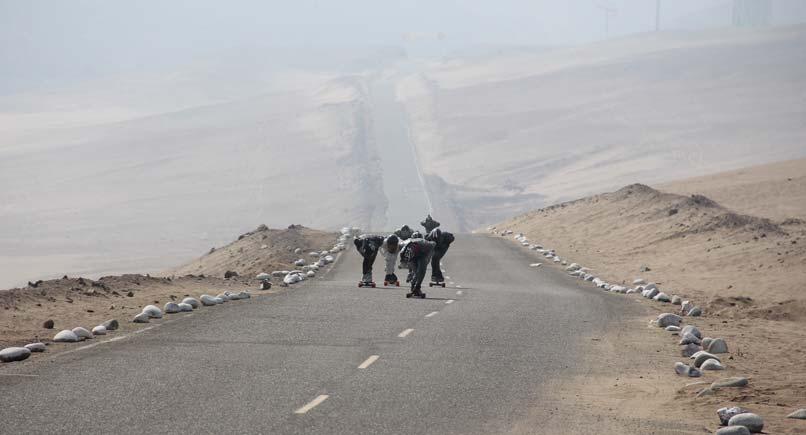
This picture was the one envisioned by Pablo Seoane when he learned about the sport in late 2007 on a trip to the U.S. “I immediately felt I had to take some longboards to share the feeling with people and spread the sport,” he says. “Peru is a surfers’ country, and longboard skate would fit perfect with the lifestyle.”
He soon began thinking about bringing to Lima a famous longboard brand, Loaded Boards. After he returned in 2008, he investigated what was going on with the local scene, finished law school and invested his savings in his first import. “I found there was a small scene of years, a longboard culture, a downhill one,” he says while sitting at his shop, Chaman Longboards Store, “but had to boost it, attract more people, find sponsors, organize championships, get the attention of the media, develop the industry, give future to the sport.”
Focused on his goal, Seoane sent an email to the producer of a popular adventure-sports TV show, proposing to do a program dedicated to downhill skating. The idea flourished. He contacted some riders, and soon the whole team was on their way to Tarma. Though they didn’t yet know it, on this journey they would discover the road where the first international race in Peru would be held in 2009.
“The program was amazing,” he says. “It was repeated several times, and the city of Tarma found it interesting to ally with the sport to advertise the city.”


In order to internationalize Tarma’s potential to practice downhill skateboarding, Tarma’s Hotel Los Portales arranged a meeting with PromPerú, the state office that promotes tourism. “In a few weeks following our discovery,” Seoane says, “the riders, private enterprises and the city start[ed] working together to present the project to the state. It all happened in a short time, and the result was that the project presented by us fascinated them.”
Just four months after that initial discovery, PromPerú paid the airfare for Louis Pilloni, James Kelly and Adam Colton, all team members of Loaded/Orangatang at the time, for the realization of the race, an international event that definitely changed Peruvian downhill history. In the following years the organizers would carry out the 2010 South American championship and an IGSA World Cup race in 2011. Riders from all over the world fell in love with Tarma, its tracks and culture.
Gustavo Paredes, South American champion, U18 category; Marisa Nuñez, 2012 IGSA World Cup Series runner-up, Women’s category; Andrés Canales, first place at the 2012 Kozakov Challenge (IGSA World Cup race), Junior category; Gonzalo Brandon, first place at Jake’s Rash (iconic Canadian race), Super Grom category. Peruvian downhill is unstoppable and has even greater potential. There is plenty to explore. New generations come hard and are looking forward to a world title. As Fico says, “We have all kinds of riders, and the most important thing is that we are radical, we look forward to competition and are hungry for concrete,” a vision shared with Viruya, for whom downhill in Peru is “tough and respected worldwide.”
Longboard skateboarding has grown exponentially, both downhill and freeride, and is slowly coming to other cities such as Trujillo, Cajamarca, Chiclayo and Tarma itself. At the same time, associations and crews that promote all types of longboard skating are on the rise. It’s no longer unusual to see people of all ages riding a longboard. Girls and women have also joined and often ride together. This increased number of riders is making possible the existence of stores like Chaman Longboards Store and Fico Boards, videographers dedicated to recording this lifestyle such as DH Media and Choro Longboarding, and more brands of national boards, leathers and helmets. And private companies are betting on downhill skating by sponsoring tournaments.
“Yes, it’s really a boom that began six years ago and continues to grow,” Málaga says. “In the first championships there were 30-40 registered, and now you can count more than 100. The new generation is very strong and has a very good level … there will be downhill for a while here in Peru.” CW
The 2013 European Slalom Championships were held August 11-13, 2013 at the Redbridge Cycling Centre, aka Hog Hill, just northeast of London. It was the first time the Euros had been held in the U.K. since way back in 1986.


Some 96 riders from 13 different countries, including Norway and Russia, made the trip to London to compete in three days of racing, making the 2013 Championships the largest slalom competition the U.K. had ever seen. We even had an American trio in town for the race: current world champion Joe McLaren; “Texas Eddy” Martinez; and Karl Floitgraf, who jetted in from Berlin in the wee small hours. Eddy lost no time in bestowing Texas Outlaws shirts on the skaters who had chipped in to get him there. Helluva guy!
As racers started to arrive at Hog Hill on Friday morning, the rain began to fall – an organizer’s worst nightmare! The assembled skaters who were standing around drinking coffee were at least treated to some fairly spectacular lightning storms over the London skyline as the torrential rain fell. Finally around midday the rain stopped and the sodden tarmac began to dry in the warm afternoon breeze.
With half a day lost to the weather, the hill was rapidly prepared for the Pro tight slalom. The pros were running their own TS course. It wasn’t too technical, yet many top riders found it hard to master on Hog Hill’s buttery smooth fast surface. Several double DQs in the qualification rounds left only half of the starting field to battle it out in the eliminations, but the quality of the head-to-head racing was incredible and great for spectators.
By ROB ASHBY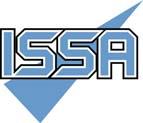
The final was an all-Swedish, all-Hadestrand affair between father Mika and son Viking. Viking was on form and took the first title of the Championships. In the consolation round, despite a very nasty slam earlier, a bruised and bloodied Janis Kuzmins took third place over reigning world champion McLaren.
Performance of the day for me had to be veteran Southbank slalomer Chris Charalambous, who qualified 12th in the pro tight. Chris shunned the conventional modern set-up in favor of a trusty old Comet/Lazer one!
With track closing time fast approaching, there was just enough time to run the women’s and juniors’ TS qualifications. In the Women’s, Germany’s Kathrin Sehl, who had also suffered a bad fall, went on undeterred to qualify in first place ahead of Lienite Skaraine of Latvia and Russian Natalya Dudina in second and third, respectively.
In the Juniors, Petr Matous (CZE) qualified in pole position with Toms Dreiblats (LAT) second and Zaccaria Di Giorgio (ITA) in third.
The hot sun returned on Saturday, allowing for a prompt start to complete the Am and Masters TS qualifiers before moving on to the hybrid slalom after lunch. Due to the half-day lost to the rain, the TS results would be calculated using qualifying positions.
Sebi Vorhölter (GER) put in some low, stylish runs to qualify first in the Am division, and Henrik Wadsten (SWE) blitzed the opposition in the Masters.
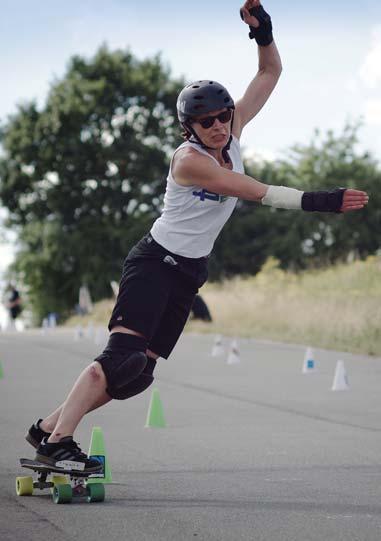
The hybrid slalom began with pro qualifying, followed by the rest of the groups. Once all of the groups had qualified and we had the times in the bag, it was on to the pro final.
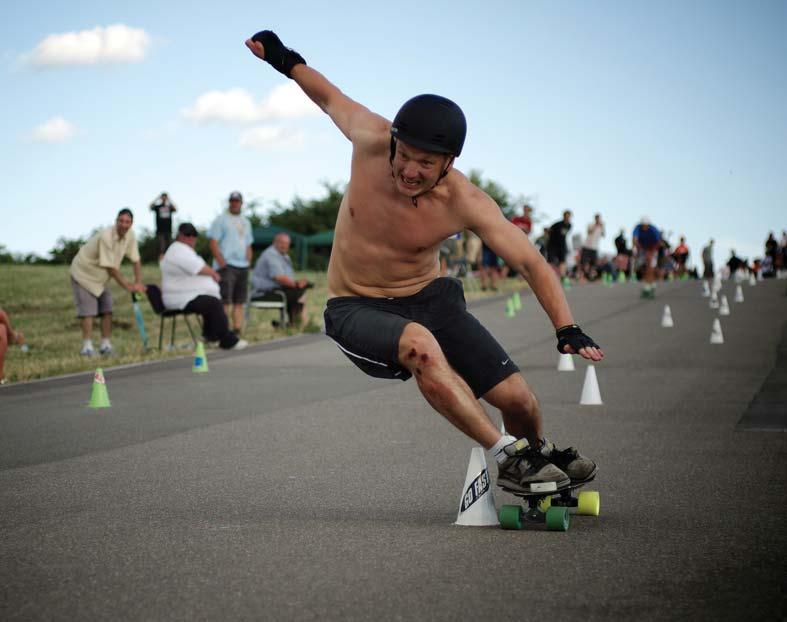
The course set by Floitgraf, Louis Selby and Marc Camelan was making for some really intense racing of a caliber seldom seen anywhere, let alone on mainland Britain! Times were incredibly close, with hundredths of a second making the difference in some cases.
During some downtime, Kuzmins suffered another wicked slam. As he was exiting a practice course on another hill, he turned back into the path of a speeding longboarder. The impact sent Kuzmins flying and caused him to hit his head so hard it cracked his helmet. Still suffering from the previous day’s beef and clearly still shaken from this one, he was checked over at trackside and advised to stay sitting in his chair and to take things easy.
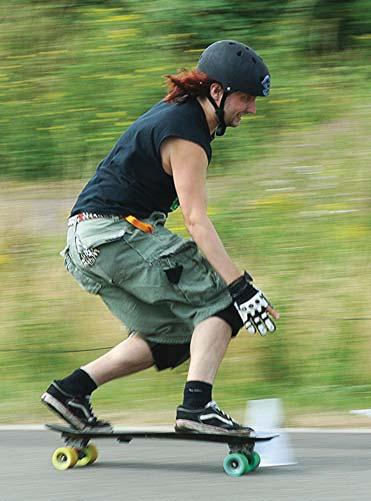
But by the time the pro finals came around, Kuzmins had a new helmet and was up and at ’em! First he dispatched Selby, then Mika, and in
the round of 4 against Viking he went through into the final. There he would face McLaren, who had gotten there by beating Germany’s Dominik Kowalski by a scant 0.08 seconds.
The final was a display of racing at its best: the battle-scarred Kuzmins vs. “The Beast” McLaren. In the first run, McLaren took it by just 0.03, but in the next, Kuzmins won by 0.05 to claim the title of European Champion by just 0.02 overall – an unbelievable performance after the brutal falls he took. Kowalski took the third place from Viking by an overall 0.08.
Sunday saw the Hybrid finals for the women, juniors and ams. The masters opted to use qualifying times for their final standings in order to allow more time for the giant slalom. Unfortunately, the course that had been set by Selby, Michel Dupont and Jeroen Steggink before the race on Thursday had to be reset when cones were discovered on it on after Saturday’s racing. It had clearly been skated, which would have meant an unfair advantage for whoever had ridden it.
After a short rider meeting, it was decided that in order to save time on the pro GS, there would be no practice; each rider would get three runs, with the fastest time counting. McLaren’s first run of 21.850 showed he meant business from the outset, and after many blistering runs down Hog Hill that’s how it stayed. McLaren took the European GS title, with Kowalski in second and Viking in third. In the women’s GS, Sehl claimed her third European title of the weekend, Vorhölter did the same in the Ams, Wadsten cleaned up in the Masters and Petr Matous completed his hat trick of wins in the Juniors.
After the main prize-giving and swag toss, ISSA President Jani Söderhäll awarded a Special ISSA Diploma to Martin Sweeney in recognition of setting the first 100-cone world record in 1991.
The 2013 European Championships are done. All eyes will be on the next Major race, the World Championships in October. Over to you, Texas! London out. CW
Why do I do what I do as vice president of sales and director of the longboard program at Never Summer Industries?
Ever since I was 8 years old, I knew I would be involved in skateboarding in some way as a career. I got into skateboarding in the early ’80s with an old skateboard from my brother and never looked back. Growing up back east, I started snowboarding in 1985 and then decided that was where I would stake my claim. After a year in college, I decided to move to Colorado to pursue my “snowboarding career.” That didn’t get very far, but I did end up getting a job at Never Summer in the mid-’90s building snowboards. After working my way up through the ranks doing everything from building and finishing snowboards, to shipping, to cleaning the bathrooms, I worked my way into sales and account management and finally to VP of sales for snowboards. About eight years ago I started the longboard program at Never Summer.
My passion for snowboarding and skateboarding has now been eclipsed by the love of working with an American-made company that actually builds all of our products from start to finish, by hand, in our Denver, Colorado, factory. As a company we focus less on excessive hype and marketing and more on the quality of the product. I think what we do at Never Summer makes a difference because it’s more than just building longboards. Having a factory here employs people in America, we have control over our product, and our attention to detail and

quality are much better than anything coming out of China or Dubai. Although it’s more expensive to build our boards here, we believe that it’s worth it, and I feel it’s something that I can be proud of. We can’t spend as much on marketing hype and team riders as some of the other companies out there, but for us, we let the product speak for itself. As a company, you only have so many dollars to work with, and if you spend all of your money in marketing, that doesn’t leave any cash for materials and your product, and vice versa. It is necessary for the industry to have great teams, cool graphics and marketing, but plenty of companies have that covered. We just want to build the best boards on the planet for whatever type of riding you are into.
The other thing we do that I think is important is protecting specialty retailers. Working with Never Summer for over 18 years, I have formed relationships with so many cool retailers, vendors, riders and everybody involved with the industry that we work in. By limiting our distribution and working only with specialty shops, I get to keep those relationships strong and mutually beneficial. It is a fun yet serious business, but I couldn’t imagine doing anything else.
I truly get to do what I love for a job. I get to be involved in all aspects of longboard sales, marketing, branding, distribution, manufacturing, graphics, advertising ... everything! For me that is a dream come true. I love what I do because, for lack of a better cliché, I do what I love. CW

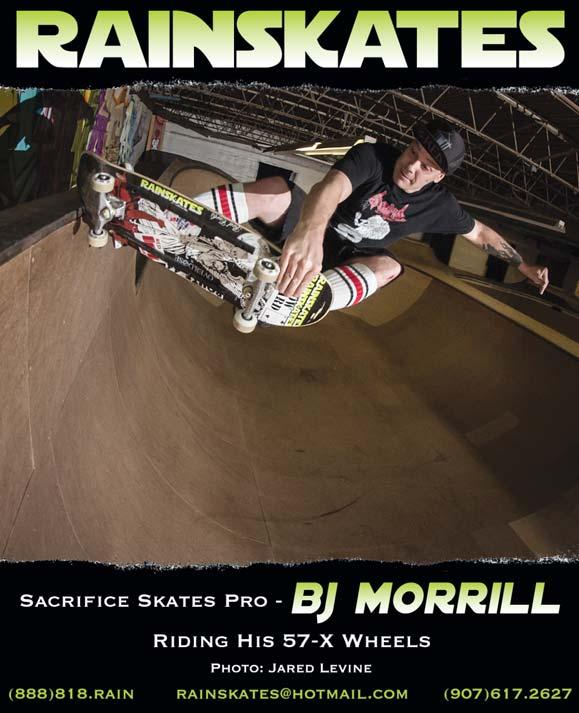


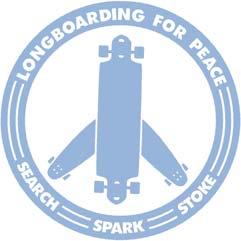


Swipe4TheKids is a sustainable funding source for youth enrichment programs. It’s made possible by partnerships between local businesses and an electronic payment platform. Longboarding for Peace will be working closely with them to ensure that longboards get to those who need them. This includes schools, community centers and a variety of skateboard nonprofits. swipe4thekids.com

Things continue to build with the Longboarding for Peace movement. We are so fortunate to have such strong support from the longboard community. Companies are stepping up, and slowly but surely things are growing. If you’d like to get involved, feel free to email mbrooke@interlog.com.
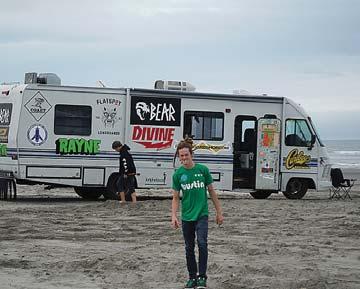
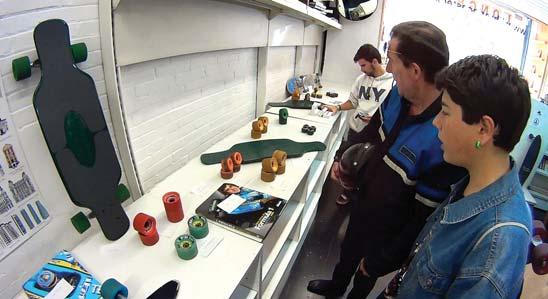 By Alfredo “Red” Prados
By Alfredo “Red” Prados
In Spain we have an economic crisis. But it goes deeper than this. Poverty has led to whole families having to rely on charities for help. Caritas is one of these. Among other services, it operates soup kitchens that feed people in need. But Caritas is currently overwhelmed by the amount of people who come to them.
Natalia and Chema are skaters who live in Toledo. They thought about how they could help with such a dramatic situation. They found the answer in Longboarding for Peace, and thus was born the idea of a charity flea market, where donated longboard items would be sold and the money would be given to Caritas soup kitchens. The material donations would come from brands, distributors, stores and individuals.
Natalia and Chema contacted some brands and shops, recorded a video about the idea and posted it on the Internet. Soon they were adding more and more partners. The market was held in Madrid on Saturday, June 8. The site was a former book shop owned by Chema’s relatives, who generously allowed the sale to go without any additional costs.
We started to review and put prices on the donated items. They included complete longboards, both new and used, new decks, trucks in perfect shape, different types of wheels and all kinds of accessories. It was not yet 10 a.m. when we received our first buyers, and it did not stop all morning. As more and more people arrived, a line was formed in order to pay. Outside the shop, on the boulevard, a group of people started skating and sharing newly purchased material. Others set up their decks with the new accessories. It was amazing to witness such a spirit of solidarity. Strangers joined to skate and share their decks and experiences. This spirit that prevails in the longboard fellowship was and is truly magical.

As the morning went on, the material disappeared, but people still found things to buy. At one point, there were two identical new decks. One was grabbed by a boy, the other by a girl. Suddenly the boy’s brother wanted another deck, but it was already taken by the girl. The boys’ mother had to make them participate in the solidarity about sharing the deck as brothers.
Natalia and Chema’s work has been a lesson in humility for me. While returning home, I thought about the importance of these gestures. Their event helped raise almost $2,000 for Caritas. All help is necessary, but what is more important is that such acts are changing society’s awareness about the importance of working together.
Eight students were awarded complete longboards at Toronto’s Amesbury Middle School in June. They were deemed most improved students and are pictured with Principal Steve Bannerman and Vice Principal Cherylann Samuel-Graham. We will be implementing a program at the school in the fall of 2013.
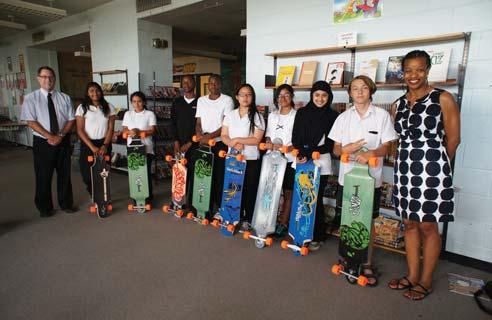
Longboarding for Peace teamed up with Music Saves Lives on the Vans Warped Tour to help present the Passport Program. Here is Big D and The Kids Table along with Crown the Empire.
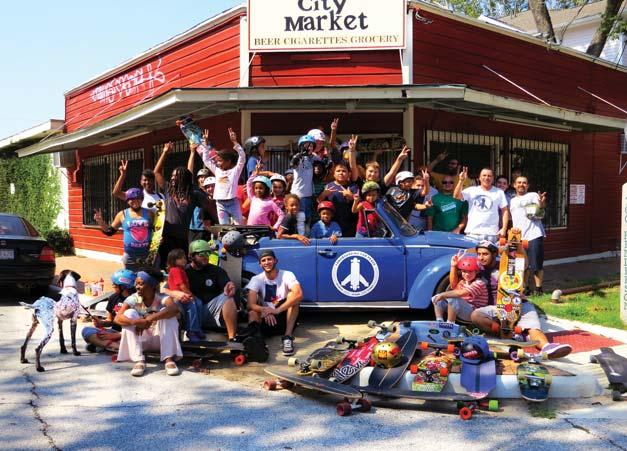

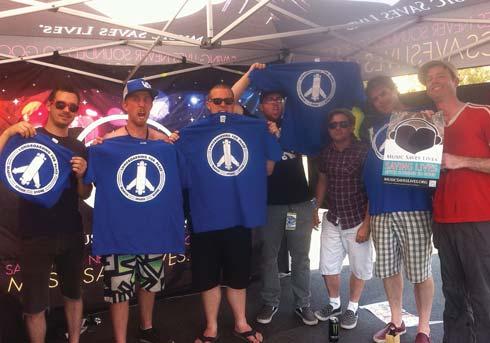
Things have been going really well here in Texas. We are up to 60 kids in our Houston program, a lot of whom are progressing at an amazing rate. We are about to start incorporating mathematics, morals and maintenance into our programs, teaching the kids about the mathematics of building boards, ride heights and turning angles, as well as how to maintain their boards. I have named Neal Roberts as director of the Houston program, as well as Richard Supernaw as the head instructor. This is so I concentrate on getting the rest of these programs, plus more, up and going.
We have started a new program at a battered women’s and children’s shelter. Look for a full article on this in a future issue.
Our program in La Feria, Texas will have started by the time you read this. It will incorporate most of the towns along the Texas/Mexico border, which is a super poor, cartel-ridden area. I felt it would be a great next step in our peace movement. I asked Clayton West of Evins Longboards if he could direct the program, and he jumped at the chance!
Darrion Meckle, one of the groms from our Houston program who just turned 18 and moved to Oahu, Hawaii, will be starting a Longboarding for Peace program there.
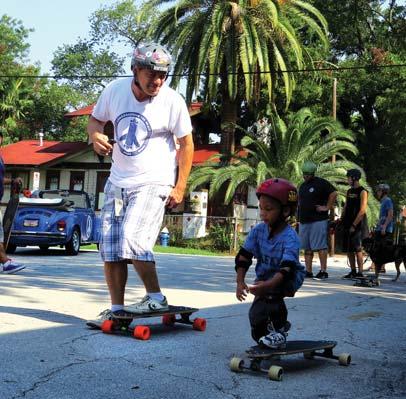
Thanks to great guys like Neal, Richard, Clayton and Darrion, as well as awesome companies like Landyachtz, Klever, Nuke, East Coast Customs, Creation, Satori, Rey, Stella, Bustin and of course Longboard Larry Peterson.
The car pictured in the top photo was painted by the father-son team of Rodney Blaha (father) and Austin Blaha. It’s a 1978 Super Beetle! Austin is a big-time longboarder in Houston and a Longboarding For Peace supporter. He recently broke his ankle at Angie’s Curves. While recovering, he and his dad decided to paint the car as a Longboarding for Peace Bug.

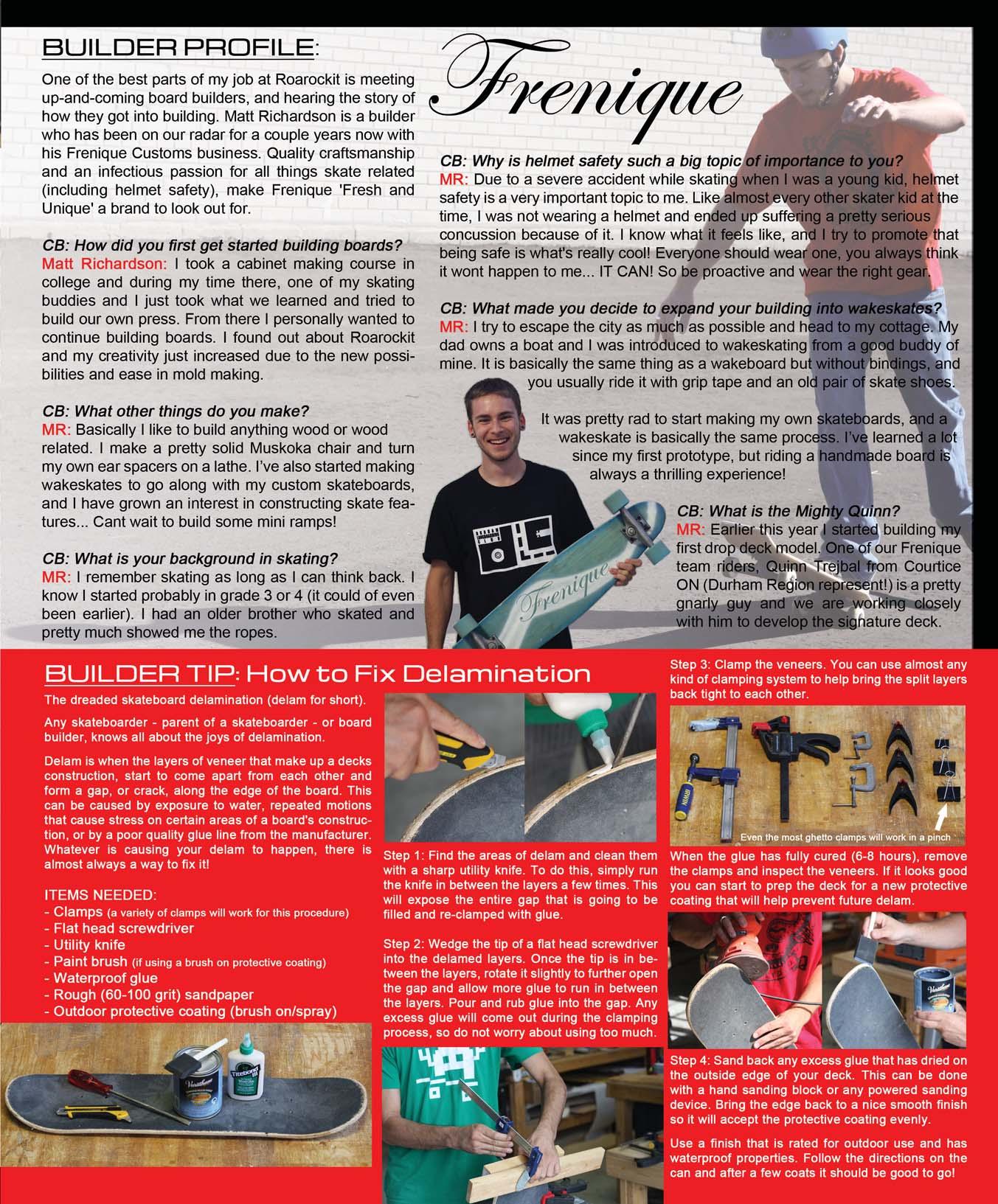
in Germany in 1984, Andreas Preis soon decided to do something with his weakness for drawing and colors. So in 2004, he moved to Nuremberg to study Communications Design. After an internship with Springer & Jacoby (RIP) in 2007, he realized that advertising wouldn’t be his favorite field of work. Therefore he started to become a little bit more artistic and “free.” In 2009 he finished his studies and since then has worked as a free designer and illustrator. His illustration style is a mixture of digital and traditional art, combining hand-drawings, cross-hatching and real colors with the possibilities of Photoshop. He’s very into type design as well as traditional illustration. He loves to make portraits and animals, always trying to find some deepness in his models. Andreas lives and works in Berlin.
Clients and agencies he’s worked for: adidas, Atomic, Bruce Dunlop & Associates, ck one, DC Comics, DigitalArts, ESPN Classic, Fibretec Skateboards, Highgrade Records, Jung von Matt, kempertrautmann, Landyachtz Longboards, NIKE, Ogilvy, Springer & Jacoby (RIP), Steve Aoki, TBWA/Rome, Tetrapak, TNT, etc.... CW
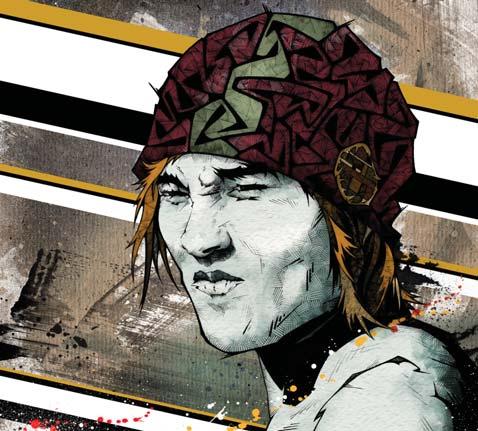
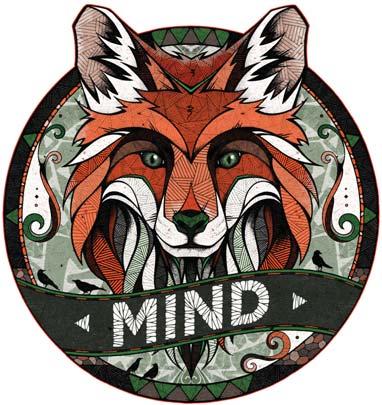
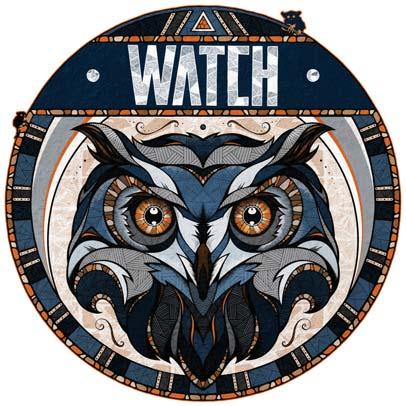
Studio: Winsstraße 45 / 10405
Mobile: +49 (0) 176 233 695 70
Web: designerpreis.com
Berlin
Behance: behance.net/designerpreis

Facebook: facebook.com/andreaspreisillustration
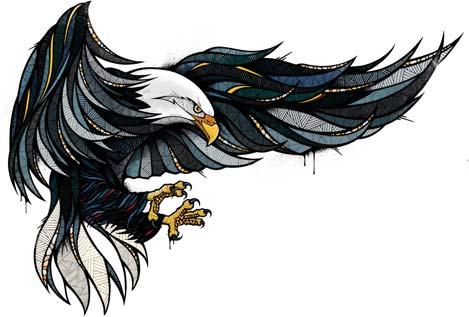
Twitter: twitter.com/andreaspreis



